

28 Top Europe Packing List Items for 2024 + What to Wear & NOT to Bring

From London to Lisbon and Istanbul to Iceland, Europe is extremely varied. It’s important to know what to pack because in a single trip, you may find yourself trekking up the snowy Swiss Alps, sunbathing on the Mediterranean coastline, then trudging through the rainy cobblestone streets of Paris. Even destinations only a short flight away can feel on opposite ends of the Earth.
Asher and I have been to Europe 9 times and used our extensive experience to compile this list of items that we feel are useful on any European trip. I’ll also cover what to wear in Europe , what items NOT to bring, and some important FAQs. Bon voyage!

What to Pack for Europe – 28 Essentials
1. neck wallet.
Europe is notorious for its pickpockets, especially in cities like Paris, Rome, London, Barcelona, Amsterdam, and Dublin. An RFID-blocking neck wallet allows you to easily conceal your cash, credit cards, phone, eyeglasses, and hotel keys while not screaming, “I’m a tourist!” How? The neck wallet can comfortably hide under your blouse, t-shirt or jacket, making it next to impossible for pickpockets to reach. This particular brand is extremely well-made and affordably priced.

View on Amazon.com ➜
2. Lipstick-Sized Portable Charger
Getting lost in Paris at night with a phone that just ran out of batteries was a pretty frightening experience, and not one I’d like to repeat. That’s why I always carry this tiny lipstick-sized portable charger in my purse or neck wallet. It’s super reliable and ensures I will never be without a way to look at a map, call an Uber, or to communicate with my family or friends when I’m in a pinch.

3. Virtual Private Network (VPN)
A high number of websites (or parts of websites) get blocked in many European countries. For example, often, music videos and movies on YouTube or Netflix won’t be viewable. A good VPN like NordVPN will make it possible to visit every website without censorship.
Perhaps more importantly though, is the security that a VPN gives you. According to an IT Governance report , there were over 110K breaches in Europe during the month of November 2023 alone! We learned this the hard way in Paris where we had our credit card number stolen after using what we thought was a secure Wi-Fi network at an Airbnb rental. Whenever you go on someone else’s Wi-Fi, whether it’s at a café, airport, Airbnb, or hotel – you’re potentially putting your passwords, credit cards, and identity at risk of being hacked. With a VPN, you protect your sensitive data on any device with just 1-click. And it’s super affordable!

View NordVPN.com Options ➜
4. Universal Power Adapter
European plugs and outlets are about as varied as their terrain. The most common outlets in Europe include Type C, E, F, and G. To ensure you don’t get stuck in a country without a reliable way to charge your phone or laptop, I recommend bringing a universal power adapter that will work in all European countries (except for Italy ). This one pictured comes with two USB ports, a built-in fuse to protect your devices in case of a power surge, and a lifetime replacement guarantee .
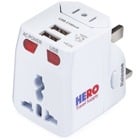
5. Natural Jet Lag Relief Pills
Jet lag is rough when flying to Europe, so I was completely overjoyed when a friend told me about NO JET LAG. Not only is it 100% natural , but it has literally zero negative side effects. The groggy, fuzzy, heavy, exhausted feeling lifts faster and allows me to get on the move upon arrival.
Pro Tip: If you find yourself anxious or jittery during flights, another solid way to stay relaxed is with this Jet Lag Relief Essential Oil . It’s mild, soothing, and combats frazzled nerves. Put a few drops on the outside of your sleep mask and feel your body start to settle down.
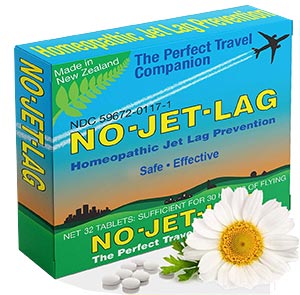
6. Travel Insurance for Europe
Insurance is mandatory for parts of Europe and we never leave the country without it. Europe is not a cheap place to foot a hospital bill (especially when paying out-of-pocket), and accidents happen when we least expect them. Since your domestic provider typically does not follow you overseas, we recommend protecting your travel investment against situations like cancellations, delays, theft, baggage loss, medical transport, and international hospital expenses. We had a friend break her arm hiking in Europe. Luckily, she didn’t have to pay the $35K airlift or $8K in medical bills because she had insured her trip for peace of mind and it really paid off.
Our go-to provider is Faye because they are evolving the entire insurance industry! Instead of having you fill out piles of tedious paperwork, jump through hoops, and cross your fingers to get a reimbursement – Faye handles everything on their mobile app. They wired us the funds when we needed it most instead of hanging us out to dry. Plus, in case something comes up, they can even cover you for “trip cancellation for ANY reason.”
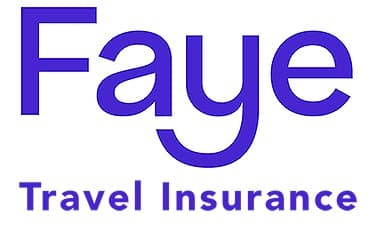
Get a quote in less than 60 seconds with Faye ➜
7. Quick-Dry Travel Towel
Having your own travel towel in an unfamiliar hotel or B&B can be a lifesaver. These microfiber towels weigh less than half a pound and are ultra-packable. You will find yourself using them to dry off after showering or swimming, as a picnic blanket, a beach towel, or to face whatever moisture you come up against ! They dry 10x faster than cotton and without a doubt, are perfect for day trips and general travel alike.
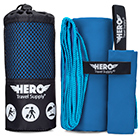
8. Packable "Just In Case" Bag
This bag is genius because it takes up literally no space. Collapsed, the “Just in Case” bag is about the size of a folded tank top — but when full, it’s a large personal item bag that fits under your airplane seat. It also attaches to the handle of your carry-on luggage for smooth airport transit. Throw it in your larger suitcase at the start of the trip – it’ll come in handy for all the souvenirs (and chocolate!) you will inevitably pick up along the way.
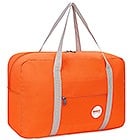
9. Windproof Travel Umbrella
In order to be able to enjoy yourself even in the midst of rainy days, you need a good quality travel umbrella like the one pictured. I prefer bringing this puppy along instead of buying an overpriced one from a side street vendor that is sure to break. This one is windproof and super compact at only 12-inches when collapsed. It also comes with a lifetime replacement guarantee !
Pro Tip: If you’re heading to an extremely rainy climate like Ireland or Iceland and want to be sure to stay dry even in unpredictable storms, throw these disposable ponchos in your daypack and wear them under your umbrella. Here are our favorites for adults and children .
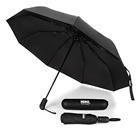
10. Hanging Toiletry Bag
European “water closets (W.C.)” and bathrooms are considerably smaller than the ones you’re probably used to in the U.S. — and full of charming quirks! This said, you might find your B&B in Prague or a tiny hotel in Rome won’t have ample bathroom countertop space for your makeup and skincare routine.
I like to bring this ingenious hanging toiletry bag that easily hangs on any door or wall to ensure I always have as much space as I need to stay happy, sane, and organized. This one boasts 3 external pockets and 4 large internal pockets so that you can fit everything you’d need for a multi-week trip across Europe. I leave it packed with my smaller travel products so I can just grab it and GO when adventure calls. It’s a brilliant find and you’ll never want to leave home without it!

11. TSA-Approved Silicone Travel Bottles
Try these cute travel-sized bottles that will give you the perfect amount for a normal length trip abroad. They are TSA-approved so you won’t have to throw away any part of your precious regimen and all bottles will fit easily in the hanging toiletry bag (or keep them in their own case). It’s always more challenging to find the products that you might love at home while overseas, so if you have skincare and haircare products that you like, it’s best to bring them along.

12. Europe eSIM Data Service (Avoid Roaming Fees!)
We used to purchase a physical SIM card for every trip and location, but this is an antiquated solution to a modern problem. Some airport and street vendors will sell you a janky card that won’t even work, and collecting plastic is a hassle that can be remedied by a 100% digital approach.
Saily offers a worldwide eSIM service that offers data wherever you may roam! They are setting a new standard for international internet use – some of our favorite perks are customizable data options based on your specific trip, lower roaming rates, fewer cybersecurity risks, and less waste. Not to mention, you can easily switch carriers by scanning a QR code from your phone, which is perfect if you plan to gallivant around Europe or change locations a few times.

Pick a data plan at Saily.com ➜
13. Luggage Straps
As a fairly underrated travel accessory, luggage straps are a must-have item for any traveler. They will ensure you don’t fall victim to the nightmare of having your suitcase bust open during transit, leaving all of your dirty laundry on display because of a faulty zipper or lock.
These heavy-duty straps can withstand more than 700 lbs of force-tension and will extend the life of your luggage since your bags won’t have to work as hard to hold all of your European souvenirs together! My favorite perk is that it’s way easier to spot your suitcase in a crowd of conventional bags – between the bright colors and built-in ID card, your cases will be easier to identify as you hop between airports, train stations, ports, and buses (where often, thousands of bags are all thrown together or consolidated). These belts are TSA-approved and offer real peace of mind as you repeatedly hand over your items on an international journey.

14. Discounted Tickets on European Attractions
Whether you are climbing the famous Eiffel Tower , trekking the Acropolis of Athens , standing in awe of the Roman Colosseum , or witnessing Barcelona’s Sagrada Familia – Europe has a plethora of history and magic to offer you. Where else can you swim in a geothermal spa , explore medieval castles , or stare into the eyes of Da Vinci‘s beloved Mona Lisa ?
Get Your Guide is our favorite booking service for top-tier excursions that really bring your trip to life. Building a dream itinerary is easy since you can compare reviews to ensure you’re reserving the best activities. GYG even offers cancelation up to 24-hours before your tours, making it a flexible option for all adventurers.

See all European attractions at GetYourGuide.com ➜
15. Packing Cubes
Europe has so many climates (cool, desert, alpine tundra, highland, and Mediterranean) . Prepare for any scenario with these packing cubes that are a total game-changer! You can easily categorize your suitcase for a stress-free traveling experience (use one cube for tops, one for bottoms, one for dresses, swimsuits, etc.) Gone are the days of digging through your luggage to find that long-lost sock . We also love the two bonus laundry bags that keep your dirty clothes from intermingling with your clean ones.
It’s available on HeroTravelSupply.com with an exclusive 15% discount using the coupon code “ HERO ”.

Or view on Amazon.com ➜
16. Cooling Towel
Does anyone else get a bit crabby when they get hot? (Hands please!) This cooling towel is great for the entire family because I think we all hate memories of near melt-downs in 90-degree weather. All those potentially disastrous moments — waiting in line to see Big Ben with crying little ones with no shade in sight… or walking to get the Barcelona Metro mid-August in a humidity-induced daze have since faded away merely because I discovered this remarkable little towel! It’s non-toxic, chemical-free and once you wet the material, the ice-cold cooling effect lasts for 30-60 minutes before you simply wet it again to restart the process.
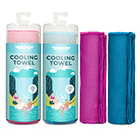
17. Motion Sickness Patches
For those that suffer from motion sickness, these Anti-Nausea Motion Sickness Patches are amazing for planes, trains, and automobiles! Winding European roads can be especially curvy with lots of bends and turns, many of them carved into the sides of vertigo-inducing mountains. These patches are a miraculous herbal remedy that saved me on many occasions – trust me, they work. Don’t call in seasick or carsick to your vacation, use these instead.
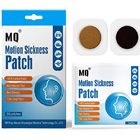
18. Luggage Locks
These TSA-approved luggage locks will protect your valuables from getting stolen while your luggage is in transit. I also like to use one on my backpack while exploring crowded cities to keep pickpockets’ hands out of my stuff and they’re perfect for locking lockers in hostels or tourist sites. I seriously never travel without at least one or two combination locks, it truly helps with my peace of mind.
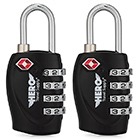
19. Travel Daypack
If you’re planning any day trips, a good foldable daypack should be at the top of your packing list. This Venture Pal backpack is the perfect blend of features, quality and affordability. We’ve found it to be comfortable, durable, and has numerous little compartments for all our needs. It’s also super lightweight and folds into itself so that you can store it easily when you’re not using it. Available in many colors.
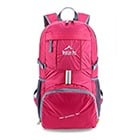
20. Wellies (AKA Rain Boots)
Wellies are essential footwear for Europe since many hot spots are rainy year-round (London, Paris, Zurich, Milan, etc.) But even sunny destinations have a wet season. These rain boots are made to withstand the elements, keeping your feet dry in surprise downpours and combating any muddy terrains with non-slip traction. Add waterproof shoe bags to your suitcase to ensure you don’t get any dirt, mud, or street funk on your clean clothes!
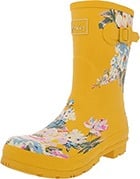
21. Water Bottle with Built-in Filter
Water quality is tough to predict in many parts of Europe – some places have delicious, drinkable tap water. Others have little to no drinkable water available without buying expensive pre-bottled water that is bad for the environment. I always recommend that travelers bring their own water bottles with a filter, to ensure that their water is comfortable to drink. This water bottle has a built-in filter so all you have to do is fill and drink.

22. Gorgeous Outfit
Europe’s restaurant scene is killer , and there are endless opportunities to enjoy the nightlife. Even if I’m planning a fun family trip, I always pack at least one or two outfits that I would feel beautiful wearing in the evenings. It’s not always easy for me to find clothes on Amazon that I like, but I LOVE this jumpsuit because it’s easy to pack, doesn’t wrinkle if it’s tossed into my bag, and looks great on so many body types.
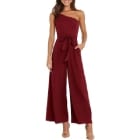
23. Women’s Comfy Flats
Many say that Europe is best enjoyed on foot. From museums to cafés to just taking in the architecture, you will be walking A LOT. Summer months can be hot with high chances of humidity and rain. You’ll want something breathable and comfortable, especially if they get wet in a sudden downpour. These Crocs (yes, Crocs?!) are actually super cute cozy and cool on muggy days. They are my feet’s most-loved flat choice.
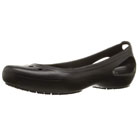
24. Activated Charcoal (Food Poisoning Fix)
Europe boasts countless adorable restaurants and cafés, but… many won’t be as clean as the places you frequent at home and food poisoning happens. The most surprising was when I actually got SO sick from a $250 Michelin-rated meal in London. (Ok, I did eat roast pigeon, but I thought while in London, why not try some of the local fare!) Please don’t ruin your trip by not bringing these along. They will shorten the duration of the food-borne illness dramatically and in many cases, can alleviate the problem immediately.

25. Cheers Hangover Relief
These supplements use vitamins and liver-detoxing herbs like milk thistle to remove alcohol from the body more quickly. Asher and I aren’t big drinkers, but the wine in Europe is divine. When making the most out of pub tours, vineyard stops, and gourmet dining – keep your body in tip-top shape with these hangover-prevention pills. You don’t want to spend long days in museums or on historical tours with a looming headache and fatigue. If you’re planning to drink, give them a try!
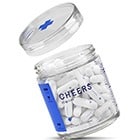
26. Deodorant Wipes
Europe in the Summer is a hot and muggy wonderland. While you’re immersed in the historical beauty all around you, you do NOT want to worry about dripping through your couture. I personally hate reapplying deodorant to my already sweaty armpits, and I will no longer succumb to washing my face and underarms in a sink that has no paper towels to dry myself. These non-toxic, natural wipes do the trick! They fit nicely in my purse or day pack, and with a quick wipe, I’m as fresh as a daisy!
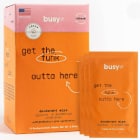
27. Rolling Suitcase
Choosing a good suitcase is like choosing a good partner – both will need to be durable, reliable, secure, and ready to come on many adventures with you (and look good while doing it!) The apple of my eye is this Wrangler Rolling Suitcase . It is massive and really exceeded my expectations. Made of 100% nylon, it has the lightness of a duffle bag but the sturdiness of a regular suitcase. It will be a breeze to maneuver through crowded airports and cobblestone streets (or hauling up typical 5-story buildings with no elevator; you will thank us). Arrive at your hotel in utter comfort, at an even more comfortable price!

28. Reusable Wine Bags (Leak-Proof)
Since these prevent bottle breakages in transit, these reusable leak-proof bags are great for drinkers and non-drinkers alike. I use them for souvenirs and family gifts like French perfume bottles, Italian olive oils, delicate ceramics, literally anything made of glass ! With thick bubble padding and a double seal, you can get a ton of use out of them. And of course, between the Chianti, Bordeaux, Champagne, Cava, and any other European spirit you stumble upon – these will be a thoughtful addition to your checked luggage.
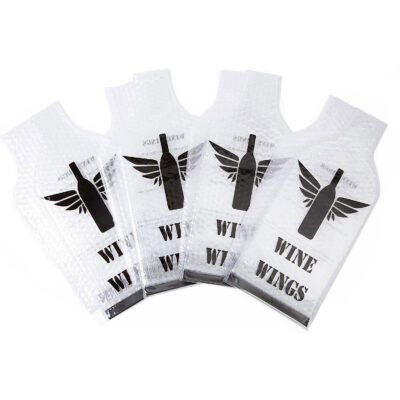
1. Travel Stroller or Double travel stroller
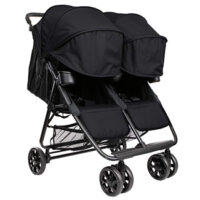
Pro Tip: If you have older children (ages 5+) consider bringing along a double-seated stroller. You’ll be walking miles and miles in Europe and kids get tired easily. Give their little legs a rest and your sleepy tots will probably take a nap on the ride home.
View on Amazon.com ➜
2. Travel Car Seat and Stroller Combo for Infants
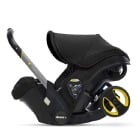
Note: All airlines will check your car seat at the ticket counter free of charge. View on Amazon.com ➜
3. Travel Carseat for Toddlers and Little Kiddos
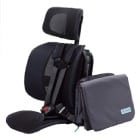
Pro Tip: A Car Seat Luggage Belt is an ultra-portable travel solution to work with what you already have. The strap allows you to attach your car seat to your suitcase. So in a matter of seconds, you have an effortless mode of getting your kids from airport to airport without having to push a heavy stroller around (plus all carry-on luggage). Works like a charm!
4. Stroller Clips
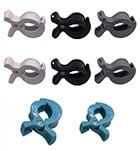
5. Woolino Sleep Sack
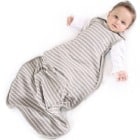
It’s a great way to keep babies cozy on an airplane and ensure they feel safe during long travel days. It’s also helpful for unpredictable temperatures in hotels. It’s a bit expensive but also worth it since it replaces loose blankets you would otherwise need in the crib. We don’t have to travel with many blankets, which also keeps our luggage weight down.
6. Baby Bjorn Travel Crib
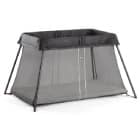
Pro Tip: Before you travel, have your tot take a few naps using this travel crib and create a consistent routine around it. Your babies will come to perceive it as a place of solace. This at-home practice will be invaluable to them connecting with it in new and unfamiliar settings.
7. Homeopathic First Aid Kit
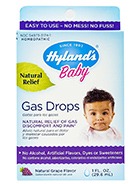
We try to opt for the homeopathic approach to medicine because it is a natural and often botanical way to treat the underlying cause of conditions – aiming to get you off the medicine sooner rather than becoming reliant upon it. We love that these natural, safe, effective remedies don’t cause harmful side effects and are safe for children. Natural remedies actually stimulate the body’s ability to heal itself and boost your baby’s natural immunity. They have saved us repeatedly during teething, tummy aches, or sickness. I can’t recommend them enough.
- Natural Gas Relief – We have many Hyland baby products and love that they are formed with NO artificial flavors or dyes. They relieve the pains of gas, stomach pressure, burping, constipation and bloating, and restlessness.
- Echinacea Drops – We give our children these immune-boosting drops before any trip and they’ve yet to become sick while traveling. They taste like nature’s candy and can be given to children 6-months+. Crafted with wild echinacea flower, it provides natural health in a bioactive compound.
- Baby Calm – As the name indicates, these tablets are wonderful for calming your little one and keeping them relaxed. For a baby that is restless, teething, or gets fussy and irritable while traveling – these are a lifesaver. They instantly reduce baby’s irritation so everyone can get back to sleep!
- Earache Relief – By age 3-5, nearly every toddler has had an ear infection and it is one of the most common reasons young parents go to the doctor. These all-natural drops are a must-have for parents; they will reduce symptoms like pain, irritability, fever, and sleeplessness, providing a safe application in the form of a dropper.
- Baby Vitamin C – Mary Ruth is one of our favorite brands because it’s organic and what you see is what you get – the only ingredient in this product is organic Vitamin C. It is an incredible immune booster, powerhouse antioxidant, and protects against free radicals. I start to give our children this a few days before we travel.
- Camilia Teething Relief – Prevent teething pain before it begins with these natural relief drops. We aim for homeopathic solutions that target the root cause of the pain instead of just masking the symptoms. These droppers also alleviate digestion issues related to teething, restoring peace for the entire family.
See more tips on traveling with babies in our guide on best baby travel gear ➜
Other Europe Packing List Items Not to Forget
- Travel First-Aid kit
- Compression Flight Socks
- Facial Cleansing Wipes
- Affordable Underwater Camera
- Reusable Travel Wine Bags
- Steripod Toothbrush Cover
- Dental Floss
- Hand Sanitizer
- Mini Hairbrush
- Nail Clippers
- Insect Repellent
- Loofah Glove
- Noise-Canceling Headphones
- Headphone Splitter
- Flash Drive
- Memory Card
- Electronic Organizer Case
- Travel Toilet Paper
- Shoulder Bag Women
- Shoulder Bag Men
- Waterproof Phone Case
- Travel Pillow
- Travel Sheet
- Personal Item Travel Bag
- Passport photos
- Other European packing lists you may like:
- Amsterdam |
- Barcelona |
- Camino de Santiago |
- Castle Trip |
- Copenhagen |
- French Riviera |
- London & UK |
- London Study Abroad |
- Mediterranean Cruise |
- Santorini |
- Switzerland |
- Vatican City |
What Should I Wear in Europe?
Europe’s weather varies a lot by country and by season, so it’s a good idea to do a little research on your specific destinations. Three things you should expect with a trip to Europe are:
Walking: You’ll be doing a LOT of walking. Bring shoes that are comfortable but that still look nice.
Fashion and Style: No, you don’t need to dress like a model, but you should look nice to fit in. Choose mainly dark colors, especially dark jeans if you’re wearing jeans.

The weather often varies a lot across Europe so you will want to pack clothes that are versatile. European women are quite stylish so choose outfits that are more on the smart casual side. Ankle boots are very popular and a pair of nice sneakers or flats are great to have while exploring around. Choose dark colored pants, jeans, or leggings to wear with camis, blouses, long knitted sweaters or cardigans, and dresses. Outside, leather jackets are popular and a scarf is essential. Accessories to add to any outfit include retro shades with a leather saddle bag or vintage rucksack to carry your things. What should MEN wear in Europe? – (Click to expand) Below is a sample men’s clothing list. (All items link to Amazon.com for your convenience).

Packing for the Seasons in Europe
Spring – march, april, may.
Spring counts as one of the shoulder seasons for Europe, and is an ideal time to travel to many locations which will have sparser crowds and still agreeable weather. Although, some places will be wet and dreary at this time, so check the specs on your destination before you pack.
Rain gear is absolutely crucial during spring, so bring a quality windproof travel umbrella and a good rain jacket . Boots are a good idea in most places, just in case you find yourself slogging through mud or wet grass. Temperatures average between 41°F and 58°F (5°C to 14°C).
SUMMER – June, July, August
European summers are lovely, and typically comfortably warm – though parts of Europe can endure searing heat during the peak of summer.
The downside of this nicer weather is that the summer is when most tourists visit, making it high-season. If you can handle the crowds and the inflated prices, it’s a gorgeous season to visit!

You probably won’t need any heavier outerwear unless you’re traveling to destinations farther north or at higher altitudes. Temperatures average between 59°F and 78°F (15°C to 26°C).
FALL – September, October, November
Fall or autumn is the second half of the shoulder season in Europe, and brings milder weather and again, smaller crowds. Prepare for some precipitation (usually drizzle) and chill, but expect tolerable to fair conditions. As always, check on averages for your destinations to be sure!
Autumn in Europe calls for a light jacket , dependable waterproof walking shoes , and a couple of scarves to keep warm should a chillier day arise. Temperatures average between 45°F and 60°F (7°C to 16°C).
WINTER – December, January, February
Winter in many areas of Europe is cold, but generally mild. Depending on your location, you may experience anything from chilly seaside winds to blustery gales and everything in between. Mostly, you’ll see days that chill you and necessitate hot chocolate and warm jackets .

Churches – Europe doesn’t disappoint when it comes to the number of beautiful, magnificent churches and other holy sites. From the medieval cathedral of Notre-Dame de Paris to the world’s largest church at St. Peter’s Basilica in Vatican City, and the 700-year-old Westminster Abbey in London, there’s a lot to see! With any religious site, it is important to dress conservatively. Shoulders need to be covered and women should avoid wearing anything with a deep v neck or tops that expose the midriff or back. Dresses, skirts, and shorts can be worn if it goes below the knee. Keep in mind, many places have now banned selfie sticks so leave them at home.
Museums and Galleries – You can find some of the world’s best museums in Europe. What was once a medieval fortress now houses the most famous painting, Leonardo Da Vinci’s Mona Lisa, at the Louvre in Paris, France. There’s also the Rosetta Stone at The British Museum in London, and insights into Athenian life at The Acropolis Museum in Athens. Dress smart casual if you are planning to visit any museums or galleries. It can often get quite chilly so bring a shawl or sweater to stay warm. You will also be doing a lot of walking, so make sure to wear comfortable shoes such as flats, loafers, or sneakers. Museums tend to be very quiet so avoid anything with a heel that makes a lot of noise while walking.
Eating Out – Europe is a food lover paradise offering the best of French, Italian, Greek, and Spanish cuisine just to name a few. From traditional markets offering local products to the best of fine dining, you can find an array of foodie experiences. If you are looking for the best of the best, book a reservation at a Michelin starred restaurant such as Arpège in Paris, The Ledbury in London, or La Pergola in Rome. Europeans tend to dress up in the evenings so pack a few nicer pieces for dining out. Men can wear leather shoes with trousers or dark fitted jeans with a button up shirt and blazer jacket. Women can wear wedges or a pair of nice flats with maxi dresses for warm weather or dark slim fit trousers with a nice blouse on top and a few accessories during colder months.
What NOT to Take to Europe
1. don’t bring lots of electronics.
I recommend packing a camera and a Kindle , and maybe your laptop, but don’t bring much more than that. Unless you have other electronics you’ll really need on your trip, it’s just not worth the risk of them being lost or stolen.
2. DON’T PACK a bath towel
It’s a good idea to bring a towel with you to Europe, but regular towels are bulky and heavy, and take way too long to dry. Take a quick-dry travel towel instead – they’re much lighter and smaller, but still plenty absorbent.
3. DON’T TAKE expensive jewelry
Similarly, you don’t want to risk valuable or sentimental jewelry getting lost or stolen on the road. Plus, wearing a lot of flashy jewelry can make you a target. Pack a couple of pieces you’ll want to wear on your trip, and leave the rest at home.
4. DON’T BRING lots of cash
Except for in very rural areas, nearly any place you visit in Europe will have ATMs, and many spots take credit cards, too. There’s no need to take a ton of cash and risk it being lost or stolen.
5. DON’T PACK a bunch of books
Some hostels and cafes in Europe have book exchanges where you can pick up a free paperback and drop it off at a future exchange when you’re done. Or, you can simply load up a Kindle , and do your reading on a lighter device that’s easier to pack.
6. DON’T TAKE a Europe-wide guidebook
Lonely Planet and many other publications have a guidebook that covers all of Europe, but they rarely have sufficient detail on any individual place. Do your generic Europe research online, and get the guidebooks for the specific countries or regions you’ll be visiting.
7. DON’T TAKE too many clothes
Pare it down to a few outfits, and if you run out of things to wear, it’s not hard to find a place to do laundry in most parts of Europe.
8. DON’T PACK overly casual clothes
Europeans tend to dress well and dress up more than North Americans do. While you’ll want some casual clothes for hanging around your hostel or hitting the pool or beach , I’d suggest bringing slightly nicer clothing for your Europe trip.
FAQs About Trips to Europe
1. is the tap water in europe safe to drink.
You can drink the tap water in most of Europe. However, that is not true for countries in the Balkans and the Former Soviet Union. In those areas, travelers should be careful to avoid tap water unless it has been treated. In Eastern Europe, you may also want to avoid untreated tap water outside the major cities to be safe. With this being said we recommend you always use a filtered water bottle to be sure.
2. How prevalent is English in Europe?
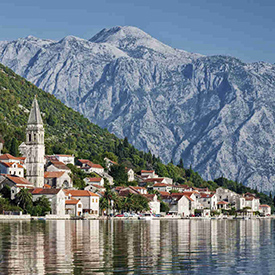
Among European countries, English is the primary native language only in the U.K. and Ireland, but it is widely spoken as a second language elsewhere. In Nordic countries and the Netherlands, a large portion of the population speaks English well, even in smaller towns. In Western Europe, you won’t have much trouble finding English speakers in major towns or popular tourist sites, and most people who work in the tourism industry speak English.
The farther east you go, however, the less English you’ll encounter (though hotel staff still commonly speak English). English speakers can certainly still travel in those countries, it just might be a bit more challenging.
3. What countries in Europe are the cheapest to visit?
In general, Eastern Europe is significantly cheaper than Western Europe. Hungary, Bulgaria, Romania, Poland, and the Czech Republic are especially popular budget travel destinations, but Slovakia, Serbia, Latvia, and Ukraine are also very cheap to visit.
4. Is it safe for women to travel alone to Europe?
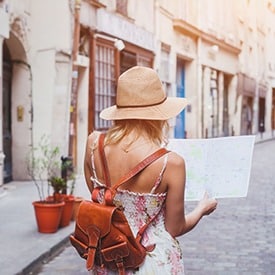
Yes! Women should have no more fear about traveling alone than men should – especially when traveling to places in Europe. Stay in areas that are safe for tourists, don’t flaunt the fact that you’re a tourist, and take standard safety precautions with your money. The one thing that may be more applicable to women than to men is that you shouldn’t go walking alone at night, but that’s standard anywhere.
Don’t carry excess cash, take familiar routes when possible, try to avoid out-of-place clothing, and relax! You’re more likely to blend in instead of sticking out as a tourist if you look like you belong there. It will likely make you more comfortable to research current country-specific travel notes here .
5. What vaccines or medicines should I get before traveling to my destination?
Since each country will have its own regulations and mandates, stay up-to-date through the CDC’s Destination Tool . It allows you to select the countries you are visiting and check real-time updates on the vaccines and medications that you need for your next trip. It is also recommended to consult a physician at least one month before you depart to ensure you are current on all required vaccines and medicines for that particular destination.
If you are traveling to several countries with unique vaccine requirements, confirm the cross-over and discuss your specific travel plans with your doctor. If you’re only in a country for a short duration or you’re only remaining in the touristic area near the coast (for example, while cruising ), certain vaccines may not be necessary.
6. Is it worth getting a Eurail pass?

Europe’s train systems are highly lauded, and many backpackers and other travelers in Europe plan their trips around riding the train from country to country. But many find themselves wondering, “Is a Eurail pass worth it?” Whether a pass is the cheapest option depends on how many train rides you’ll be taking, where you’ll be riding, and how far in advance you could book tickets.
In general, a pass will save money if you’re visiting a lot of different countries and/or taking long train rides, while buying individual tickets is cheaper if you’re booking far in advance or if you’re traveling exclusively in Eastern Europe. But, one of the biggest perks of using a pass is the flexibility: last-minute train tickets are expensive, so if you want to be able to travel with more spontaneity, a pass is the way to go.
7. Do I need to tip in restaurants in Europe?
Restaurants in Europe often note on the menu or bill that a service charge is included, in which case an additional tip is not necessary. Otherwise, tipping is not required but it’s customary to round up the bill. If you do decide to tip, make sure to do it in cash and hand it directly to your server. The major exception to this rule is Scandinavian countries, where tipping is not generally practiced.
8. What is the best way to get around Europe?

Public transportation is well developed throughout most of Europe, and it’s generally easy to get from country to country. Most trains in Europe are comfortable and efficient, and train travel is probably the most popular way to get around, whether you opt for a Eurail pass or individual tickets (see above). For most routes, though, the bus is cheaper than the train, and Eurolines is the main network of international buses in Europe. With budget airlines like Ryanair and EasyJet, flying between countries can be an affordable option, too; just check Google Flights or a site like Kayak to see all the flight options.
9. Where can travelers get off the beaten path in Europe?
In general, Western Europe is much more traveled than Eastern Europe, and capital cities and historical sites are often heavily visited. To get off the beaten path, head to rural areas or to countries in the Balkans or the Former Soviet Union, which see relatively little tourism.
10. Do I need a visa to visit Europe?

To visit countries in the Schengen Area, which currently includes 26 European countries, citizens of the U.S., Canada, Australia, New Zealand, Japan, South Korea, and most of Central and South America do not need a visa for tourist visits of up to 90 days (within any 180-day period). The U.K. is not part of the Schengen Area, and allows citizens of most of the same countries to visit visa-free for up to six months. Check here to verify the current requirements.
11. What is the best time of year to visit Europe?
In general, the best seasons to visit Europe are the spring and fall, particularly in May, June, and September. During these months, prices are lower than during peak season, and the weather is agreeable in most areas.
12. Are there any good Mediterranean cruises?

Absolutely! Apart from the Caribbean, we believe the Mediterranean is the best place to do a cruise. Why? Well it’s simple, you often get to see six different countries in the space of 10-days and many itineraries have only a couple of cruising days. This means you can be out exploring the ports every day and finding the best food and best excursions to do while enjoying such an array of different cultures in such a short time. If you’re wondering what to pack for a cruise , read our full guide.
13. Are there any recent travel restrictions to be aware of?
The European Union (the political union of 27 major European countries) applied a wide range of safety measures regarding the COVID-19 pandemic. These requirements have varied from negative diagnostic tests to not allowing in non-citizens for non-essential travel, essentially locking down the borders.
As of late 2022, Travel restrictions are lifting more and more – France, Finland, Greece, Croatia, Portugal, Denmark, and others are relaxing the vaccination requirements. Iceland and Norway have removed nearly all COVID-19-related travel restrictions.
If you intend to travel in the E.U., you should check the European Commissioner’s Platform for real-time border updates. You can also visit Travel.State.Gov for a traveler’s checklist on documentation requirements and they are a great resource for Country Specific COVID-19 Information .
14. How can I save money while traveling in Europe?

There are lots of ways to save money in Europe. For starters, stick to hostels or try couch-surfing to cut your accommodations costs. Car rentals and taxis can be pricey, so use trains and buses to get around instead, or just walk. Limit eating out, and pick up groceries for some of your meals; look for hostels or vacation rentals that have kitchens where you’ll be able to cook.
Try eating out at lunch instead of dinner too, as many restaurants in Europe have good-value (and filling) lunch specials. Skip the bottled water, and just bring a reusable water bottle that you can keep filling up. And of course, putting a limit on your alcohol consumption will always save money.

Lyric Fergusson

Travel Tested Europe Travel Essentials: The Only Checklist You Need!
You’re planning a European trip and you need a Europe travel essentials checklist with all the travel-tested essentials for traveling to Europe so that you can have an amazing, stress-free trip. Well, good thing you landed exactly in this spot!
We all know planning a trip to Europe is a big deal and usually, it’s a bucket list travel goal getting checked off. The last thing anyone enjoys is the hassle of not having something they need!
The good news is I’ve traveled to Europe hundreds of times and along the way, I’ve made my fair share of Europe travel mistakes. But, they were all learning experiences! (Can you tell I’m a teacher?!)
So, I’ve put together everything I’ve learned in this ultimate guide of essentials for European travel so that you’re 10 steps ahead of the game before you even arrive at the airport.
Travel-Tested Europe Travel Essentials: The Only Checklist You Need!
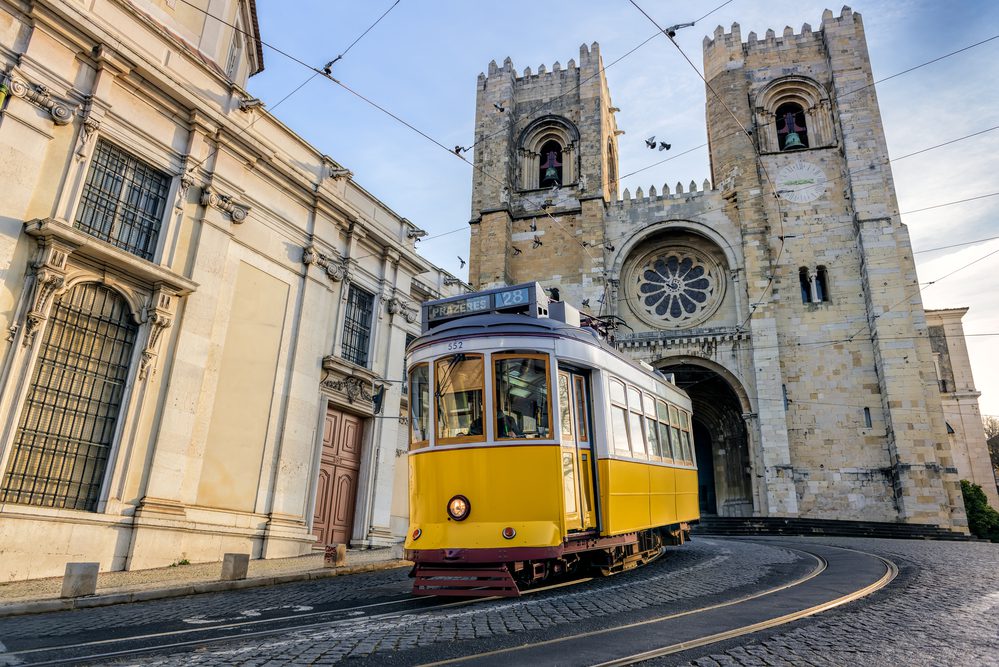
You can fill countless suitcases ( spoiler: don’t do this) with whatever and however much you want but without the right things for your European adventure, a potential headache can steal all the fun from seeing the Eiffel Tower or Rome’s Colosseum.
So, let’s skip the headache and build your European travel checklist the right way!
Essentials for Traveling to Europe: The Fundamentals
When planning a trip to Europe, there are European travel necessities that fall into a few categories. Some are absolute musts while others are more personal or for comfort.
Let’s start with the fundamentals. After all, it doesn’t matter if you’ve packed the perfect outfits if you can’t get past airport security.
Whether you’re heading to Italy , Iceland , or Spain don’t leave home without using this guide as your Europe packing list!
Obvious, but a total deal breaker for international flights if there’s an issue with yours. Be sure it’s in good condition with no visible damage. Also, check that it has at least 2 pages with no stamps and 6+ months until its expiration date. I always keep my passport and important documents in this protective cover , but also for my sanity so I always know where they are! This passport case is great if there are multiple passports to store.
Driver’s License
If you’re renting a car, you will need to show this to pick up your vehicle. But even if you’re not, it’s smart to have another official form of identification with your photo on it in case something happens to your passport.
Maps for Driving & Getting Around
If you’re driving in Europe, download Google Maps for the area(s) where you’ll be driving before leaving home. From the Google Maps app, click on your name or initial in the top right corner. Select “Offline Maps.” Then, click on “Select Your Own Map” at the top. Highlight the area(s) where you need a map and download it. When you arrive at your European destination, you’ll be able to navigate in the car even without an internet connection. Similarly, the Maps.me app allows you to download maps to use offline. These maps can be especially great for when you’re out walking in a city because they show local shops, restaurants, walking paths, and more.
Using your debit card at a local ATM once you arrive is the savviest and most convenient way to get local currency at the best possible exchange rate. Also, debit cards typically have a Visa or MasterCard logo on them and require a PIN. In some cases, a purchase you need or want to make will require a card with a PIN like getting gas in a remote part of Iceland or buying entry tickets to a castle in Germany. ProTip: The Charles Schwab debit card refunds 100% of any ATM or withdrawal fees no matter where you are in the world. Don’t have an account? It’s free to set up. Plus, you can deposit a small amount into your newly created “travel account” to use for your trip. If your wallet gets stolen or you encounter any fraud, only this account with a small amount of money is at risk instead of your main bank account.
Travel Rewards Credit Card (with no foreign exchange fees)
For 95% (if not all) of your purchases in Europe from restaurants to shops, hotels, top sights, and museums can and should be made with a credit card. I recommend (and use myself!) a travel rewards credit card like this for every purchase possible for fraud protection (i.e. when that bowl you shipped from Tuscany never arrives) and for the best possible purchase exchange rate with no fee. ProTip: When making credit card purchases in Europe, you’ll be asked if you want to pay in Euros or U.S. dollars. Always choose Euros. The credit card processor is secretly charging you a convenience fee that’s baked into that seemingly helpful U.S. dollar conversion.
International Driver’s License
If you are renting a car in Europe, some countries like Italy, Spain, Greece, Germany, and others require this document. The confusing part is car rental companies will let you rent your vehicle even without this document. You only discover that you have a problem (and possibly a hefty fine) should you be pulled over by local police. Apply through AAA , either at their nearest branch or by mail. It costs $20 + tax. You’ll also need 2 passport photos which they can take for you at the branch for a small added fee. The permit is good for a year and can potentially save you a lot of money if you get caught without it.
Travel Insurance
Important, especially if you don’t have a travel rewards credit card that offers at least some basic protections. But whether something happens before your trip and you need to cancel or you fall on some uneven cobblestone and break a wrist, you want to make sure you’re ok, as is the travel investment you made. Plus, most multi-day tours require that you show proof of travel insurance .
Photos/Copies of Important Documents & Travel Bookings
Take photos of your passport ( a must! ), driver’s license, credit cards, travel reservation confirmations, etc, and store them in a cloud-based place like Google Drive or Dropbox. If you lose anything, you can access the photo from any device with an internet connection. You can also print copies of flight, hotel room reservation(s), and activity bookings if it adds peace of mind.
And even though the things above will help you navigate all the logistics of international travel, don’t leave home without the Europe travel essentials you personally need for an incident-free trip.
Prescription Medications
Contact lenses + at least 1 extra pair, feminine hygiene products.
Ladies, whether you use this , this , these , or something else, be sure to take the personal items you need to be comfortable.
First Aid Kit
This does not need to be overly extensive. I typically pack tablets for headaches, stomach troubles, a cold, and in case of an allergy, some Benedryl. I also like to carry a few throat drops with me, even if just for a dry mouth or throat, and a couple of band-aids for cuts or a blister. You’ll find pharmacies everywhere you go in Europe with everything you’d find at your pharmacy in North America. The idea here is just to pack a few of these things to hold you over should you need to get to a pharmacy in Europe. For reference, my first aid kit for European travel fits into a small plastic sandwich baggie.

Must-Have Travel Europe Essentials
The next part of the list covers Europe travel essentials that are important to have whether you’re road-tripping in Ireland or sightseeing in Budapest.
These important travel items keep you safe, and connected and help make your travel days to, in, and from Europe smooth and hassle-free.
Portable Power Bank
Keep your cell phone charged and ready to go whether it’s to take photos or to use a navigation app as you explore a new European city. And, even though most do, don’t assume all airplanes have a charging port for your phone. This is especially true on inter-continental flights where shorter-haul planes are used to go from one European country to another. (It’s not a good feeling to arrive at your destination airport with a dead phone!) I bring this portable charger with me on every Europe trip. Fully charged, it can refill my phone’s battery dozens of times before needing to be recharged and it doesn’t take up much space at all in my bag.
Plug Adapter
You’ll need to have the right plug adapter(s) to plug your devices into European outlets. I have an older version of this plug adapter set that I have used to travel extensively throughout Europe and have never had a problem. The mini power strip is perfect for charging multiple devices at once. ProTip: If you’re going to multiple European countries, check the plug type for different countries. They aren’t all the same. Or pack a reliable universal travel adapter .
Luggage Trackers
If you’re checking a bag for your trip to Europe, Apple Airtags are great for keeping track of your luggage and can even help you locate your bag should the airline lose it. You need to have an iPhone to track the airtag. If you don’t have an apple device, try the Samsung SmartTag or Tile Mate.
Wire/Gadget Storage
You could choose a traditional wire organizer to manage cables, your portable battery, and other gadgets. They are extremely useful for storage and sanity! I also love these mesh packing squares . I’ve had the same set for years and they’re so versatile! I can use them for my cords, plug adapters, and portable charger. But they’re also great for just about any small, loose objects you need to pack. They keep everything together so you can find whatever you’re looking for quickly and without unpacking half your bag to find it!
SIM or eSIM Card
Staying connected is one of the most important travel necessities for Europe! European restaurants, cafes, shops, and hotels tend to have decent to good WiFi. However, free public Wifi isn’t the safest or most reliable way to connect your device to the internet. Not to mention, you probably still want a connected device even when you’re not in one of these places. For U.S. travelers, your phone’s wireless provider likely offers a travel pass. But these are typically very expensive (i.e. $10 a day!) and come with very limited amounts of data. Put another way, this isn’t a great option for staying connected while in Europe. The better option is to purchase a SIM card when you arrive at your destination. Most airports will have them available for sale, as will shops in most major cities. Even better is to buy an eSIM before you leave so it’s ready to go when you arrive. An eSIM comes with the added advantage of not needing to buy and install a physical card once you arrive. Either way, SIMs and eSIMs cost less and can be purchased in different data amounts depending on how much you’ll need. I use Holafly to purchase eSIMs when I travel. If you use code, THEGLOBETROTTINGTEACHER, you’ll get 5% off your purchase.
Luggage Locks
These durable locks are TSA-compatible so you can lock your checked bags. If they’re inspected, the TSA agent can unlock it and the lock will leave a red indicator letting you know your bag was inspected. Beyond that, these handy locks are perfect for backpacks and a variety of other bags whether you want added security in your hotel or you’ve stowed your bag in a luggage rack on an overnight European train.
Secure Money Storage
From the airport to full days of European strolling and sightseeing, you want something to keep your money and credit cards safe. Whether it’s a moneybelt , a neck wallet , an anti-theft bag , or a scarf with a hidden pocket , take some precautions to deter pickpockets. From Barcelona to Paris , would-be thieves are more opportunistic than anything. Be alert in touristy areas and on public transportation. (Direct eye contact works wonders to let someone know you’re paying attention.) Add extra layers of security to avoid looking like a target and it’s unlikely you’ll have any problems. ProTip: Only take 1-2 credit/debit cards and a little cash with you when you head out for a day of sightseeing. Extra money and credit cards, as well as your passport, will be safest locked in the hotel safe.
Travel Day Bag
You want a small bag or day pack that you can use to store your belongings and comfortably walk and sightsee. This has been my go-to daypack whether I’m hiking along the Slea Drive in Ireland or standing in awe as I stare at the Mosque-Cathedral in southern Spain . It’s compact and holds a lot more than it seems it would. I typically pack this inside my carry-on, which is also convenient later if I need an extra bag for souvenirs. For something a bit more fashion-minded, this messenger bag or this crossbody clutch are both stylish and functional. Plus, they both come with theft-protection.
Reusable Water Bottle
Most European countries have clean, drinkable tap water. While you should always check the countries you’re planning to visit, rest assured you can safely refill your water bottle in most places. I’ve used the fountains in Italian cities and while hiking in the Cinque Terre, as well as filled up while driving Iceland’s Diamond Circle. So, save money and reduce plastic waste with a reusable water bottle !
Flight Creature Comforts (a.k.a. Things to Keep you Comfortable!)
A long flight across the Atlantic Ocean can be uncomfortable depending on what type of flyer you are and where you’re seated on the plane. But the good news is that small comforts go a long way! You want to arrive as rested as possible so that on your first day in Europe you can last the full day and adjust to the time zone. Ear plugs, an eye mask , cozy warm travel socks , and a neck pillow can all help you sleep on long-haul flights. I also always have my travel-sized toothbrush with me so that I refresh in the morning before we land.
Entertainment
Whether you have a Kindle to read or you want to downloaded audiobooks, podcasts, music, or your favorite shows on your phone or laptop, plan to do this in advance. Anything that needs to be downloaded should be done before you leave home so you don’t use up data or rely on slow hotel wifi once you arrive in Europe. With these things set up on your electronic devices, you’ll be ready for that long train ride or just lazing away an afternoon at a cafe in Paris .
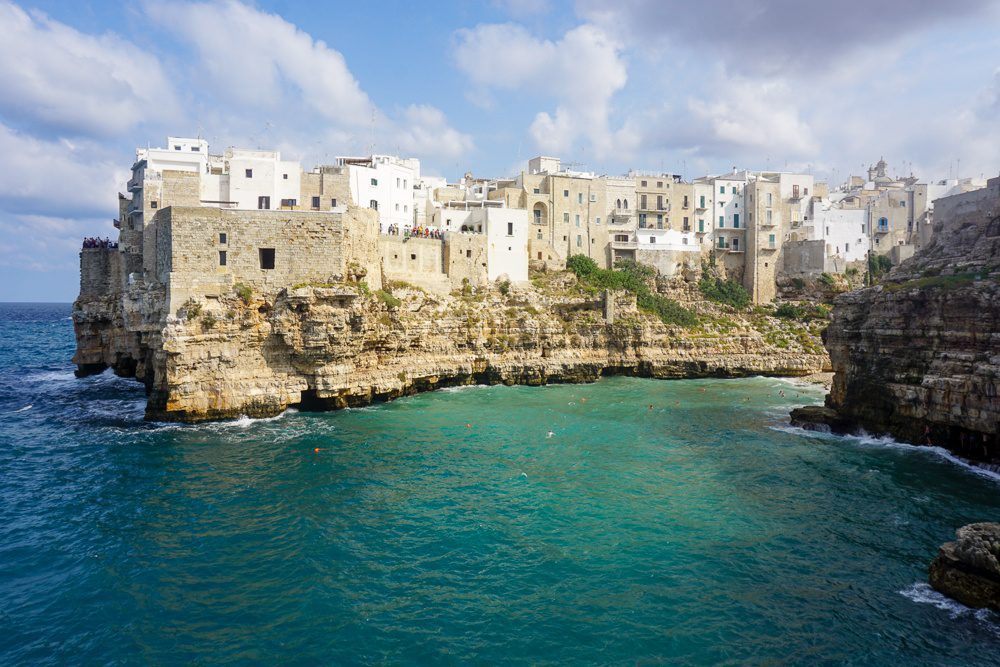
Europe Travel Packing: How to Pack for Europe
One of the essentials when traveling in Europe is to pack light.
If you’re like most people, you probably have at least a couple of European cities or areas on your travel itinerary. Dragging and lifting big, heavy suitcases from airports to hotels onto trains and along sidewalks is a stressful hassle that’s just not worth your energy.
So, let’s cut to the chase. You need a few important items to pack lightly, a sturdy piece of luggage, a carry-on bag, and packing cubes.
Rolling Suitcase
This is the rolling suitcase I’ve used for nearly all my trips to Europe over the past several years. And let me tell you, I’ve put this bag through the wringer! It’s proved its durability by being checked at countless airports and rolled through train stations all over Europe, as well as hauled in and out of hotels, metros, and more. Put any doubts aside about whether this piece of luggage can hold everything you’d need for a 2-week trip to Europe. I’ve done it numerous times and even stayed for up to 3 weeks without really needing to do a big batch of laundry. I’ve used a couple of other bags, too, if I’m taking a shorter trip. These honorable mentions go to this 19″ carry-on roller or this backpack which I’ve used for more outdoorsy European adventures.
Packing Cubes
These are the packing cubes that quite honestly I couldn’t live without. They are what makes the above suitcase possible. Depending on how I want to pack, I use 3-4 of these packing cubes to hold all my clothes. The magic comes from the compression. Once you’ve rolled everything inside and zipped the cube, the 2nd zipper compresses the cube down to half its size. If necessary, you can smooth out any lumps by pressing on the cube to even things out. ProTip: Think about how you’ll manage dirty clothes. You could bring an extra packing cube or a dirty laundry bag. You could also shift clothes around as you travel, moving dirty clothes to a single packing cube and clean clothes into all the others.
Carry-on Bag
Without hesitation, this carry-on travel backpack has been my go-to for years. I absolutely love it. This bag has the perfect combination of smart storage compartments, style, and comfort. In fact, this is the most comfortable expandable backpack I’ve ever worn. I store things like my laptop, important travel documents, a change of clothes, and a 1-quart toiletry plastic bag with some necessities for the flight. Fully expanded, it can even hold a few days’ worth of clothes or those extra souvenirs you want to bring back home. ProTip: I like to pack a few extra plastic bags in case something leaks and for things like wet clothes.
Hanging Toiletry Bag
Not only does a hanging toiletry bag keep everything organized and easily repackable for European city-hopping, but it also allows you to keep things like toothbrushes and contact lens cases off the limited counter space around hotel sinks. You can still have all your toiletries hanging in the bathroom when you need them without worrying about knocking them off the sink.
Mini Travel Bottles
No need to take up space in your luggage with full-sized toiletries or create more waste with travel-sized (3.4 oz.) toiletries. These mini travel bottles are all TSA compliant, come in different sizes, and are easy to fill and dispense. Best of all, they’ve never leaked into my bag!
Clothes for Your Europe Travel Checklist
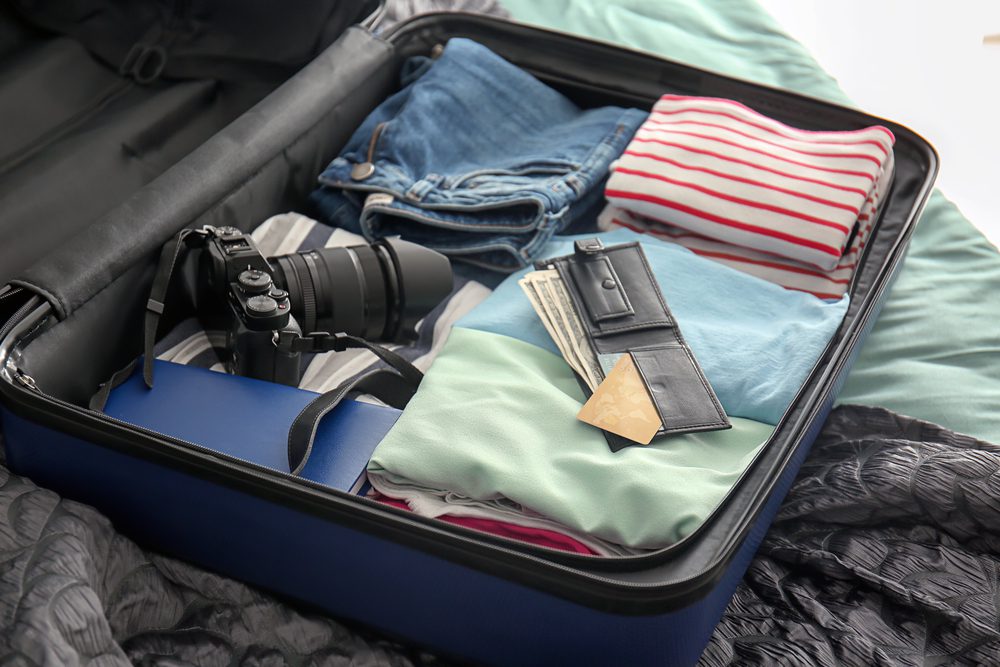
This section is a bit subjective because the clothes you pack will be dependent on the time of year you travel, what you’ll be doing, and your own style. But what to pack for a Europe trip is one of the most common questions I get, so I’ve compiled my best tips and recommendations below.
The most important thing is not to overpack. I know, easier said than done!
One way to avoid this is to plan your outfits, or if that is too difficult, pack clothes in a similar color palette. Pack neutral colors than can be worn with many different things. By doing this, you’ll inevitably have numerous pairings because most of the pieces will go together.
As you begin to pack, lay everything out first. You’ll likely be able to eliminate things that are duplicates (no, you do not need 3 black tops.) or items not in line with the majority color palette of the rest.
There are cliche items to avoid in European cities like flip-flops, workout clothes, or anything too casual like sweatpants or sports jerseys, shorts, super dressy clothing, or clothes meant for hiking and other outdoor activities. Not only will avoiding these items in big cities be more fashionable, but they also help you blend in more. When you blend in more, you’re less of a target for a potential scammer or pickpocket.
Think more along the lines of classic pieces in neutral, soothing, or dark colors. For example, navy, black, beiges, white, and soft pastels. Also, be mindful of clothing that is too revealing, especially if you’re planning to visit cathedrals or other religious sites like in Rome or Seville .
The shoes you pack are also (so!) important.
First, pack at most 3 pairs of shoes including the ones you wear on the flight. Think smart casual and comfortable when choosing which to pack to find a balance between fashion-friendly and comfortable. You’ll likely be walking a lot and oftentimes on cobblestones.
And ladies, unless you have a specific formal event planned, you won’t need high heels. Even if you’re thinking they would be nice to wear for dinner, high heels are near impossible on cobblestone streets and take up valuable suitcase space! Instead, opt for a boot with a chunkier heel if you feel you need something dressy.
The items below are meant to be ideas to help you see what’s typically in my suitcase.
Except for the hottest days of the European summer, jeans always work. They can be dressed up or down and worn with every top you pack. Everyone has a favorite pair of jeans they love so I want to give a shout-out to mine. These Duer Performance jeans are perfect for travel. They have a good amount of stretch and are very durable. What I love is they never seem to stretch out after multiple wears and they’re great for both city sightseeing and hiking. No matter which jeans you pack, go for a pair of dark-wash jeans. They’ll look cleaner for longer! Leggings are timeless, comfortable, take up little space in your luggage, and can be part of a smart casual or even dressier look. In other words, they’re perfect for travel! Other pants I’ve included in my suitcase and are versatile enough for a range of temperatures have been these Duer No Sweat Everyday Pants , these 7/8 joggers , and Eddie Bauer Departure pants . For hot summer travel days, go with wide-leg linen blend pants and other breathable fabrics instead of shorts.
No matter what the season is I like to bring tops in different sleeve lengths that can be worn on their own or under a layer like a cardigan or a blazer. For summer European sightseeing, short sleeves that cover the shoulders will be ok for most Cathedrals. Lightweight and loose-fit tops will be the coolest for walking around a European city. Generally speaking, I pack these 3/4 sleeve shirts or these shirts with long sleeves. Lightweight sweaters are perfect for spring and fall and can mix and match with many different types of bottoms. They can be dressed up with a scarf and boots or worn with jeans and sneakers when you want to be more casual. Classic fit tees always work. And of course, a long flowy top pairs perfectly with leggings.
A top or a bottom layer can make all the difference for both style and comfort! For winter travel in central and southern Europe, a thin, effective base layer becomes your secret weapon. It keeps you warm while you’re walking without adding bulk to your overall look. In northern Europe, like Stockholm or Finnish Lapland , a baselayer top and bottom are essential! For shoulder seasons, a casual blazer that can pair with nearly all of your outfits is a win-win! Cardigans, either lightweight , open front , or something chunkier , go with most types of tops and bottoms and are great for added warmth even for a breezy evening by the sea. A lightweight jacket can come in handy for those cooler spring and fall nights. It’s an added bonus if it has a hood in case you get some rainy days.
Accessories
A scarf is an absolute Europe travel essential! It can add to your overall look and even provide warmth when needed. I always have 1 (or 2) with me when I travel to Europe. Longer scarves create that perfect fall or transition season look. These square scarves are so fashionable and can double as a headband! If you’re looking for something that can double as a scarf and a wrap, these pashmina scarves are perfect. ProTip: As a general rule of thumb, it’s best to wear little or no jewelry when traveling to avoid being a target for potential theft.
Comfortable Shoes!
Perhaps the most important Europe packing decision you’ll make is the shoes you’ll bring. European travel inevitably comes with a lot of walking which will become difficult or even painful with uncomfortable and unsupportive shoes. A Chelsea-style boot works in every European city and can be worn day and night. (In Italy, I think it must be obligatory for every Italian woman to have a pair in black!) These winter boots are stylish and warm in the colder months. Allbirds are some of the most comfortable sneakers I’ve ever worn. Vionic shoes like these and these are great, too, and come with extra arch support. For summer European travel, I never leave home without these sandals . They’ve been an excellent investment and have saved my feet compared to other non-supportive summer shoes. Bottom line – Pack comfortable walking shoes for both day and night. Your feet will thank you!
Europe Travel Essentials FAQs

Is it better to travel with a backpack or suitcase in Europe?
There are pros and cons to both. Personally, I prefer a rolling suitcase and have never found it to be a problem even when traveling from city to city. Yes, there are cobblestones and sometimes no elevators when you need them. However, I’d rather lift my suitcase for a moment just to get up or down some stairs than always carry it on my back.
What size suitcase is best for a 2-week trip to Europe?
I’ve typically traveled with a 24″ suitcase for 2-3 weeks in Europe with the help of my packing cubes. If you need a bit more space, look at a 26″ or a 28″ but I wouldn’t go any bigger than that. Otherwise, it can become a real chore to move from place to place.
Is it better to fold or roll clothes in a suitcase?
Without question, it’s better to roll clothes in a suitcase. It saves space and protects against wrinkles. When rolled clothes are packed within a packing cube, it’s often possible to have 2 layers of rolled clothing inside.
How much should I pack for a 2-week trip to Europe?
In general, you’ll want to pack 3-4 bottoms and 5-6 tops. Dresses are also helpful (but not required) because they are complete outfits that can be dressed up or down. I’d bring 1-2 dresses if they match your style. For shoes, 2-3 pairs are plenty. Above all, comfortable shoes are absolute Europe travel essentials!
Also bring a scarf to use as an accessory, to cover up in conservative places, or for a little warmth. And unless you’re traveling in the absolute heat of summer, pack a blazer or light jacket (jean jacket, trench, etc.), as well as 2 sweaters or items for layering over a lighter top. Be sure the top layers go with the majority, if not all, of your clothes.
If your trip is in the winter, be sure to have a packable winter coat , a warm hat, waterproof boots , and layers. One of my hacks is to pack a couple of base layer tops so I can get added warmth without adding too much bulk to my bag or body!
Essentials for European Travel: Bottom Line

Your travel packing list for Europe needs to include a combination of essential items, gear, gadgets, and clothes. If you take the time to get yourself set up and packed using these packing tips before your trip to Europe, you’ll have done everything you could to ensure a hassle-free, comfortable, and amazing trip!
So, what’s on your checklist for European travel?
Like this post? Please share it using the buttons in this guide!
Related Posts

London Trip for the Cost of Dinner and a Show
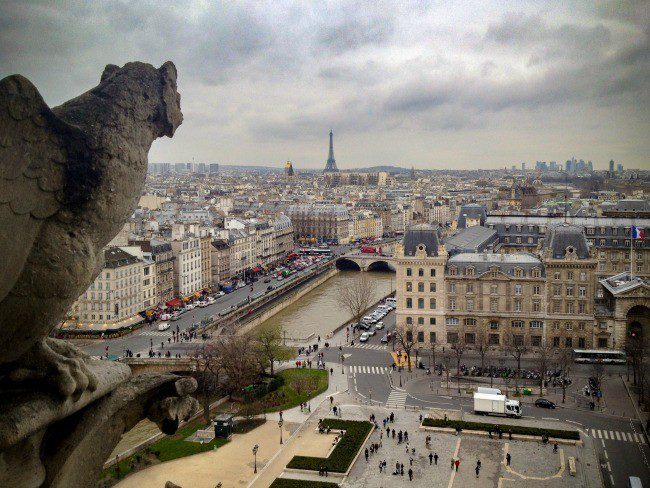
A Cheat Sheet for Paris First-Timers
Leave a comment cancel reply.
Your email address will not be published. Required fields are marked *
Save my name, email, and website in this browser for the next time I comment.
This site uses Akismet to reduce spam. Learn how your comment data is processed .
Privacy Overview

The ULTIMATE Packing List for Europe – Essentials for 2024
Planning a trip to Europe? Our guide covers the essentials you will need in your packing list for Europe.
This continent is one of our favourites regions of the world to explore.
Hi, we’re Rach & Marty!
We’ve visited every country in the world and want to help you get the most out of your travels!
Whether you need an expertly planned itinerary , some experienced hints and tips , or just craving a delicious food adventure , we’ve got you covered!
We may earn affiliate commissions from websites we link to, at no cost to you. Click here for details.
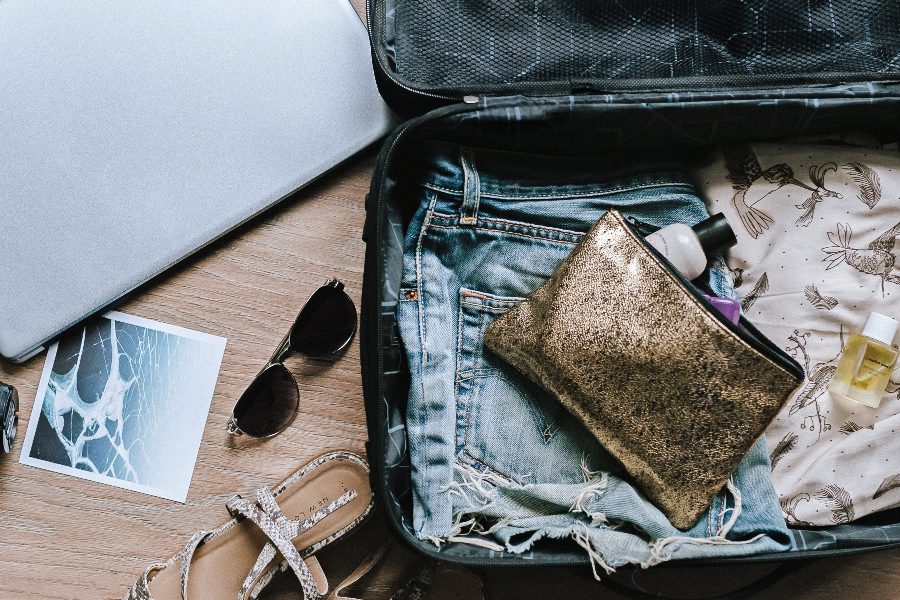
Furthermore, if you’re searching for a Europe packing list that will be light enough to carry so you can easily move around from country to country, then you’re in luck.
Items on the list below are more focused on a packing list for Europe summer. It’s the ideal Europe backpacking packing list too, as it’s light to carry, yet comprehensive.
However, you may need a few extra layers if you’re travelling during winter. We’ve got a few suggestions to complete the ULTIMATE packing list for Europe for any season.
Travelling around Europe is thrilling! Expect your trip to be full of diversity, adventure, warm hospitality, many beaches, world-class cities, and amazing food! You need to read our food map of Europe before you get there.
With so many countries packed into one amazing continent, do you know how many countries are there in Europe? 44, 45 or 49?
The best part about travelling here is if you forget something on your packing list for Europe, you can easily pick it up on the way.
Our best tip for your packing list in Europe is – Keep it Light!
Our best tip for preparing your packing list for Europe is that less is more! Trust us, a packing list for backpacking Europe or travelling with a suitcase is much easier when your backpack or luggage is light.
When travelling around Europe, believe us, you will use many forms of public transport. We firmly believe that travelling in Europe by train is the best, yet the bus network is fantastic to travel between countries too.
We know that each and every traveller is different. If you’re planning to fit as much in as possible and breeze through many countries, it’s critical that your packing list for Europe is similar to this one.
We’ve prepared our packing list for Europe summer so many times as we used to work as tour guides here for many years. Trust us, everything included in our packing list for Europe below gets used frequently.
At the same time, if you’re planning to go a little slower and stay a little longer in each country, our packing list for Europe has you covered.
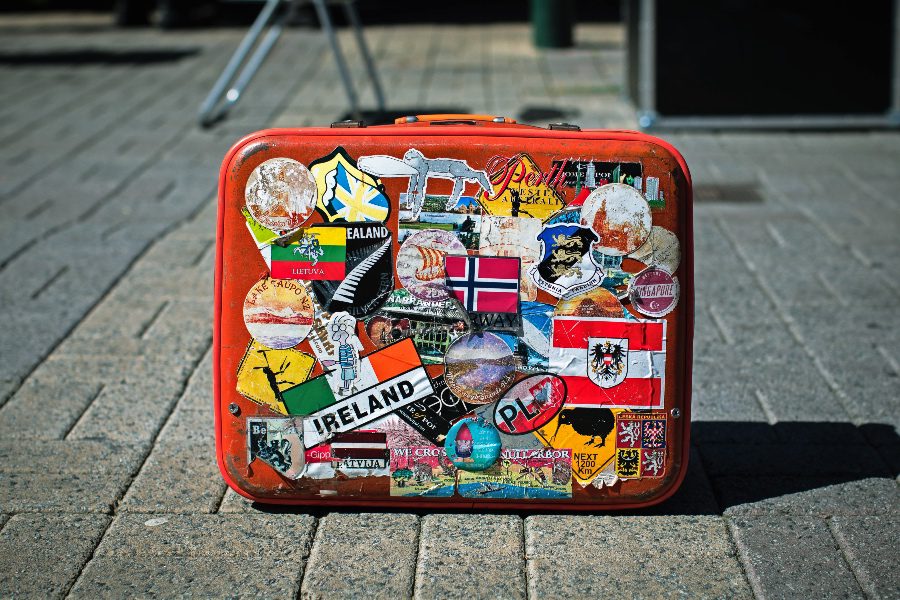
Table of Contents
Ok, let’s get to it! Your Packing List for Europe for 202 4
Choosing the right travel bag.
Ok, some people are backpack travellers and others are suitcase travellers. The type of luggage to carry items on your packing list for Europe is up to you. To help you out though, we cover the pros and cons of each travel bag in our post Suitcase Vs Backpack – Which one should you choose?
In saying that, choosing a backpack over a suitcase for your packing list for Europe will give you more flexibility. The reason for this is that you will encounter many cobblestoned streets, countless stairs, super small elevators at hotels, or none at all (so heads up for carrying your own suitcase up four flights of stairs).
It is a little easier to navigate all of this if you have a backpack rather than wheeled luggage. Nowadays, you can buy some awesome travel bags that offer both options, like the Osprey Wheels 36 Bag . You can wear this bag as a backpack and then convert it to a rolling bag too.
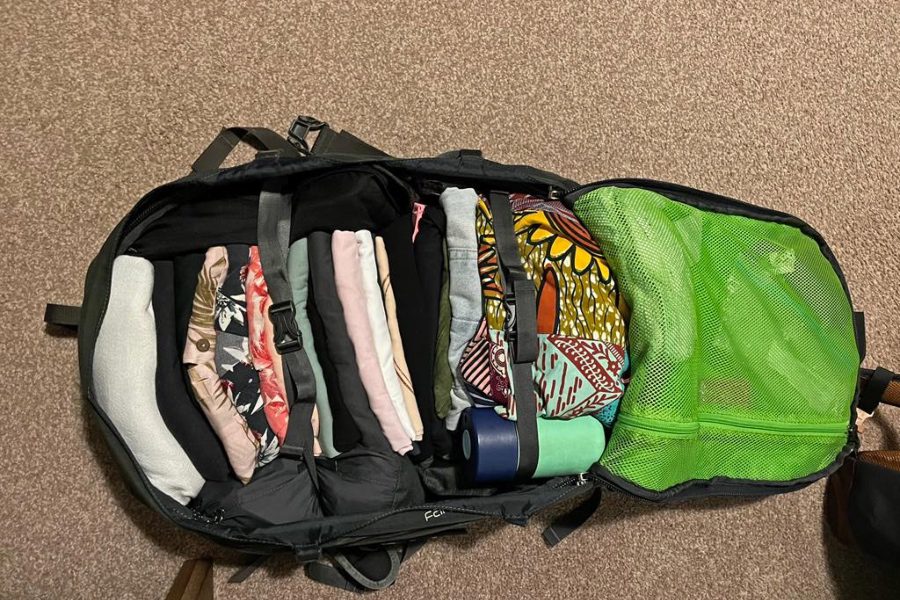
We’ve used many travel bags over the past twenty years. The one we use now is the Osprey Farpoint 40L Backpack and we love it! This is the ideal backpack for your packing list for Europe.
Do you need a small day pack?
Travelling with a small day pack is a personal choice. We travel with one as we prefer to keep our valuables with us at all times. This is especially important when taking overnight train/bus rides.
We carry this small Osprey day pack
We often lock our large 40L backpack to something stationary when we sleep on overnight trains and our small daypack containing our valuables will remain on our person, inside our silk sleeping sheet while we sleep – it feels much more secure to do this to deter any opportunistic thieves.
When we’re on the move, our small Osprey day pack sits on the front of our body with our Osprey 40L backpack on our backs, this makes it easy to quickly access passports or money.
Make sure you get Travel Insurance before hitting the road. We recommend Heymondo & SafetyWing Travel Insurance.
Click here and get 5% off Heymondo from us!
Choosing your Travel Clothes
As I mentioned at the beginning, this packing list for Europe is focused on being a packing list for Europe summer. The European summer runs from late June to late September and the majority of European countries receive high temperatures during this time. Temperatures range between 25 and 35 degrees Celsius.
The best clothing to choose for your packing list in Europe is light, breathable cotton, clothing you can mix and match, and items that dry quickly.
And, we must admit that our compression packing cubes have been a lifesaver in keeping things organised.
Packing List for Europe: Clothing for WOMEN
- 1 pair of black skinny jeans
- 1 pair Columbia zip-off long trekking pants OR Lululemon travel pants
- 1 North Face lightweight jacket/fleece
- 1 Light Rain jacket
- 1 pair of black loose cotton pants
- 1 light long-sleeved cotton shirt
- 4 basic t-shirts
- 3 loose singlets/tanks
- 1 denim shorts
- 1 cotton shorts (H&M brand or similar)
- 1 light short (wear as pyjamas or to the beach)
- 2 nice tops to wear out
- 1 little black dress
- 2 pairs of ankle socks
- 7 pieces underwear
- 1 bikini (we love Roxy brand swimsuits)
- 1 Ripcurl cap
- 2 bras and 1 sports bra
- 1 headscarf (to visit places of worship)
- Birkenstock Sandals
- Havaianas – Slim Black flip flops
- Merrell Women’s Black Hiking Shoes or Nike Women’s Black Running Shoes
Packing List for Europe: Clothing for MEN
- 2 pairs of Quiksilver Boardshorts
- 1 pair of Travel/Hiking Shorts
- 1 pair of Long Trousers
- 2 pairs Smart Chino Shorts
- 3 Tank Tops
- 1 Long Sleeve Cotton Shirt
- 1 Smart Shirt
- 1 Casual short-sleeved shirt
- 1 Warm Fleece
- 1 Light NorthFace Waterproof jacket
- Salomon Hiking Shoes or Mens Nike Black Running Shoes
- Underwear & socks

Toiletries for Women
We’re lucky to be able to share some toiletries on the road – so it gives one of us a little more room in our backpack. If Marty carries the toiletries, I’ll carry our espresso machine and fresh coffee to share the load.
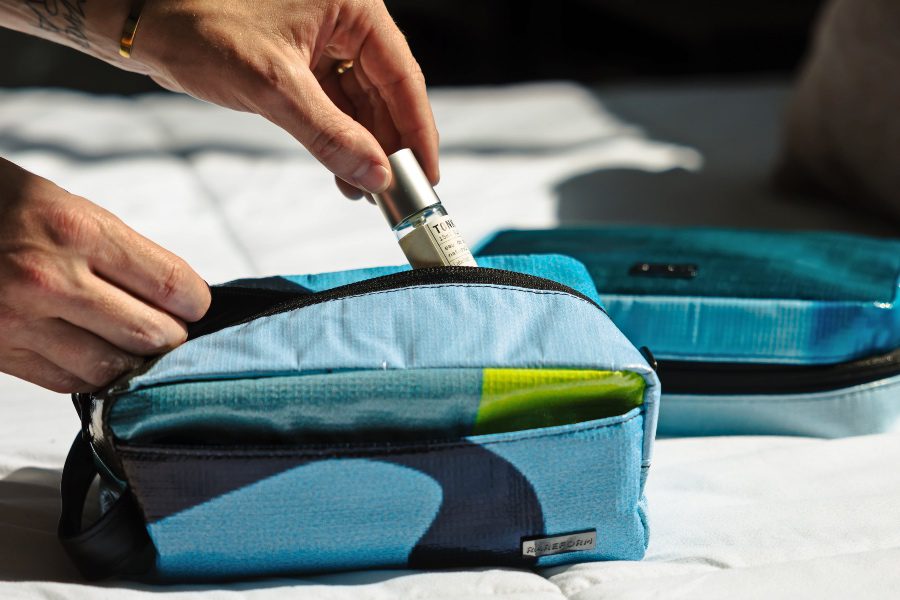
We try to keep toiletries to a minimum as they can be heavy. We also travel with carry-on baggage, therefore, all of our toiletries must be 100ml or less. If you plan on staying in hotels (and even some cool hostels) around Europe, small toiletries will usually be provided.
- Hanging Toiletry Bag
- Compression Packing Cubes
- Small containers (100ml) for refills
- Shampoo/Conditioner 100ml each
- Bar of soap
- 1 shaver/razor (we never have a problem at airports with this in our carry-on)
- 1 hairbrush
- Roll-on deodorant
- Toothpaste & toothbrush
- exfoliating shower glove (we found these in Morocco..love them)
- 100ml sized sunscreen – We like Nivea or Neutrogena brands
- Nivea face moisturiser SPF30
- Blistex and lip balm
- A few pieces of makeup (which we rarely use, but sometimes it feels nice to dress up) 1 tube of foundation , bronzing powder, and brush, 1 mascara
Toiletries for Men (as suggested by our male travel buddy)
- Toothpaste and toothbrush
- Moisturiser
- Shaver/small shaving cream
- Mosquito repellent (with DEET!)
Accessories/Extras for our packing list for Europe
- A pouch that holds my passport, different currency, bank cards, passport photos, copy of my passport, driver’s license, and a copy of our Heymondo travel insurance policy
- Nanopresso Portable Espresso Maker
- Silk sleeping sheet – For those overnight trains or airport naps.
- Sarong (our shower towel, beach towel)
- Frank Green Portable Coffee/Tea Cup
- LifeStraw filter water bottle (this lives in our small day pack)
- Oakley Sunglasses & Protective Case
- Travel clothesline
- Travel Sling Bag
Technology/Electronics
If you’re a photographer, digital nomad, or simply can’t live without your MacBook and other electronics, we understand.
We need these things as we work online as we travel the world. Here’s what we take as part of our Europe Packing list, in terms of electronics.

- 13″ Macbook Pro with charger
- iPhone 13 Smartphone with a USB charger.
- Apple AirPods for iPhone
- Old-school iPhone headphones
- Sony RX100 Mark III Camera with leather case
- Sandisk 2TB external hard drive
- Worldwide adapter plug.
- GoPro Camera – a waterproof stick/few extra clips for it
- Belkin Powerbank
- Small portable USB drive
- Small pouch that holds all cords for cameras etc
- Gorilla tripod for our Sony camera
Safety in Europe
Travelling around Europe is regarded to be relatively safe, but it’s best to read our 12 Tips for Safe Travel. The same goes for travelling anywhere in the world, accidents do happen.
Some cities in Europe (Rome and Barcelona in particular) have a higher rate of pick-pockets and petty thieves, so you need to be a little more cautious of your belongings.
And it goes without saying that common sense is essential to take in your Europe packing list and beyond.
We 100% recommend Travel Insurance
We highly recommend you sort out some good travel insurance to cover you when things go wrong.
It will be one of the most essential things on your packing list for Europe. We use Heymondo to cover us on our world travels. We recommend adding one of their comprehensive travel insurance policies to your packing list for Europe. Get 5% discount on your travel insurance policy from us!
Transport and Getting Around Europe

Getting from A to B in Europe is easy. Read our best tips about travelling around Europe by Train , it’s a great way to travel this continent.
The ONLY website we use to make reservations for train tickets is Trainline . They offer the cheapest fares, you get instant confirmation and their booking platform is so easy to use.
The best part about travelling Europe is that you can also find some incredibly cheap flights with low-cost carriers.
We book all our flights around Europe on CheapOair . The prices are unbeatable and you can choose to pay in the currency of your choice.
The bus network in Europe is wonderful too! The best website for checking buses, and other forms of transport is Omio.
How to Book Accommodation in Europe
We always use the same websites to book accommodation in Europe. Booking.com is our number one choice for booking accommodation in every European country.
Apps to download for Europe
Download these apps on your phone to make your travels in Europe much easier.
- CheapOair (to search flights)
- Booking.com (to book accommodation on the go)
- XE.com (to check the latest exchange rates)
- Maps. me (the best offline maps to help you navigate around)
- Google Translate (while English is widely spoken in Europe, this app is so useful when you get lost in translation)
- Omio (book buses, ferries and trains on the road)
- Trainline (book train and coach tickets all around the world and save up to 60% discount on average per ticket).
RELATED POST – 20 Best Travel Apps in 2023 (Plus They’re Free)
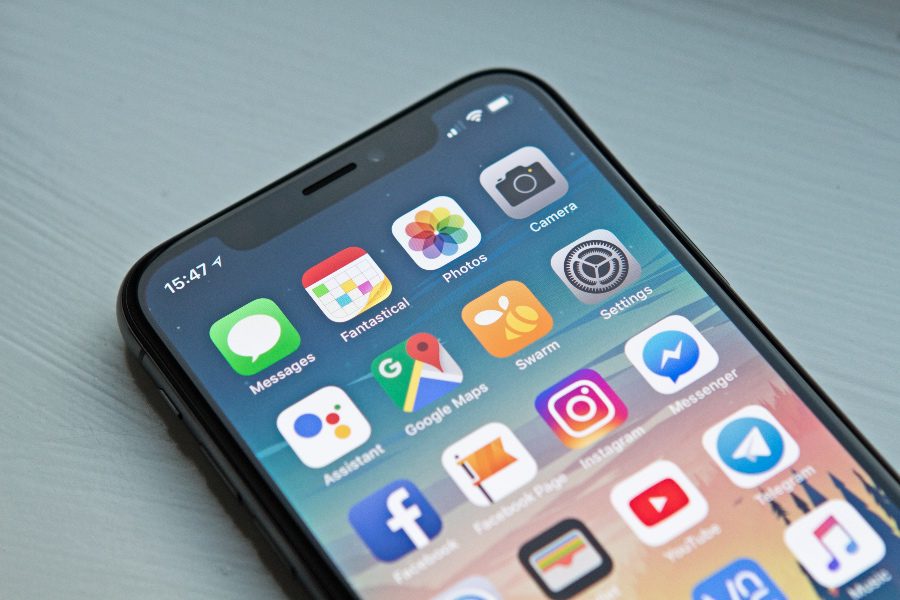
Staying in Europe long-term?
If you’re considering staying longer in Europe (and you’ve got the right visas to do so), check out the Trusted Housesitters website for saving loads of money on accommodation. Become a house-sitter in Europe, (and all over the world) if you’re considering staying in one place for a little longer.
Being a house-sitter means free accommodation for you in return for looking after different homes around the globe. This was one of the best things we ever did! Join now with our personal invitation and receive a massive 25% off your membership!
Travelling Beyond Europe?
Travelling beyond Europe or need some suggestions for warmer items to add to your packing list in Europe? Our Ultimate Packing List for every traveller includes the items we carried as we travelled to every country in the world.
We moved between all types of weather, from very cool temperatures to sweltering hot ones. And, we still manage to travel with carry-on baggage only, often less than 10kg.
We’ve also put together our Complete Packing List for Africa and the Essential Packing List for Travelling in Southeast Asia .
Group Tours in Europe
And, if you don’t have the time to travel slowly in Europe but really want to discover more, then a group tour could be the answer.
We recommend Expat Explore. They offer a variety of coach and rail group tours around Europe to suit everyone, and you’ll have a fantastic crew to take care of all the details. Your only task is to turn up and have an amazing time.
Check out Expat Explore , and if you see a tour that you want to book, use our promo code VERYHUNGRYNOMADS at checkout for an additional 5% discount off your trip !
My other suggestion is GAdventures for awesome small-group adventures in Europe.
Don’t miss our EUROPE CITY GUIDES
- ROME 3 Days Itinerary
- VENICE 1-Day Itinerary
- FLORENCE 2 Days Itinerary
- AMSTERDAM 3 Day Itinerary
- PARIS 4 Days Itinerary
- BUDAPEST 2 Days Itinerary
- PRAGUE 2 Days Itinerary
- LONDON 1 Day Itinerary
- ATHENS 1 Day Itinerary
- BERLIN 2 Days Itinerary
- VIENNA 2 Days Itinerary
- LISBON 2 Days Itinerary
Travel Tips & Inspiration
We love to share our knowledge and advice about travelling the world. You may enjoy reading our best-ever travel tips to help your budget to stretch further on the road.
Perhaps you’re travelling on a budget? These 10 cheapest countries in Europe to visit may be just the tool you need to start planning an epic trip. Don’t forget to check out our Ultimate Food Map of Europe .
And, for all of the food lovers out there, don’t miss our top 10 best countries for foodies! And, if you’re more interested in history, these 30 amazing historical places in the world will fascinate you!
But, here are 8 things to know about traveling to Eastern Europe and it’s good to know these 7 misconceptions about Eastern Europe too.
Subscribe to our newsletter!
Expert travel tips, resources and exclusive discounts worldwide
Or, perhaps these 21 Cheapest Countries to Visit Right Now is just the thing you’ve been searching for.
We’ve got a bunch of tips for how you can save money to travel the world , and even when you’re out there travelling, maybe these 20 jobs that PAY YOU to travel the world will help you travel longer. It worked for us, and we bet it can work for you too.
Finally, these top 6 travel hacks to save you money are great to read when planning your travels.
And, if you’re planning a new trip, whether it’s for a week, a month, or even a few years, consider buying an eSIM to stay connected . This is our favourite travel product, and you can read more about what is in eSIM and why eSIM is so convenient for International Travel .
Check out the travel gear we use on the road, and for the products and websites we recommend to plan new trips, head to our Travel Resources Page .
Travel Planning Resources
✈️ Flights : We use Skyscanner to book cheap flights worldwide.
🏨 Accommodation : Booking.com is our preferred platform for booking hotels and accommodation.
🏥 Travel Insurance : We recommend Heymondo ( Get 5% off Heymondo) & SafetyWing
🚌 Transportation : Trainline is the best website to reserve trains. We use Omio to book transport worldwide. For travel in Asia, we use 12Go.
🚘 Car Rental : We use DiscoverCars to book rental cars worldwide.
👫 Group Tours : G Adventures OR compare multi-day tours worldwide with Tourradar .
📸 Day Tours & Trips : GetYourGuide & Viator are the only two platforms you need.
📚 Lonely Planet: The Best Range of Travel Guides & Ebooks , and FREE Shipping! (use code RACHELDAVEY10 for a 10% discount)
🎒 Luggage : Osprey Farpoint 40L Backpack or Samsonite Luggage Range.
🛄 What to Pack: Don’t forget your Universal charger and a good power bank . To help you pack the essentials, here is our ULTIMATE Packing List for all Travellers .
🐶 Become a House Sitter: Join Trusted Housesitters and enjoy FREE accommodation worldwide. Use our invite to receive 25% off your new membership.
💰 Send Money Anywhere: WISE & Revolut are the best online accounts that let you send money, get paid, and spend money internationally. Both are so easy to use and way cheaper than any bank transfer.
📶 Stay Connected: Airalo eSIM allows you to get connected the moment you land at your destination, and you can avoid those expensive data roaming charges. We LOVE this product! Use promo code NOMAD15 for 15% off ALL eSIMs (new Airalo users only) OR use NOMAD10 for 10% off ALL eSIMs (for existing Airalo users)
✅ Check out our Travel Gear and Travel Resources for more valuable tips to save you money!
Tasty Food Adventures

15 Best Foods From Ethiopia: Traditional Ethiopian Food Guide

Food in Ukraine – 10 Most Popular Dishes

12 Best Breakfast Places in Oaxaca

Best Food in Taipei – A Food Lovers Bible
See all Food Adventure blogs
Expert Travel Guides

How Many Countries in North America? Why 3 is The Wrong Answer!

2 Days in Buenos Aires Itinerary

Madagascar in Two Weeks – The Perfect Itinerary 2024

People you meet travelling the world
See all our Travel Guides
Trusted Hints & Tips

21 Cheapest Countries to Visit Now

Ready to Travel? Top 6 Travel Hacks to Save You Money

Backpack vs Suitcase – Which One Should You Choose?

Travelling to West Africa – 17 ESSENTIAL Things to Know Before You Go
See all our expert Hints & Tips
Leave a Reply Cancel reply
Your email address will not be published. Required fields are marked *
Post Comment
- Meet the Team
- Work with Us
- Czech Republic
- Netherlands
- Switzerland
- Scandinavia
- Philippines
- South Korea
- New Zealand
- South Africa
- Budget Travel
- Work & Travel
- The Broke Backpacker Manifesto
- Travel Resources
- How to Travel on $10/day
Home » Europe » Packing List
What to Pack for Europe in 2024: Clothes, Bags, Gadgets + More
Europe is one of THE definitive travel experiences. The continent offers a mind blowing, diverse range of places to visit, things to do and cultures to sample.
Because Europe is so fast and diverse, you may well be wondering what to pack. I mean, what electrical sockets do they use? What should you wear?
Well we have answers these questions for you. We’ve compiled a thorough guide on what to pack for Europe. In this post we advise on on what to wear in Europe, a breakdown of what to expect by season and how to pack for each, and what NOT to bring for your travels.
Packing light and smart can seem daunting and overwhelming, but follow our top tips, and you’ll be well on your way. Then, all you have to do is get out there and enjoy the ultimate European experience that awaits!
The Ultimate Packing List For Europe
What to pack for europe checklist: personal gear, final thoughts on what to pack for europe.
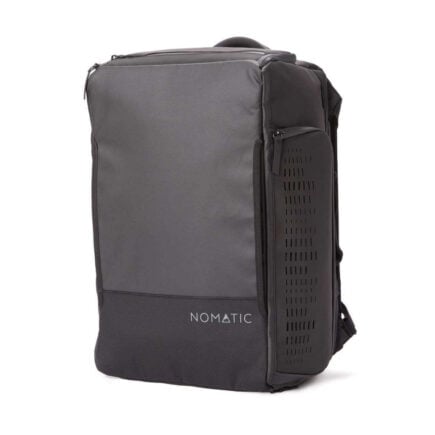
Nomatic Travel Bag
- Capacity > 30L
- Price > $299
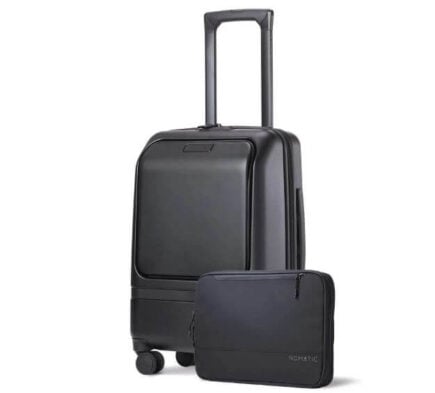
Nomatic Navigator Carry On
- Capacity > 37L
- Price > $400
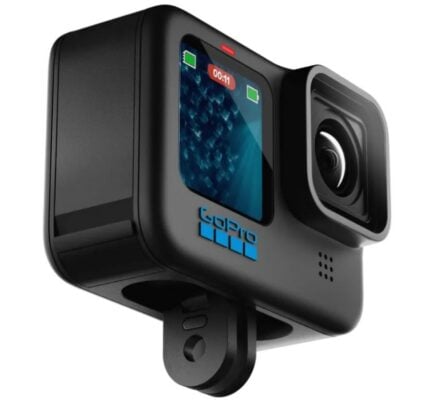
GoPro Hero 11
- Resolution > 5k
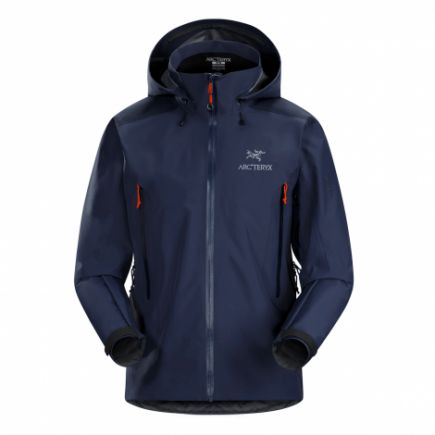
Arc’teryx Beta AR Jacket
- Price > $600

Insurance From World Nomads
- Price > Click For a Quote

Unlock Our GREATEST Travel Secrets!
Sign up for our newsletter and get the best travel tips delivered right to your inbox.
Packing for Europe made easy! Let’s kick of our Europe checklist and look at the essential items you should not be without.
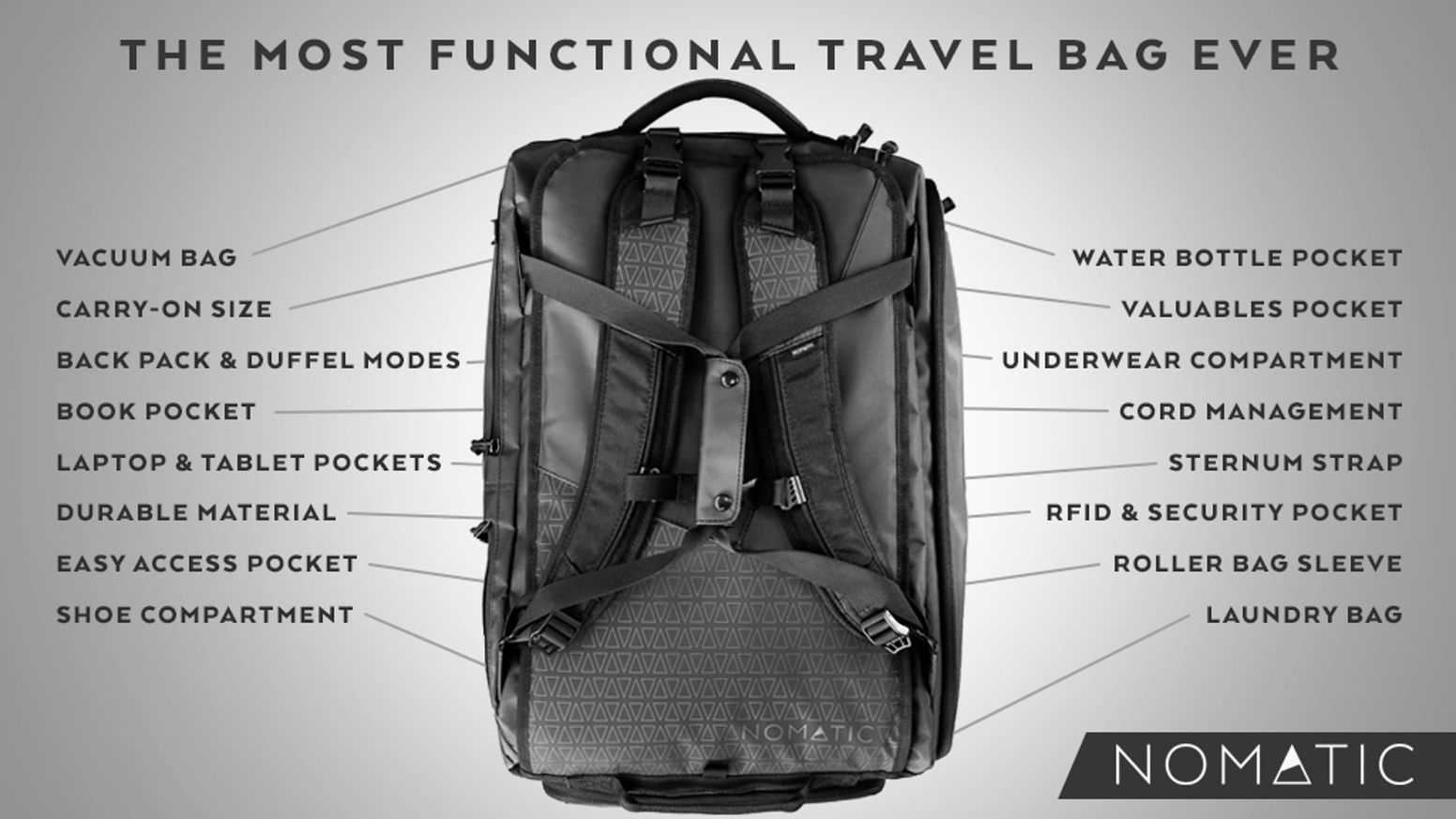
Best Backpack For Europe: Nomatic Travel Bag
If you’re packing for Europe then you’re gonna need some luggage right?! For all types of travelers and destinations, our number one recommendation is the Nomatic Travel Bag . It will be as at home at Berlin airport as it will be carried around Italian backstreets.
The Nomatic travel bag covers every detail to make backpacking travel the best experience. You have a choice between backpack or duffel bag carry, and extra carrying comfort for your back thanks to its innovative strap system and detachable sternum strap. And its black, waterproof material is every bit sleek and modern as it is durable and tough. There is a reason why most Broke Backpacker staff swear by this backpack. Note that its only 30L so do pack light(ish) with this one.
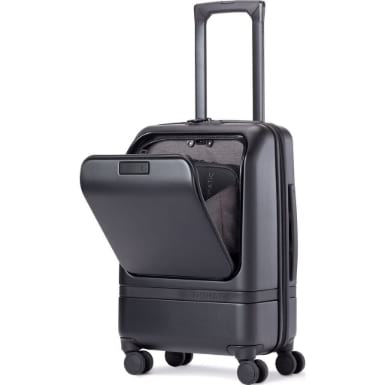
Best Suitcase For Europe: Nomatic Carry-On Pro
Backpacks not your thing? That’s ok. Our friends at Nomatic are back again with a great alternative to their badass Travel Bag; the Nomatic Carry-On Pro.
This wheeled suitcase is ultra-durable, sleek, and comes with a handy tech compartment for transporting your laptop and other electronic bits. Plenty of European travellers use suitcases and this one will do you from the Atlantic drifts or Ireland, all the way to the Balkans and beyond. Check out our Nomatic Carry-On Pro review to learn more about this epic suitcase.
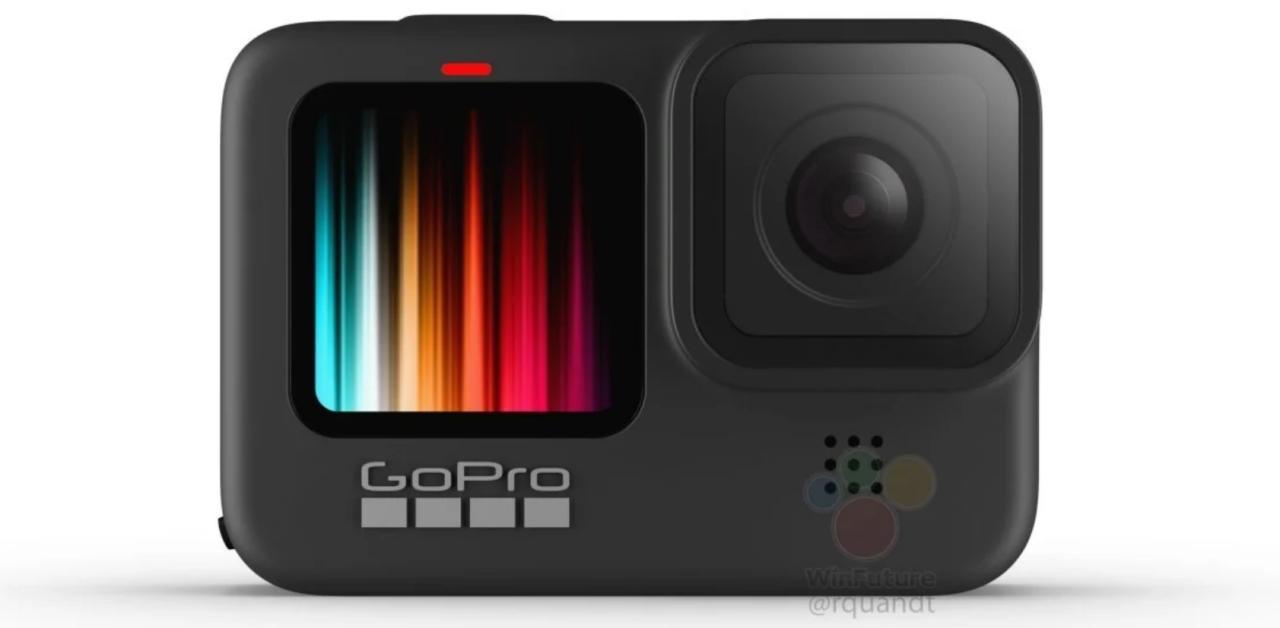
The Camera: GoPro Hero9 Black
For most of us, our smartphones now feature cameras with stunning photo capabilities. But… if you are an aspiring photographer who wants to take next-level photos and video beyond iPhone selfies, I recommend going with an action camera like the GoPro Hero9 Black .
It does deliver pro-quality video and gives you a bunch of a different angle options and shooting speeds to work with for photos (including a selfie-mode). Think of a camera purchase like this as a long term investment that will have you capturing epic shots well beyond your time exploring here.
If you are looking for something cheaper for video specifically, check out these epic GoPro Alternatives .
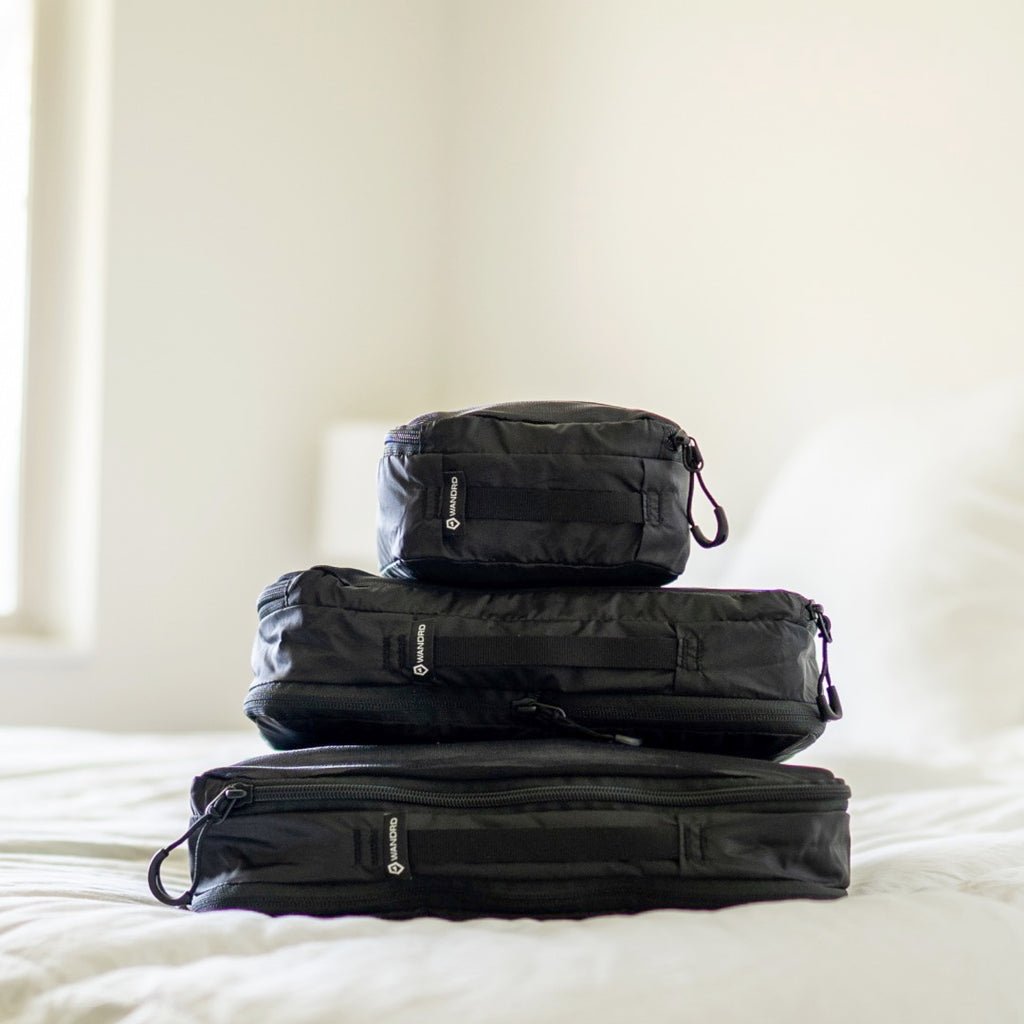
Packing Cubes For Europe – Wandrd Packing Cubes
In case you have never used them, packing cubes are little compression cubes that allow you to neatly pack clothes in in order to help facilitate better packing. They allow you to pack more stuff, and to keep it all better organised.
For the longest time, I thought that packing cubes were a superfluous indulgence, but boy was I wrong. Now I never travel without a few. These ones from WANDRD are great quality and excellent value for money. Get them on your Europe packing list now!

Best Sim For Europe – HolaFly eSim
The good news about Europe is that there is extensive 4g and 5g Internet coverage offering ready access to taxi apps and food delivery apps. The bad news is that your native SIM card will most probably not work and so you will not be able to access any of this online goodness until you rectify that particular situation.
You can waste time hanging around phone shops queuing to get a plastic sim or you can simply install a eSim onto your phone before you leave home. You just access the HolaFly site, choose the relevant package, download it and off you go – you are online the moment you land at the airport. eSims are easier to set up and better than the environment than plastic sims. The downside is that not all phones are eSim ready.
When deciding what to pack and what to wear for Europe, you need to consider where exactly you are going and when are visiting. I mean, the Norwegian winters will require a substantially different wardrobe than the Andalusian summers.
We suggest doing proper research on your destination but as rule remember this – Summers range from hot to mild and winters range from mild to freezing. The more Southerly you get the warmer and the more North, the colder.
Another thing to bear in mind is that Europeans are mostly a smart bunch and take fashion seriously. Whilst you will see tourists wandering around Milan and Paris in cargo shorts and flip flops, make know mistake that we are judging them very severely!
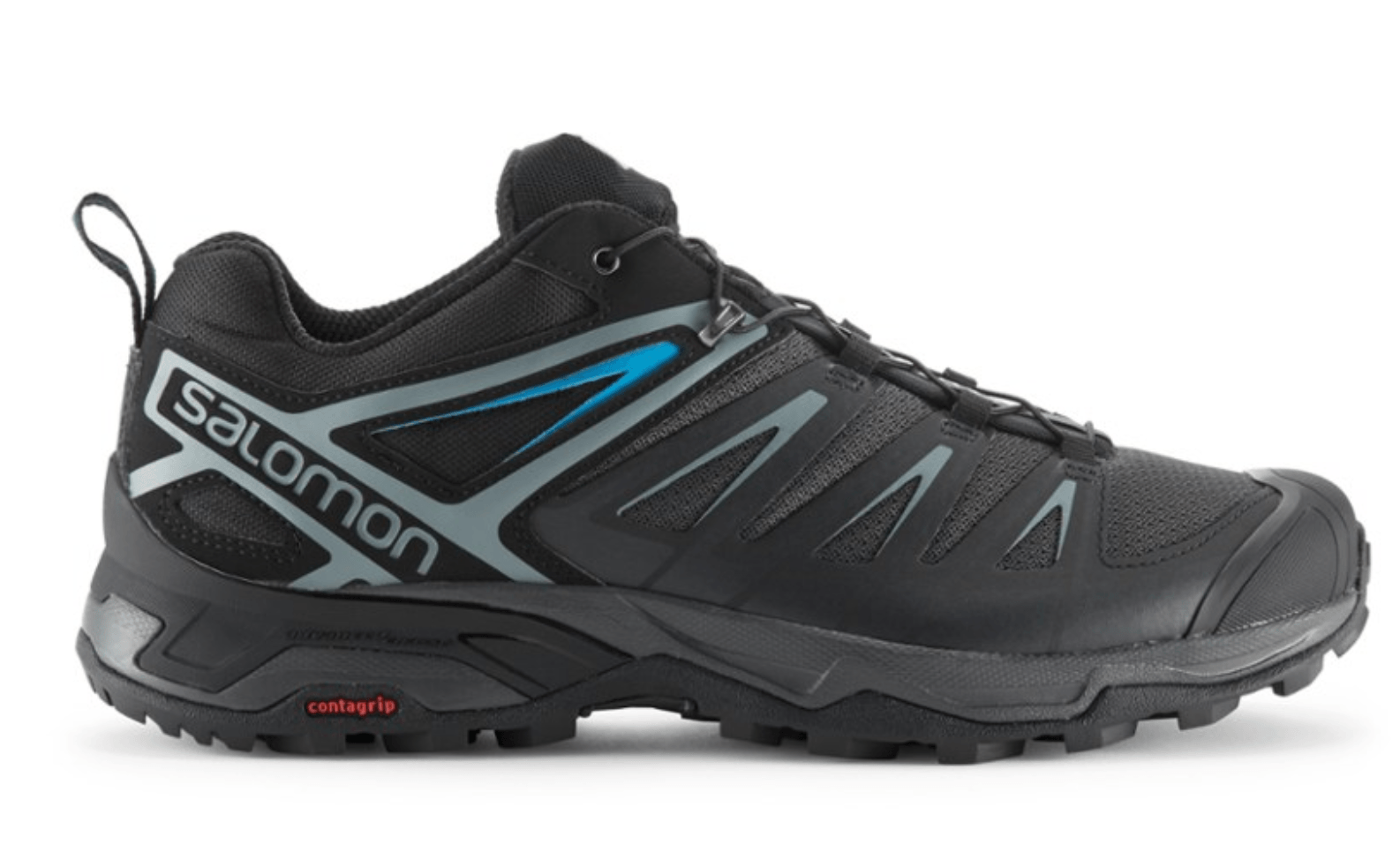
Good Shoes – Salomon X Ultra 3 Low Aero
The chances are that your European trip will invoice some serious walking. Whether you are checking out the sites of London & Rome, or hiking the dolomites, Europe offers a good opportunity to exercise those legs.
Whilst you may get by with regular sneakers such as Converse, your feet will definitely feel the strain after strolling the Lido or Champ’s Ellysees so should consider getting comfortable walking shoes. Note that if that if that if you are visiting the Nordic countries in Winter, proper boots may be a better option. Our Iceland packing list has some good intel for cases such as this.
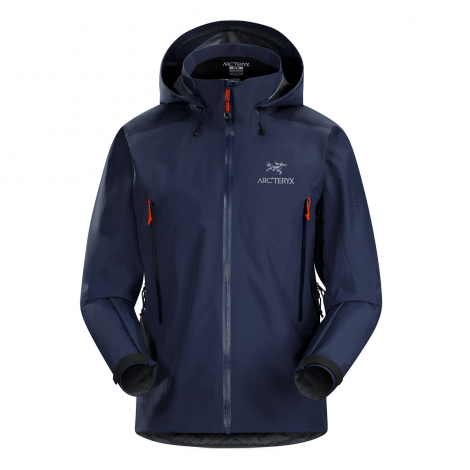
Good Rain Jacket – Arcteryx Beta AR
Did you know that the surface of the earth is 69% covered in water? And you know how that water got there? Yep because it tends to here rain here on planet earth quite a lot! This is especially true in the UK and Ireland – if your Europe trip includes a visit to either, then bring a rain jacket regardless of the time of year. If you are visiting any country in Europe during winter and autumn, then likewise, it will get wet.
There is no such thing as bad weather, only the wrong gear for it. Don’t let a bit (of a lot) of rain ruin your trip and make sure you are ready with some top notch rain gear. This is our pick of the many rain jackets we have tried. It’s reliable & stylish and looks good worn out in the mountains or in city bars.
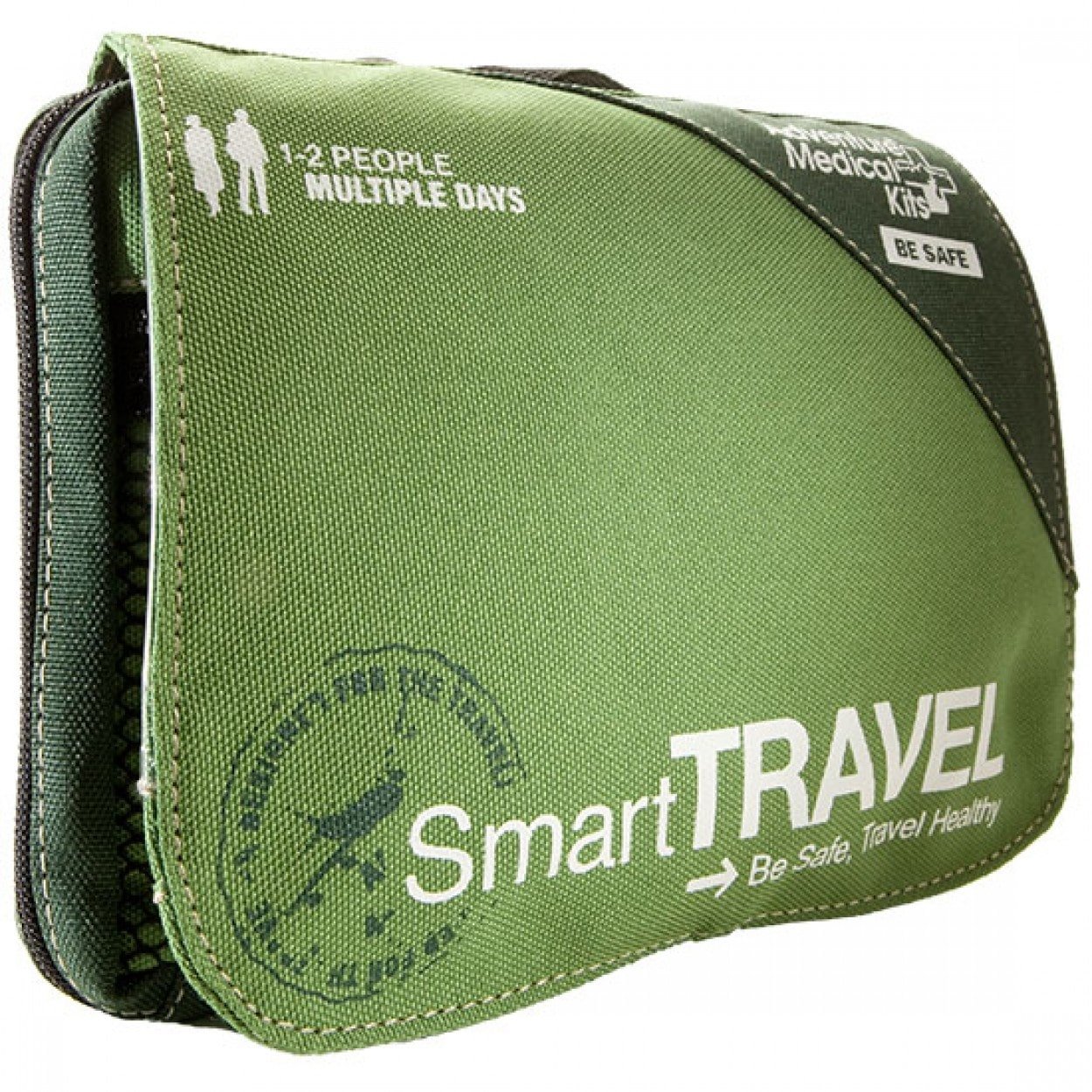
Travel First Aid Kit
You don’t need to tote around half a pharmacy when visiting Europe, but a well-stocked first aid kit should be in all our backpacks. Stuff happens on the road and it’s inconvenient and embarrassing when you can’t manage small situations like a cut finger or hangover migraine. You can tuck this lifesaver away in a forgotten pocket – and it’ll be there when you need it.
Tip: Add a few bits and pieces to the first aid kit after you purchase it, like extra headache medicine, any personal meds you need (like allergy pills), whatever you take to calm your stomach and a few more plasters.
Travel Insurance From World Nomads
ALWAYS sort out your backpacker insurance before your trip. There’s plenty to choose from in that department, but a good place to start is Safety Wing .
They offer month-to-month payments, no lock-in contracts, and require absolutely no itineraries: that’s the exact kind of insurance long-term travellers and digital nomads need.

SafetyWing is cheap, easy, and admin-free: just sign up lickety-split so you can get back to it!
Click the button below to learn more about SafetyWing’s setup or read our insider review for the full tasty scoop.
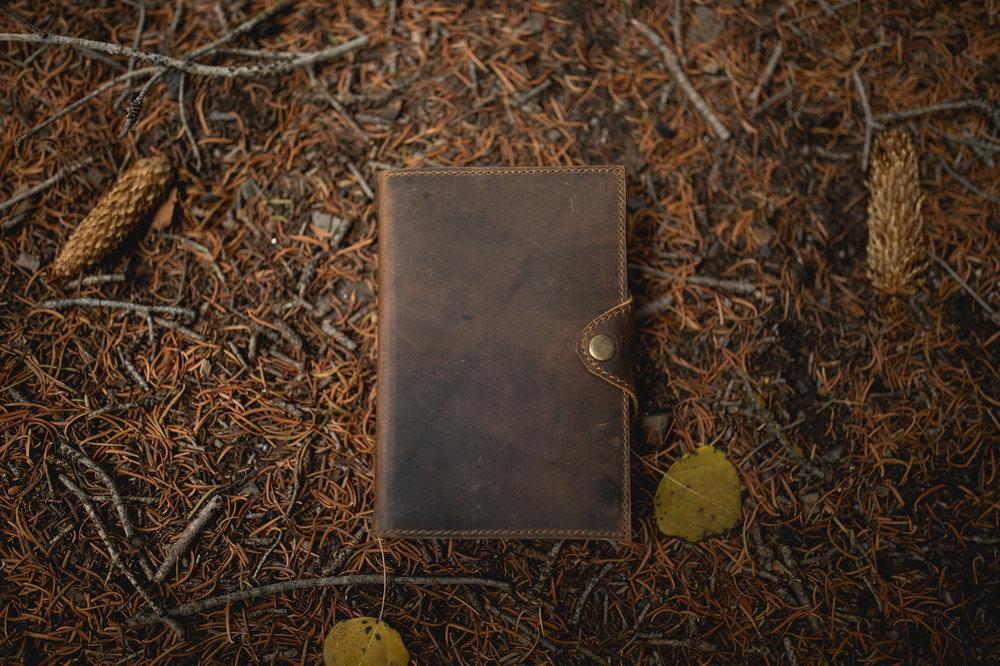
Planner/Travel Journal
Keeping a journal is one of the best things to do when traveling. The Drifter Leather Journal by Kodiak is our favorite, it works great for digital nomads and organized backpackers and can be used as planner or a dream diary – whatever you want!
Keep on track with your goals, travels and save those precious memories, especially the ones you do not want to share online. This one is bound in beautiful leather so it looks beautiful and will withstand life on the road.
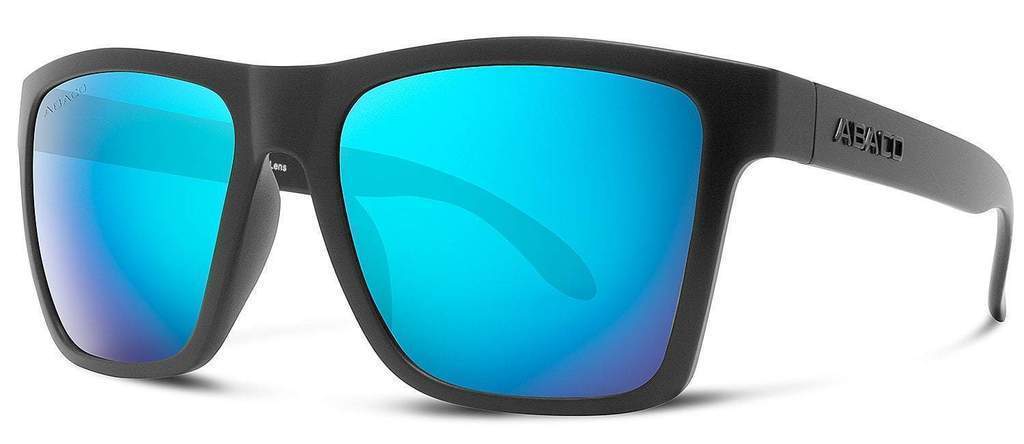
Abaco Sunglasses
Europe does get bright. Southern Europe stays sunny all year round and even the Nordics get some serious winter light. A reliable pair of sunglasses is undoubtedly one of your Europe packing essentials. Our favorites are Abaco Polarized Sunglasses because they deliver on quality and style.
They’re built tough with triple-layer scratch-resistant lenses and trademarked Adventure-proof Frame Material. You can also customize them with your choice of lens and frame colors to reflect your own style.
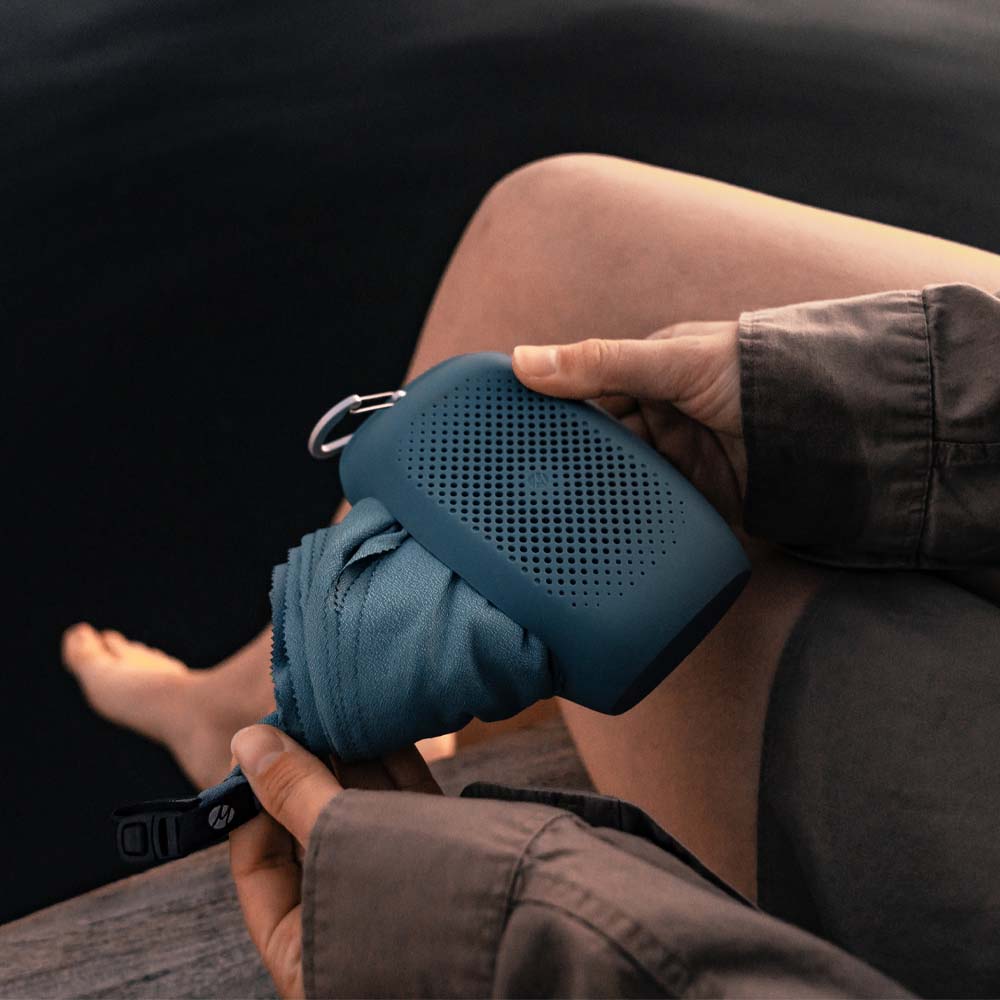
Quick Dry Travel Towel (Gotta stay dry!)
Towels are essential backpacking gear as a lot of hostels don’t provide them or if they do, they may not really be all that clean. However don’t bring a ‘normal’ towel on your backpacking journeys, they are big and take up loads of room in your pack and they take ages to dry.
Travel pros like use micro-fibre dry towels that roll up into tiny, space saving proportions AND they dry unbelievably quick. A good micro-fibre travel towers is essential travel gear on any ultimate backpacking gear list. The Matador micro-fibre towel series are made by travellers for travellers. They are super light, and most importantly dry very quickly and are perfect for all types of backpacking trips.
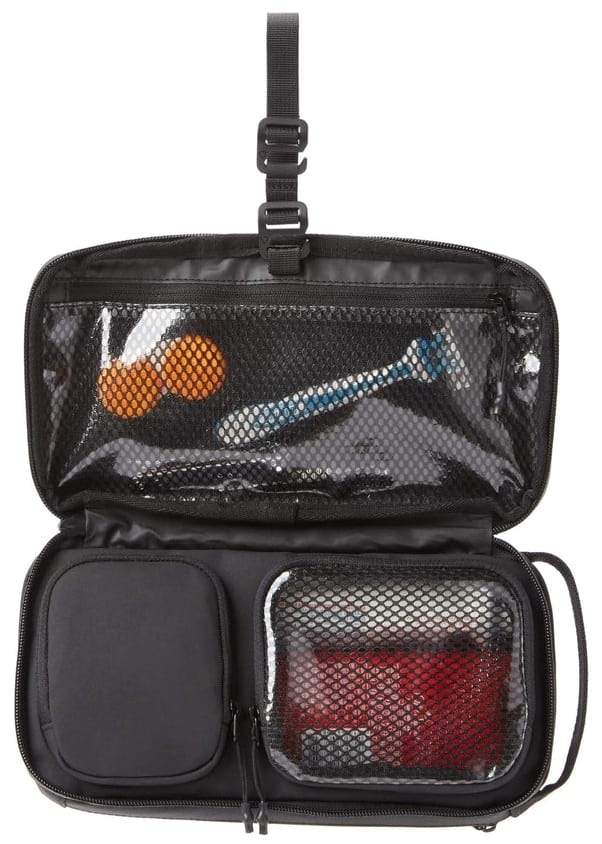
Hanging Toiletry Bag
Another backpacker/traveler favorite for staying organized is a hanging toiletry bag . It’s extremely helpful to have all of your accessories neatly gathered in one bag that you can hang for easy accessibility, especially when counter space isn’t plentiful or even available. A well-organized bag is worth having whether you’re tree whilst camping or a hook in the wall – it helps to have quick access to all your stuff.
Historically, I have been the guy who has my stuff all over the bathroom, so getting one of these things really changed the toiletry game for me. Plus they are not too expensive either. A no-brainer essential.
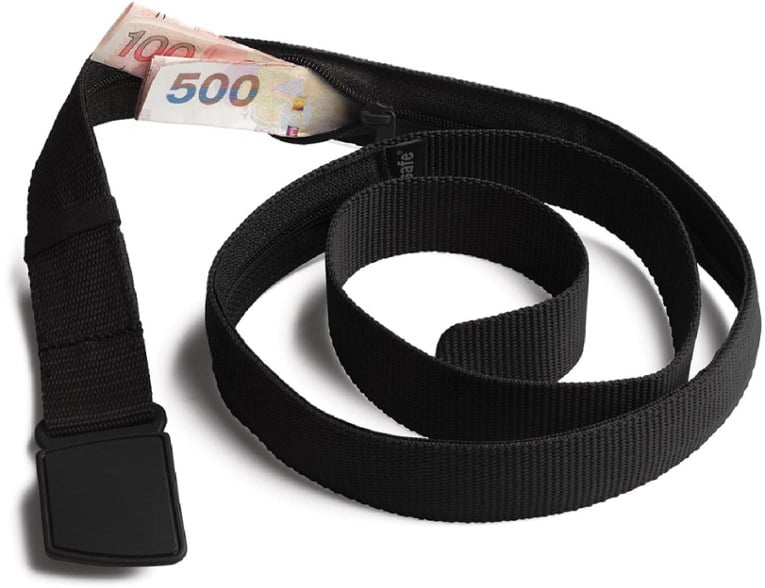
Money Belt – By Pacsafe
Whilst Europe is not particularly dangerous, crime can still happen and tourists are sometimes targeted.
Therefore it is always a good idea to use a money belt to hide your cash just in case something does go wrong.
You can pick up a money belt for $5 but the buckle will break the second time you unfasten it so spend a few bucks and get this from the good peeps at REI.
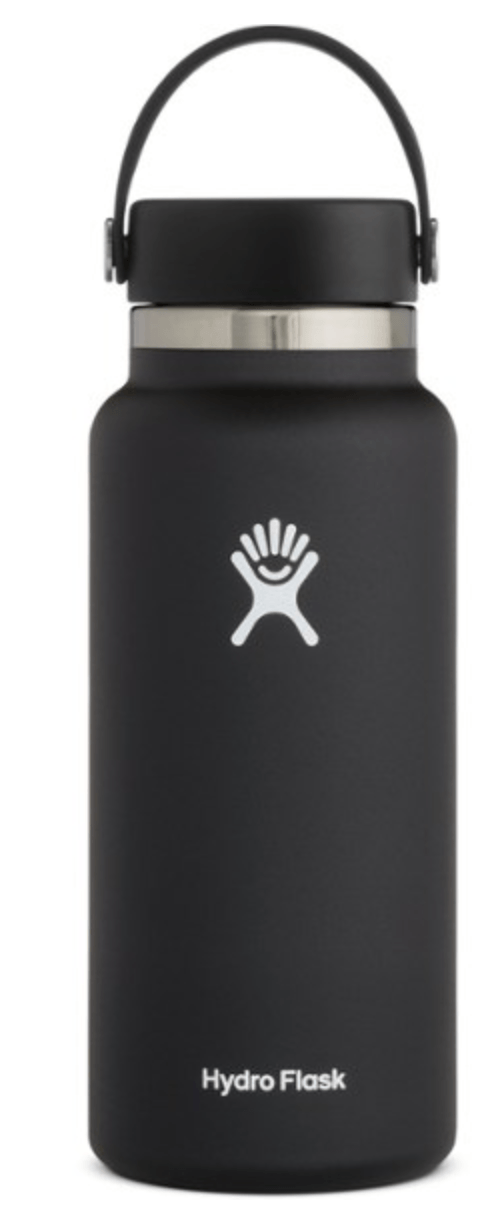
Waterbottle – Hydroflask Vacuum Bottle 32 oz.
Packing a reusable water bottle is probably the best thing you can personally do to combat single-use plastic bottle use whilst traveling. There is simply zero need to buy plastic water bottles. Most European tap water is safe to drink, but this is not always the case. Do check. Even in counters where it is safe, it may not agree with your personally.
We love the Hydroflask Vacum Bottle for its quality and because it keeps cold water cold for many hours and vice versa for hot beverages. This bottle is the ideal water bottle to get not just for your Europe trip but for daily use. Please don’t be that person buying plastic water bottles. We are all judging you…especially mother earth. If you go with the Hydroflask, you’ll probably never need to buy another waterbottle again.
The Basic Stuff To Pack For Europe

On top of the essential items listed above, here is an additional suggested checklist of what to pack for a trip to Europe:
- 1-2 pairs of comfortable pants/jeans
- 1-2 pairs of shorts (summer/late spring)
- A few pairs of socks
- (Sexy) underwear x 2/3
- Ladies: a few dresses, pants, outfits, or desired lady apparel for a night on the town. Whatever makes you comfy!
- Dudes: A few collard shirts or something half-way decent for a night on the town. Whatever makes you comfy!
- Smartphone with a good camera for photos if you are not bringing an actual camera
- Portable power bank for charging your phone on the go
- Phone charger
- Amazon Kindle for reading on trains and beaches
- Aeropress if your European AIRBNB or Hotel has hot water making capabilities
- Copy of your passport just in case
- Cash (not too much, there are ATM machines everywhere in Europe)
- Packable Towel
- If you’re headed to Northern Europe in winter you might want to pack some gloves or mittens .

Our GREATEST Travel Secrets…
Pop your email here & get the original Broke Backpacker Bible for FREE.
See, packing for Europe isn’t that tough, is it? Well, it shouldn’t be now that you’re equipped with your 22 needs packing checklist, tips on what to wear and pack by season, special considerations for women and men, and what backpack you should get for your travels.
Just pack smart and don’t sacrifice style for packing light – you can do both! Focus on the essentials, and you have nothing to worry about – other than having an amazing time and getting the most out of all the splendors Europe has to offer!
Have any Europe packing tips of your own? Why not share them in the comments below? Happy travels, friends!

And for transparency’s sake, please know that some of the links in our content are affiliate links . That means that if you book your accommodation, buy your gear, or sort your insurance through our link, we earn a small commission (at no extra cost to you). That said, we only link to the gear we trust and never recommend services we don’t believe are up to scratch. Again, thank you!

Mathilde Magnier
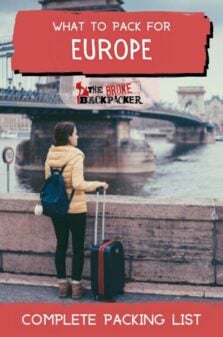
Share or save this post

Great info and suggestions but would also like some help with “winter” packing suggestions for two week trip in second half of December to France (visiting Paris, Strasbourg, Saint Etienne, Lyon) for gender specific women list and a men’s list. Planning on each checking a large bag and then carrying a small/medium travel bag (fits under seat or overhead bin).
Leave a Reply Cancel reply
Your email address will not be published. Required fields are marked *
Save my name, email, and website in this browser for the next time I comment.
Notify me of followup comments via e-mail.
15 essential packing items for a Europe trip
Recently updated on April 23rd, 2024 at 02:45 pm
So you’ve booked your dream tour and organised your flights… Now you need to pack! Europe is a massive continent with all kinds of different climates, cultures and landscapes. So where do you start? From what to wear in Europe to gadgets and medical essentials, here is our guide to everything you need to pack when planning a trip to Europe .
1. Versatile clothing
Europe has a reputation for being fashionable, from the minimalist clothing of Scandinavia to the elegant style of the Mediterranean. While you don’t need to walk around in haute couture, you also shouldn’t wear sloppy clothing or gym wear everyday. If you want to blend in and be comfortable, go for casual yet refined options. So what exactly do you wear in Europe?
In general, go for versatile layers that can take you from day to night. For example, you can wear dark wash jeans, a light t-shirt and sneakers during the day, then dress it up with a nice jacket, accessories and sandals by night. Or, go for trousers, dresses or skirts that can easily be dressed up or down. Of course, what you wear in Europe will change depending on the season (it can go from blazing hot summers to freezing snowy winters), but in any season, remember to pack light and choose layers you can mix and match.
We think you’ll also like: Top 10 Hidden Gems in Europe

2. Comfortable shoes
Although you’ll want to blend in with the stylish locals, the top priority is comfort when you’re planning a trip to Europe. You’ll be walking a lot, often on bumpy cobbled streets or hillsides, so you’ll need a comfortable pair of shoes to carry you through your trip.
Depending on the weather, that may be sneakers or sturdy sandals, or you may need hiking boots if you plan to hit the Alps. It’s also good to bring sandals or flip-flops for lounging by the pool or the beach. Whatever shoes you bring, make sure you break them in before you leave to avoid any nasty blisters.
Discover Europe’s landscapes on Grand European

3. Accessories
When you’ve got minimal clothing options, accessories are a great way to jazz up an outfit. You can pack light, colourful scarves, hair ties, hats and sunglasses, or throw on some jewellery (don’t bring any expensive stuff) like earrings, necklaces, bracelets or even use belts to stand out and complete your look.
We think you’ll also like: Where to travel in Europe in your 50s, 60s and 70s

4. Sun protection
Whether you’re travelling in summer, winter or somewhere in between, you always need to bring sun protection for your trip to Europe. Bring a hat, sunglasses and plenty of high SPF sunscreen.
Discover Europe in 14 days on European Whirl
5. Rain protection
You also need to consider the rain when planning a trip to Europe. Come prepared in any season with a raincoat, small travel umbrella or rain poncho.

6. Day bags
When you’re planning your trip to Europe, you’ll probably want to dedicate most days to sightseeing and different activities. Since you’ll spend so much time out and about, you’ll need a secure bag to hold all your daily essentials like your water bottle, sunscreen and camera. Whether you bring a backpack or cross-body bag, make sure it’s lightweight, waterproof, theft-proof and has plenty of pockets. For the evenings, you might like to bring a smaller bag or purse.
We think you’ll also like: 21 random fun facts about Europe you never knew
7. Toiletries
Your toiletries are up to you, but we always recommend pouring your products like shampoo and moisturiser into smaller, reusable travel bottles, to save space and produce less waste. If you don’t want to bring a bunch of liquids (that always seem to explode in your bag), you can try solid toiletries, like shampoo, soap, moisturiser and deodorant bars and toothpaste tabs. It’s also handy to bring a hanging toiletry bag to make it easier to reach in the bathroom.
Go back in time on our Traditional Europe tour

8. Medical kit
While you can usually find everything you need once you arrive, it’s always useful to bring a small medical kit when planning a trip to Europe. You’ll firstly need to pack any prescription medication you need and bring enough for your whole trip.
Other handy items include hand sanitiser, painkillers, electrolytes, antiseptic ointment and bandaids, eye drops, insect repellent and travel sickness tablets. If you’re a light sleeper, bring earplugs and an eye mask. Be sure to consult your doctor for specific travel health advice for your trip.

9. Reusable water bottle
You can help reduce plastic waste and save money by bringing your own reusable water bottle. You can refill it in destinations where it’s safe to drink the tap water, or use the filtered water at your hotel, or drinking fountains and refill stations found across Europe.
Curious as to whether it’s safe to drink the tap water in Europe?
10. Smartphone or camera
This is one of the most essential items on anyone’s list when planning a trip to Europe. From the icons like the Eiffel Tower and the Colosseum to the magical landscapes like the Swiss Alps and Amalfi Coast, you’ll want to take hundreds of stunning photos on your Europe adventure. Whether you use your smartphone camera or bring a separate SLR camera, make sure you bring extra memory cards, chargers and waterproof cases.
We think you’ll also like: Stays with Stories: 5 Unique Accommodations in Europe

11. Travel adaptor and power strip
Speaking of gadgets – you can’t leave home without a travel adaptor. Check the plug type and voltage of the destination you’re visiting before you go, or bring along a universal travel adaptor if you’re visiting multiple countries with different plug types.
If you have a lot of electronics, or you’re travelling with other people, a power strip is very handy. You can charge everything at once, or if you only have one outlet in your room, you won’t be fighting over who gets to use it first!

12. Entertainment for the road
When you’re planning a trip to Europe, you’ll probably have some long plane rides or coach journeys. Come prepared with some light entertainment like headphones to listen to music, or an e-reader stocked with books. While paperbacks are great, they can be very heavy, which isn’t ideal when you need to pack light.
Take our Travel Quiz: Where Should I Visit in Europe?
13. Sealable bags
It’s always a good idea to bring a few waterproof, sealable bags. They can be small dry bags or toiletry bags, and they’re great for storing wet clothes, liquid containers to prevent spillage, or valuables like your passport, cash or phone.

When you’re planning a trip to Europe with Trafalgar , most of your expenses will be covered before you go, including hotels, transport and some activities and meals. But you’ll still need to bring some extra money for things like souvenirs and extra activities or meals. We recommend bringing your debit and credit cards, and some extra local cash. UK pounds and euros will get you across most of Europe, however you’ll need to check your specific destinations for their local currency.
We think you’ll also like: 15 European destinations that really come into their own in the winter
15. Important documents
You probably won’t leave home without your important documents like your passport and visa (we hope!), but you should also bring photocopies of these documents. In the unfortunate event you lose or damage your documents, the photocopies will be very useful in getting replacements or important information. We recommend bringing copies of your passport, visas, travel insurance and any tickets. It’s also handy to write down local emergency numbers on a small card and keep it in your bag on your trip.
Are you planning a dream trip to Europe? What essentials will you pack for Europe? Let us know in the comments below!
Want to hear more from us?
Sign up to receive inspiring travel articles, offers & news
" * " indicates required fields
Privacy Overview
Sign up for our emails.

15 Europe Travel Essentials: Backpacking Europe Checklist

It can be overwhelming when traveling to Europe to make sure that you have all of the essentials you need for an international trip. This list of 15 Europe travel essentials will ease your mind and set you up for success on your upcoming travels! Use this as a checklist to make sure you have all of your Europe travel essentials.
1. Universal adapter
A universal travel adapter is an absolute essential when traveling to Europe. You do not want to be that person who takes the power out of the entire hotel!
Here is our favorite universal adapter!
2. charging bank.
Always keep an extra charging bank with you in case you do not have access to an outlet while traveling in Europe.
Large device charging bank Small device charging bank

3. Packing cubes
These packing cubes are an absolute travel gamechanger and definitely a Europe travel essential! They will allow so much extra space in your bag. While we always recommend packing light for travel, these will also allow you to bring a few extra articles of clothing while traveling to Europe.
Read how to pack light for long term travel here.
These are our tried and true favorite packing cubes!
4. travel insurance.
It is always a good idea to purchase travel insurance just in case your items are lost, stolen or any mishaps occur during your travels. World Nomads is a great option for every trip and affordable considering everything they cover!
5. Toiletry bag
Keep all of your extra Europe travel essentials organized with this toiletry bag. Especially if you are moving quickly between cities in Europe, you will be thankful that everything you packed has a place so you are not spending extra time sifting through your bag while getting ready.
Read here for 20 essential travel toiletries you should always pack!
Here is our favorite hanging travel toiletry bag.
6. copy of passport and travel documents.
Always have both printed and digital copies of your passport easily accessible with your belongings. This will save you tons of time if your passport is ever lost or stolen.
We also recommend printing your basic travel plans like flights and housing confirmations before leaving for a trip to Europe. While you will also have these details accessible on your phone, you want to be prepared in case you suddenly do not have access to the internet and need to find the information.
7. Microfiber towel
It is always a good idea to travel with an extra towel whether or not you are going to a beach destination! This towel takes up barely any space in your bag and you will find use for it.

Buy our favorite microfiber towel here.
Use code JLJ10 for 10% off all eSIM purchases.
8. RFID money belt or wallet
Protect your cards and cash with an RFID money belt or wallet while walking around crowded cities.
RFID Money Belt
Rfid wallet, 9. travel credit and debit card.
If this is your first time traveling internationally, then you may not realize the importance of an international credit and debit card. While there are tons of options out there, we use Charles Schwab for a checking account because there are no ATM fees anywhere in the world and Chase Sapphire Reserve credit card because of the high number of points it gives for travel related purchases.
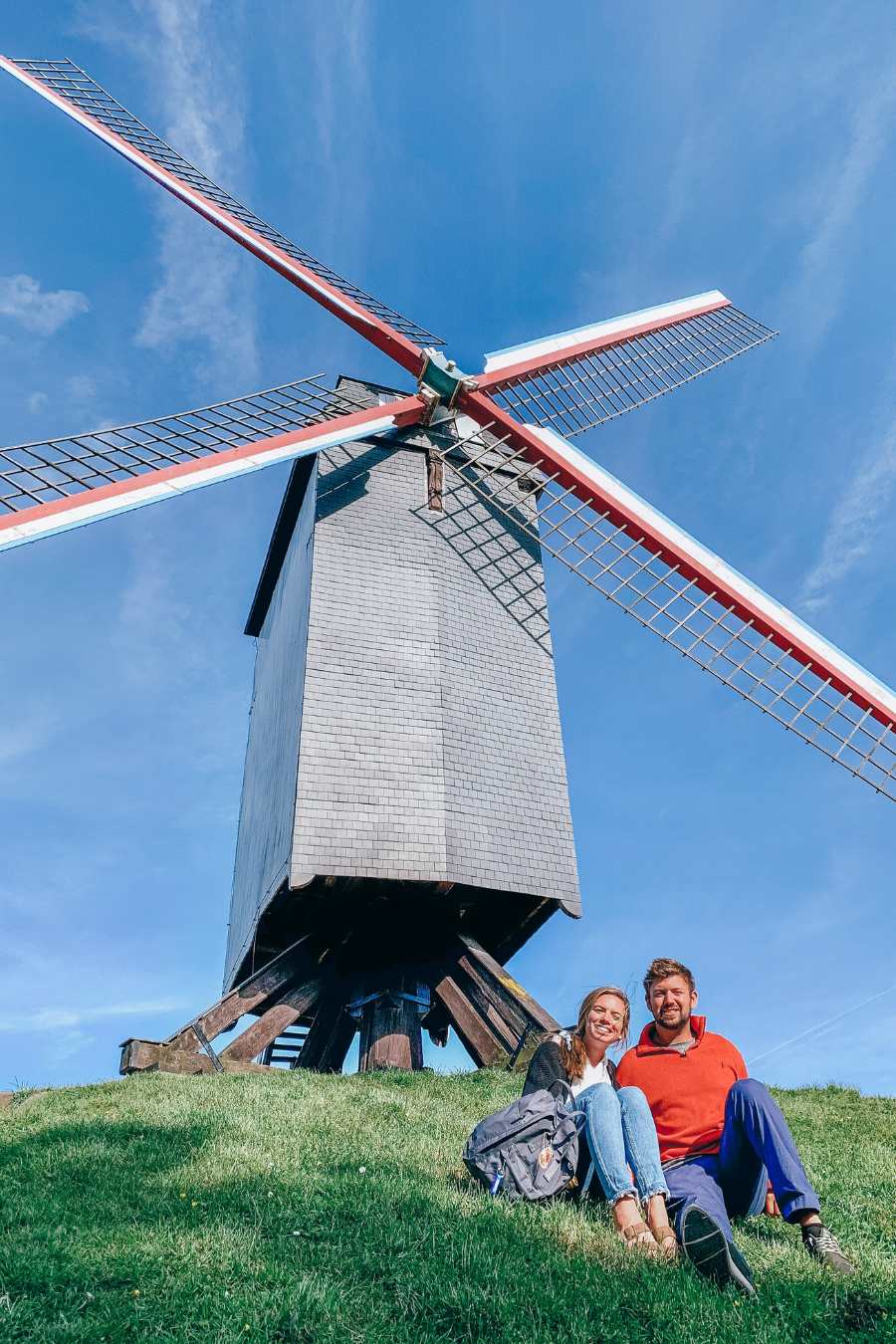
10. Reusable water bottle
You will save tons of money by bringing your own water bottle to Europe. Fill it up for free in the airport or at the public water fountains in Piazzas.
Read other tips for traveling on a budget!
We love this sized water bottle for travel.
11. airtags.
These are very popular these days and totally worth the investment while traveling to Europe! Airlines are losing customer’s luggage more and more and these will keep you in the know of where exactly your bags are located.
Get a four pack of AirTags here.
12. luggage locks.
These are lightweight and easy to put on every bag you bring to travel in Europe. Oftentimes you may find yourself leaving your bag at a luggage storage office or behind the desk at your hotel. These locks will ensure your belongings are safe in your bag.
We also sometimes use these luggage locks on our day bags as a decoy. Whether you actually lock your bag or not, these may simply be used as a decoy to potential pickpockets.
Get a six pack of luggage locks here.
13. reusable shopping bag.
This may seem completely random but we promise, you will get so much use out of a reusable grocery bag. Use it to carry groceries for a picnic or bring home those extra trinkets. Simply lay this bag flat in your bag and it will take up no extra space when you are not using it!
This is the perfect versatile beach bag or reusable shopping bag!
Again, this may seem silly but a pen is essential for European travel. You will be thankful when you have it accessible on your airplane carry-on and can easily fill out any customs documents!
15. Travel apps on your smartphone
You will need specific apps downloaded on your phone to make traveling in Europe a breeze for you and your group.
Down these apps and set up your account on your smartphone before you travel to Europe!
Additional europe resources:.
Read this packing list to know exactly what clothes to pack! Still planning your itinerary? Here are our favorite 10 day Europe trip routes.
We hope this list of 15 Europe travel essentials prepares you for your upcoming travels! Love any of these ideas or have more to share? Let us know in the comments! Happy traveling!
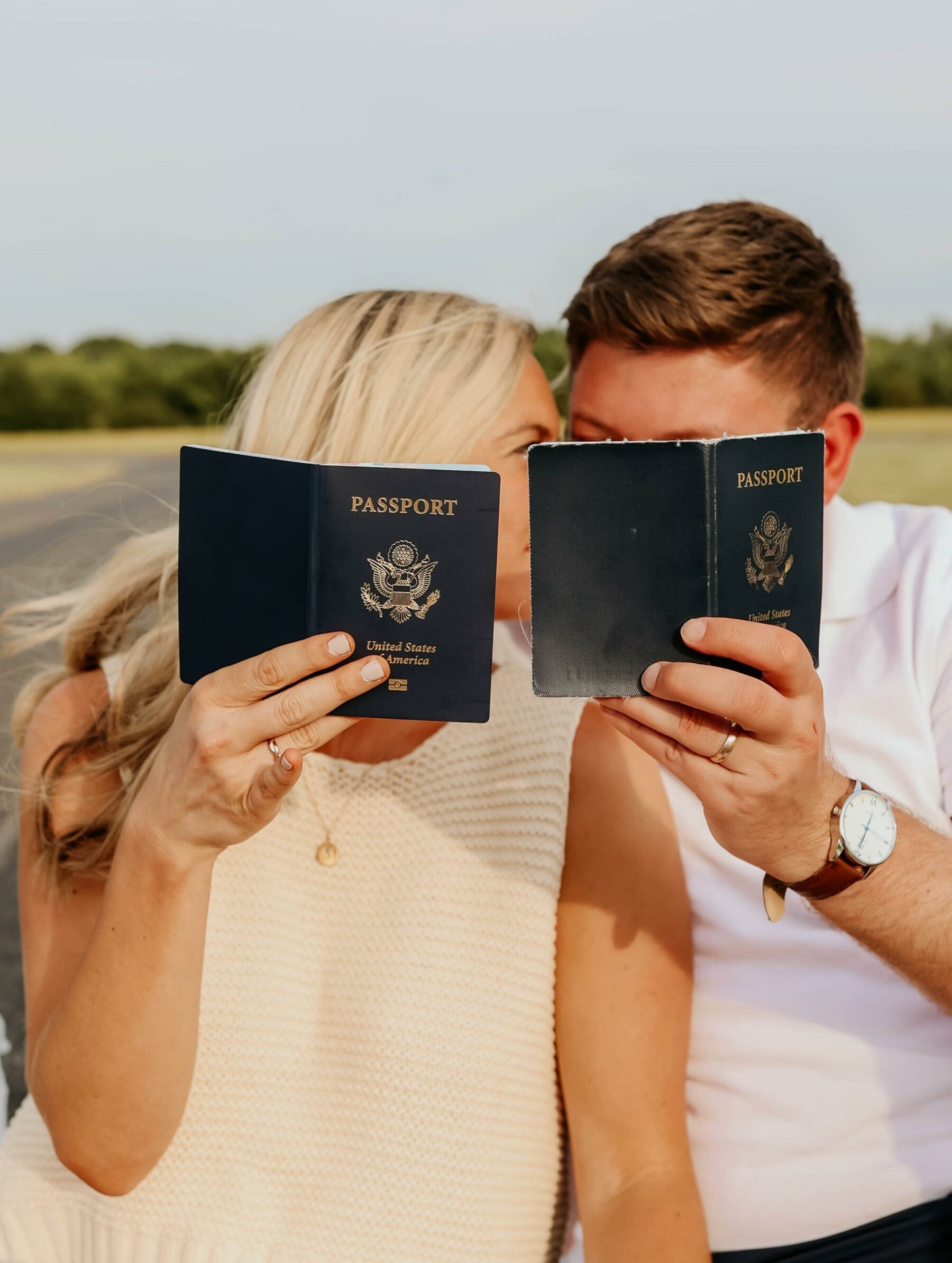
Hi friends! Welcome to The Jet Lag Journey.
This is an online destination that tackles difficult travel questions in order to make worldwide travel practical and accessible. Happy exploring!
Posts to Start with

50 Europe Travel Tips: A First-Timer’s Guide to Traveling to Europe
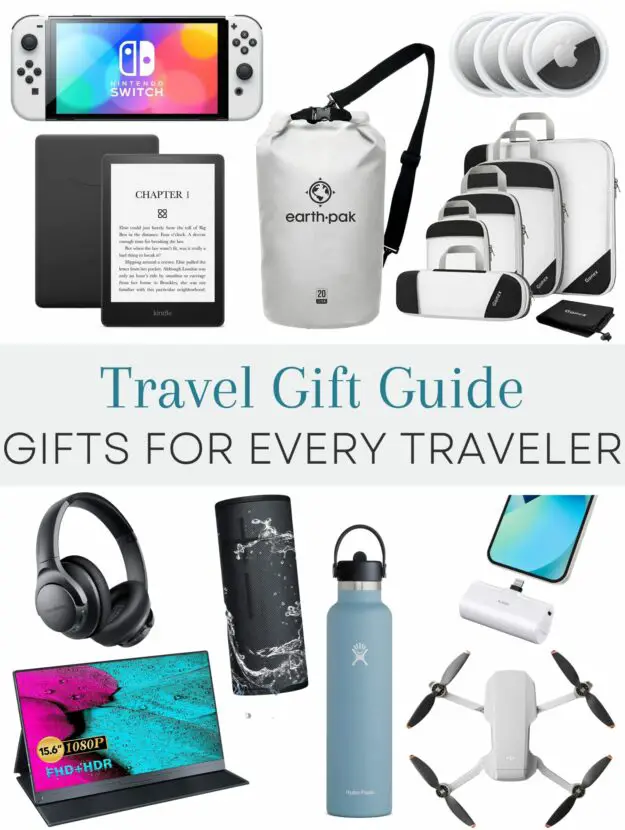
Travel Gift Guide: 25+ Best Gifts for all Travelers in 2023
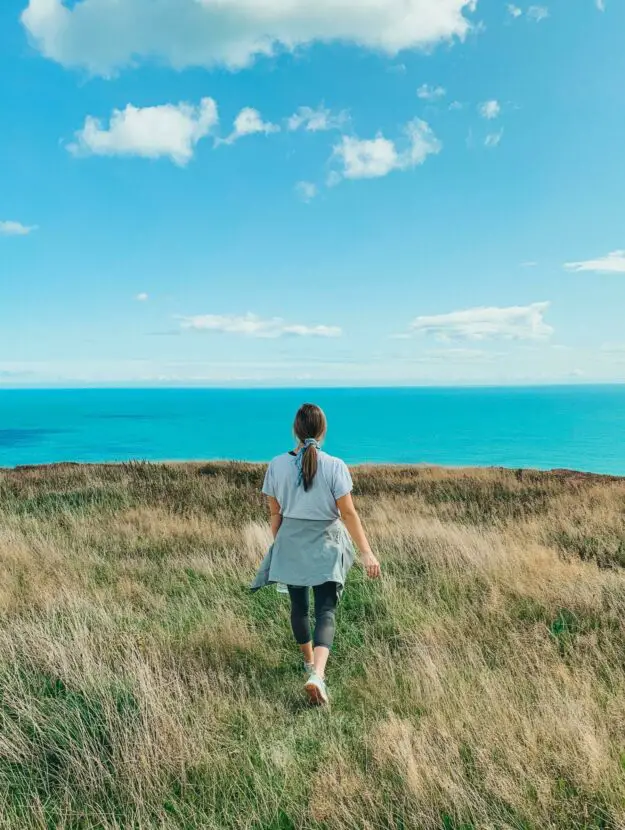
How to Quit your Job and Travel
More posts you might like.
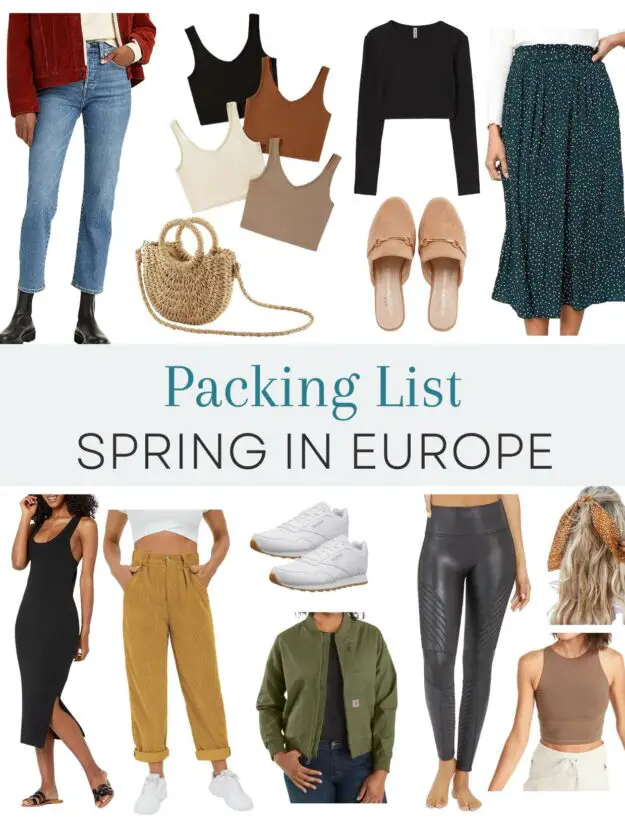
What to Pack for Spring in Europe 2024: A Complete Packing List and Outfit Inspiration

How Much Does 3 Months in Europe Cost: A Complete Budget Breakdown
Leave a comment.
Save my name, email, and website in this browser for the next time I comment.
What are you searching for?

Thoughtful Travel Experiences

The guide to ultimate Travel Essentials for Europe packing Checklist
Many guides tell you what to pack for Europe, but through this one, we’ll show you how to pack your travel essentials for Europe trip. It’s natural that we want to prepare well because preparation lets us make the most of every moment.
So, we stress out and pour over so many blog posts, articles, and guides in hopes of finding practical advice. This can get overwhelming especially for first-timers because of the surplus of resources. We also end up a lot more confused because they all tout to be the ultimate checklist.
But you don’t need to stress because it really just boils down to what’s essential and what’s not. Meaning, what’s relevant to you and the kind of trip you’ll be going on.
What Are Europe Travel Essentials?

Merriam-Webster defines essential as something that’s basic, indispensable, necessary . Something that’s so important your trip won’t happen or won’t roll out well.
Examples of necessary, indispensable, and basic travel essentials are:
- Visa, money, travel insurance, clothes, and travel advisory knowledge.
Why should you include these in your things to pack for Europe? Here are a few Europe travel tips that will help you get the principles behind essential and non-essential.

The Schengen Visa is your document for entry to European countries in the Schengen area. Entry isn’t possible without it. Northern region countries like Denmark, Finland, and Sweden require a Schengen Visa. Southern region countries such as Italy and Spain require this visa too.
But you won’t need a visa for entry if you’re from a country who has an agreement with the European Union (EU) for a visa-waiver. Read more about Schengen Visa requirements on the European Commission’s official website .

Opinions vary whether travelers should purchase Euros before the trip or simply withdraw via ATM upon arrival. A good rule of thumb is to have enough cash to get you by. Pro Europe travel tips are bringing cash and your credit card too.
Bring cash that’s at least a day’s worth of meals and transportation in case the ATMs or your credit card won’t work. Then upon arrival, withdraw in local currency using the ATM. Use your credit card to pay for larger expenses like hotels and restaurants.
Additionally, make sure your cards (ATM and credit) are activated or eligible for international use so you can withdraw and swipe without hassle.
Travel Insurance

This will cover the costs of any mishap that may occur (that’s included in the policy) like accidents and hospitalization, lost or stolen items. An insurance is a travel essential you’d want to keep handy so you’ll always be ready.
If you travel without one and then something unexpectedly happens, you might end up spending your budget on those mishaps. Save your money and spare your piece of mind by letting a travel insurance cover you for those.
Seasonal Clothes

Packing the right kind of clothes for the season will determine how much you’ll enjoy your trip. The chill factor of winter is different from the climate of fall.
And so is the breeze of spring different from the balmy weather of summer. You’d want to have the appropriate clothes in your travel essentials so the weather won’t get to you. But rather, add enjoyment to you and your trip.
Travel Advisory Knowledge
Get to know the European Commission’s latest travel advisory . Travel advisories are like your Europe travel guide, they update visitors about official tourism information about the country. Knowing the allowed activities will help define what items you’ll need to prepare for your Europe travel revenge.
You’ll also get to know what countries are allowed for non-essential travel to Europe. And also, the specific travel guidelines of each European country.
- Check out the European Commission’s website for these. It’s best to get info from an official source.
- Additionally, visit the Re-Open EU website. This is the European Commission’s official website that gives travel advisories for the European Union’s reopening. Updates are per country. Just click the dropdown list, choose the country, then you’ll find the travel advisory of the country you’re visiting.
Travel Essentials for Europe Starter Pack
In this section, we’ll share Europe travel essentials in context of its top destinations. We’re sharing these Europe travel tips because we want to set you off on a great start. Let’s go!
Northern Europe
Southern europe, western europe, eastern europe.
As you choose what to pack for Europe, keep in mind the European country you’re visiting because each one’s local setting has its own needs. Bring this together with the country’s current season or climate and this will help you narrow down to only the most essential.

Northern Europe Top Destinations : England, Scotland, Norway, Iceland, Sweden
This region is where you’ll find the Northern Lights, the London Bridge, the Midnight Sun, endless hills to ski, beautiful fjords and landscapes amidst bustling modern cities.
Being up in the north makes these countries really cold during spring and winter so make sure to bring layers like coats, jackets, gloves, and sweaters to keep you warm. Remember to pack clothing items that are neutral in colors as well to blend in with the European fashion style. Pops of color are alright as long as they’re in taste.
Umbrellas and rain jackets are a must too because these areas experience moderate amounts of rain.
- Wind-breaker jacket, rain jacket
- Coats, gloves, warm jackets, thermal tops and pants, long sleeves
- European power adapter
- Sturdy city boots or hiking boots
- Comfortable and stylish loafers, boat shoes, ballet flats
- Light-weight backpack for nature trips, stylish daypacks for the city, backpacks you can wear in front
- Sunglasses, sunscreen

Southern Europe Top Destinations : Greece, Italy, Portugal, Spain, Croatia
Southern Region offers a Mediterranean Europe travel experience that indulges you with fresh seafood, turquoise waters, warm summers, and mild winters.
Things to bring for Southern region involve a more relaxed checklist for the warm enjoyable weather. Include your trench coat, gloves, jackets, and boots if you’re visiting during winter.
- Sunscreen, sunhat, umbrella
- Stylish sandals, loafers, walking shoes and flats
- Plain tops and bottoms in neutral colors, avoid shirts with graphic logos
- Beach wear: shorts, swimsuits
- Power adapter, power strip
- Light scarves, sweaters

E astern Europe Top Destinations : Hungary, Poland, Russia, Romania, Czech Republic
Eastern Europe is where you’ll find Europe top destinations like Budapest in Hungary, Russia’s historical and richly cultural St. Petersburg, and the fascinating architecture of Prague at the Czech Republic. Art, history, culture, and panoramic nature scenes greet you in Eastern Europe.
Eastern Europe enjoys a continental climate where winters are colder compared to other its Mediterranean counterparts. But summers enjoy some heat too which makes for pleasant walks around the city.
- Jackets: Parka, hoodie jacket, down jacket, insulated jacket, rain jacket
- Dark or neutral-colored t-shirts and dress shirts, long sleeves, slacks
- Sunhat, sunscreen
- Beanie hat, ear muffs for winter
- Sandals, ballet flats, comfortable dress shoes
- Walking shoes
- Hiking boots, snow shoes
- Thermal socks
- Daypack or small backpack you can wear in front

Western Europe Top Destinations : France, Germany, Austria, Belgium, Switzerland
Home of the iconic Eiffel Tower, the majestic Swiss Alps, the medieval architecture of Belgium, and the awe-inspiring blue mountains of Austria. Western Europe enjoys a generally mild climate throughout the year in its cool summers and comfortable winters. You’ll get to enjoy warmth and chill in Western Europe.
You might notice that the list will contain clothes that are a notch higher than the usual casual. It’s because the locals’ way of styling in Europe is a bit dressier than normal.
Blend in like one by dressing up in classic shades, staples, and shoes. It will be good for the pictures too! Additionally, having a light carryon daypack will make transit in between cities easier as you tour Eastern Europe.
- Dress shirts, slacks, elegant dresses or outfits
- Sweaters, cardigans, scarves, neutral-colored t-shirts, pants, jeans
- Dress shoes, pumps, stylish walking shoes
- Rain jacket, umbrella
- Water bottle
- Power adapter
So there you go, travel tips and travel essentials for Europe trip! We hope you learned a lot from this article. Bon voyage! You got this! If you have any ideas to share on travel essentials or travel experiences, please share them in the comments below or contact us
Leave a Comment Cancel Reply
Your email address will not be published. Required fields are marked *
Save my name, email, and website in this browser for the next time I comment.

Packing List for Europe: Travel Essentials for Trip to Europe
Disclosure: Some links are affiliate links – which means, at no extra cost to you, I earn a small commission if you make a purchase through a link.
Heading to Europe soon? Planning a trip to Europe can be such an exciting and exhausting experience. On one hand, you’re excited about all the wonderful things you’ll see and do on your trip around Europe. Yet, on the other, you find yourself worrying about two things.
#1. Will you be able to see everything there is to see? I won’t lie, FOMO is very real.
#2. Does your packing list for Europe have every essential item you need to make your trip smooth sailing?
While this post won’t be able to solve problem #1, I’m here with my ultimate Europe travel checklist to help you with problem #2! A complete list of travel items you need for your trip abroad!
Let’s get start!
Table of Contents
Top Europe Travel Essentials
These are the top travel items that should be on everyone’s Europe packing checklist. Don’t leave home without them. Have these travel necessities before you arrive at your destination to ensure a seamless start to your trip. Otherwise, you’ll be frantically searching for these items in Europe instead of enjoying your trip!
1. Travel Adapter
Before traveling to Europe, it’s important to know that the voltage and the electrical outlets in Europe differ from the US.
The voltage in Europe is at 220 volts, so you can’t plug your electronics into the wall without using a voltage converter . You’ll fry it, just like how I almost fried my Nintendo DS in China. However, if you see “100-240V” listed on your charger, then you’re good. It means this electronic is dual voltage and you won’t need the voltage converter.
Now, let’s talk about the outlets in Europe. Without a travel adapter, you won’t be able to plug in your standard US chargers into the sockets in Europe.
An European travel plug adapter is good for Type C sockets (two round prongs). This is the common socket type used in most European countries, but not all.
Instead of buying multiple types of travel adapter, save the hassle and get yourself a universal travel adapter that can plug into any outlets in the world. This small yet essential item will help you charge all your electronics and prevent any inconveniences. Trust me, it’s a must-have to keep your phone alive!
2. Durable Suitcase
If there’s one thing worth splurging on, it’s spending money on a good suitcase with very durable wheels. This suitcase will be the home to all your stuff for the entirety of your travels.
The last thing you’d want during your trip is to have a cracked suitcase or a suitcase with broken wheels. Imagine dragging that through Europe’s cobblestone streets during the heat of the summer. Not a pretty scene, I assure you.
Proof you need a durable suitcase:
I had to run while dragging two 50lb suitcases with broken wheels through the airport trying to make a connecting flight. For the cheaper suitcase, 3 out of 4 wheels had gone MIA during the rough unloading process by the baggage handlers..
- In another incident, a friend had to find tape to patch up her cracked suitcase (another unfortunate victim of the check bagged unloading process).
3. Comfortable Walking Shoes
It’s not an exaggeration to say that you’ll be walking a lot while exploring these European cities. From cobblestone streets to hilly terrains, comfortable walking shoes are a must.
That’s why you need to invest in a good pair of walking shoes. Find one that provides lots of support and cushions. This will keep your feet happy even at the end of long travel days.
However, never travel with brand new shoes. Break them in before you travel so you won’t get blisters. If needed, pack some blister plaster to prevent blisters.
Some recommendation of good walking shoes are Adidas (their cloudfoam soles are godsend), Allbirds , and Tevas .
4. Travel Insurance
While it’s not a travel accessory, travel insurance is must-have whenever you’re planning a trip. It’s a safety buffer that offers protection for unexpected events that could ruin your trip.
SafetyWings is my go-to travel insurance during my trips. It is travel insurance specifically made for digital nomads and travelers. Which is why there’s so much flexibility when purchasing a plan. You can include all the countries you plan to visit during a single trip in the coverage.
Plus, it covers both medical and travel insurance. So you will be covered for medicinal emergencies, medical evacuations, trip delays, lost luggage, and much more.

It’s crucial to do your own research and select a comprehensive travel insurance plan that meets your specific needs. Before purchasing insurance, always carefully read the terms and conditions. Look very very carefully at the fine prints!
5. Portable Power Bank
When you’re constantly snapping photos and using GPS on your phone, your battery will be nearing 0% by mid-day. Especially during the hot European summer. That’s where a portable power bank comes to your rescue, ensuring you never run out of juice while on the go.
I highly recommend this Anker power bank . Not only is it lightweight and easy to pack, it also has enough power to give you multiple charges. The wireless charging feature is great when you forget to bring your cables. I had to hunt down a charging cable in Spain because the one I packed was defective, so the wireless feature really came in handy.
So, when you’re packing your day pack, don’t forget this essential lifeline!
6. Refillable Water Bottle
You’ll definitely want to bring a refillable water bottle when you’re traveling to Europe. It’s a great way to cut down on plastic waste and help save some money, especially in European cities where tap water is safe to drink. For example, Madrid has one of the best tap water in Spain, so I just fill up the water in the sink before leaving for my day trips.
For other cities in Europe where tap water is not consumable, you will want to pack a water bottle with a filter .
7. Theft-Proof Daypack
It won’t take you long on your European trip to hear some horror stories about pickpockets. Sadly, we’re all easy targets walking around an European city, especially in crowded tourist sites.
You won’t even feel these pickpockets sneaking up on you. I thought I was saved from pickpockets on my 5 week trip to Europe until someone pickpocketed me on the very last day!
Get yourself a theft-proof backpack or anti-theft cross-body bag with secure compartments to keep your belongings safe. The slash-proof material will prevent pickpockets from slashing your travel bag.
8. Packing Cubes
Ever since I found out about packing cubes, I cannot travel without them anymore. Which is why I think everyone should have them. Especially, if you’re flying with a budget airline and need to deal with the luggage restrictions.
Unless you’re a minimalist packer, it can be quite difficult to pack everything you need into a small suitcase. However, by using packing cubes, you can keep your clothes compact, organized, and wrinkle-free. There’s no need to unpack your entire bag to find that one shirt again!
I swear by these Osprey packing cube sets. For something that weighs close to nothing, it’s super durable. I’ve squeezed my clothing for multiple week trips into these 3 packing cubes!
9. Credit Card with No Foreign Transaction Fees
Don’t travel internationally without first getting yourself a travel credit card. By using a card with no foreign transaction fees, you will save on the 3% fees that regular credit card charges on every international purchase you make.
During my first international trip, I didn’t know about this and swiped up $$$ in fees alone! My heart dropped when I saw that credit card statement.
No one wants to hunt down missing luggages. Pack an AirTag into your suitcase or attached it to your important items so you can track their whereabouts!
Plus, when you’re not traveling, you can dump the AirTag in your car. This will save you the trouble of wandering the streets hunting down your car because you forgot where you parked it.
Whenever we’re on the go, it’s unavoidable that we’ll connect to a public WI-FI. Secure your browsing by using a VPN. They also work great if you don’t want to miss out on your Netflix shows while overseas. Just connect to a USA server and you’ll have your show! The VPN I use while on the go is Surfshark VPN !
Backpacking Europe Essentials

1. Durable Travel Backpack
You’ll want a backpack that’s durable enough to withstand all the throwing and lugging on your backpacking trip across Europe.
My go-to travel backpack is the Osprey Fairview . It has traveled with me across all over Asia and Europe.
Weighing at less than 3lbs, it’s great for backpackers because you’ll need to pack light. And since it’s only 40L, you can easily take it onto your flight as the carryon bag.
2. Flexible Combination Lock
If you’re staying in hostels, you’ll need to bring your own lock when using the hostel lockers. I love using the flexible combination lock . It is the perfect item for the job. Plus, when you’re on the road, you can also use them to lock up the zippers to your backpack or suitcase.
Don’t forget to include a dry bag on your travel essentials checklist! You don’t want to mix your clean clothes with your worn dirty clothes, right??? Repeat after me: No, we don’t.
A dry bag will hold those stinky clothes for you and prevent the odor from spreading until your next laundry day. If you’re going to a water activity, it’s also great for holding your wet swimsuit until you can dry it.
4. Portable Travel Door Lock
One travel essential item for anyone’s list is a light portable door lock . When you’re traveling for a while, you’re bound to come across some doors with wonky locks. A portable door lock will keep that door closed and secured, giving you a good night’s sleep.
Bring this with you on your next trip, especially if you’re going alone!
Read this blog for more safety trips when solo traveling !
5. Portable Luggage Scale
This digital luggage scale will be your best friend when you need to make sure your luggage doesn’t go over the airline’s weight limit. It’s small and lightweight and will easily fit into your luggage. This is how I make sure my luggage does not go over 15lbs when taking budget flights in South East Asia.
6. Travel Umbrella
You’re bound to encounter rain if you want to backpack for weeks in Europe. Pack a small durable travel umbrella for those rainy days. They’ll easily fit into a daypack so you can carry it on the go for days with 50% rain.
7. Hanging Toiletry Bag
A toiletry bag is useful for organizing your personal care items and keeping them easily accessible during your Europe travel.
When you’re staying in hostels, you’ll often notice the lack of counter space at the sink for your stuff. This is where a hanging toiletry bag that easily hangs on a hook or door is a godsend.
Store your liquids together in a clear plastic bag/case and keep them all under 100ml each to comply with airport travel restrictions. Packing travel-sized toiletries is the way to go!
8. Quick Drying Travel Towel
Hostels rarely provide towels for free. If you do not bring your own, you’ll need to rent one from the reception.
Now, before you pack that soft (but bulky!) bath towel into your bag, let me introduce you to the quick dry travel towels !
This amazing product is perfect for travelers who are constantly on the go. Unlike regular towels that take forever to dry, these quick dry towels are optimized for travel. It’s made from a special microfiber material that not only absorbs water quickly but also dries in no time.
Which means.. you don’t worry about a damp towel in your backpack! Plus, they pack small so you don’t have to worry about them using up half your luggage space! Get one now !
9. Portable Travel Hangers
Need something to hang your wet laundry? Pack a pair of these portable travel hangers so you can hang up your clothes anytime! Once you’re done, it folds into a compact size you can easily slip into your luggage.
I also love these convenient and lightweight cloth hangers . It’s super easy to find a pole or hanger to attach the cloth hangers to. Once you’re done, just clip your socks and undies and leave for the day.
Ultimate Travel Packing List for Europe
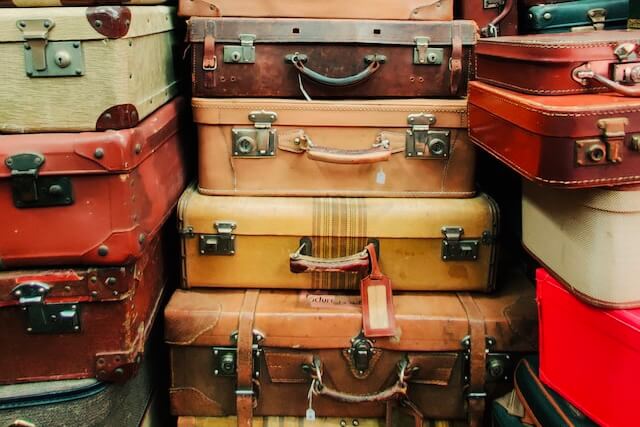
Adapt this Europe packing list based on the specific activities, climate, and duration of your journey.
Travel documents:
- Visa (if required)
- Travel insurance
- Copies of these important documents
- Enough outfits for each day of your trip (up to 7 days)
- Pants/Skirts
- Dresses (pack more one piece outfits if you want to reduce weight)
- Underwear x days of trip
- Cardigans for layers
- Windbreaker jacket
- Comfortable walking shoes for sightseeing
- Sandals (warmer weather)
- Flip-flops for shower & beach
- Dress shoes (for special occasions)
Accessories:
- Sun hat or cap
- Scarf / shawl (versatile use: cover up, cold weather)
Toiletries:
- Toiletry bag
- Shampoo & conditioner
- Skin care products
- Feminine care products
- Necessary medications
Electronics:
- Phone charger
- Selfie stick / tripod
- Camera (and charger)
- Adapter plugs for European outlets
- Any other devices you need & their charger
- External storage hard drive
Money and cards:
- Cash in the local currency
- Travel credit cards with zero foreign transaction fee x 2 minimum
- Debit cards x 2
- Notify your bank about your travel plans.
Miscellaneous:
- Refillable water bottle
- First aid kit
- Dry bag (serve as laundry bag)
- Portable fan (for those hot European summers)
- Download offline maps of destination
- Download country’s language pack in Google translate
Tips for Packing for Europe
Make copies of travel documents.
Before leaving for your trip, make sure you have all the travel documents, including your passport, visas, and any required vaccinations.
Make copies of these documents and store them in a separate location, as well as keeping digital copies in the cloud. This will speed up the replacement process if your documents ever get lost.
Is backpack or suitcase better for Europe trip?

When choosing luggage for your Europe trip, it really depends on your preference and travel plans.
If you’re planning a longer trip or like to bring back souvenirs, a checked suitcase will give you that flexibility in storage spaces.
Something to keep in mind, however, you’ll most likely be walking through the cobblestone streets in Europe. With a suitcase, lugging it through the uneven paths could get annoying at some point. If there’re no elevators in your accommodation, you’ll also need to lug your suitcase up the stairs.
Carrying a backpack will solve that mobility problem, but there’s another issue. Unless you’re packing super light, you’ll most likely feel the dead weight on your shoulders for the whole trip.
Carefully weigh the pro and cons of both options before you decide on which to bring on your trip!
What should you wear in Europe?
Dress your best because you’ll encounter Instagram worthy spots everywhere you go. You’ll even fit in better since you won’t be seeing many T-shirt and shorts combos in Europe. So pack clothes that are BOTH comfortable and stylish (ditch the uncomfortable clothes at home).
Since you’ll be moving around a lot, opt for lightweight, breathable fabrics. And choose versatile pieces that can be dressed up or down depending on the occasion.
Layers are essential to have, since they allow you to adjust to changing temperatures throughout the day.
Don’t forget to check the weather forecast for your destination, and make your list of items to pack accordingly.
How to pack light for Europe?
Packing light is key to having a stress-free travel experience in Europe. Start by making a list of everything you need and then carefully consider each item’s necessity. Do you really need to bring it or can you buy it in Europe? If you know your accommodate provides toiletries, you can even ditch the shampoo and conditioners.
Pack versatile clothes that can easily mix and match. Neutral colors work really well in this case. Minimize the number of shoes and accessories.
Having fewer items in your bag will make packing much easier as you move around places in Europe.
What to keep in your carry-on bag?
If you’re traveling with both a checked baggage and a carry-on, there’s a few things you’ll need to keep in your carry-on.
Make sure to pack your important documents, passport, travel itinerary, visas, and medications in your carry-on bag. In case your checked luggage gets delayed, pack a change of clothes and basic toiletries. Keep your electronic devices, chargers, and adapters in your carry-on.
By following this Europe travel essentials packing list, you will be well-prepared for your trip to Europe in 2023. No more scrambling to pack. Happy travels!
Interested in traveling with eco-friendly travel gears? Check out my 20+ eco-friendly travel product recommendations!
More Resources to Help You Plan Your Trip
- Don’t forget about travel insurance! I use SafetyWing for all my trips.
- Booking.com is great for finding deals on hotel stays.
- I love using Hostelworld for finding hostels with great vibes!
- Use GetYourGuide to find that unique experience you’ll remember forever.
- Book cheap connections to your next destination with Omio .
- Stay connected everywhere you go with Airalo eSims .
Untermyer Park and Garden: A Free to Visit Botanical Garden in Yonkers, NY
You may also like, untermyer park and garden: a free to visit botanical..., holiday gift guide: practical travel gift ideas for..., guide to cold spring, ny – a day..., the perfect 2 days in venice itinerary for..., best way to spend one day in boston:..., perfect 5-7 day cancun itinerary for first-timers tips..., leave a comment cancel reply.
Save my name, email, and website in this browser for the next time I comment.
Sign me up for the newsletter!
This website uses cookies to improve your experience. We'll assume you're ok with this, but you can opt-out if you wish. Accept Read More
Travel Europe on a Budget
The Savvy Backpacker
City Guides .\33 a132798-3f3b-4585-954d-7e70cf863447{fill:#231f20}
Backpacking europe packing list — my europe travel packing guide.
A comprehensive packing list and advice for budget backpacking and ultralight travel in Europe — including electronics, clothing, toiletries & accessories.
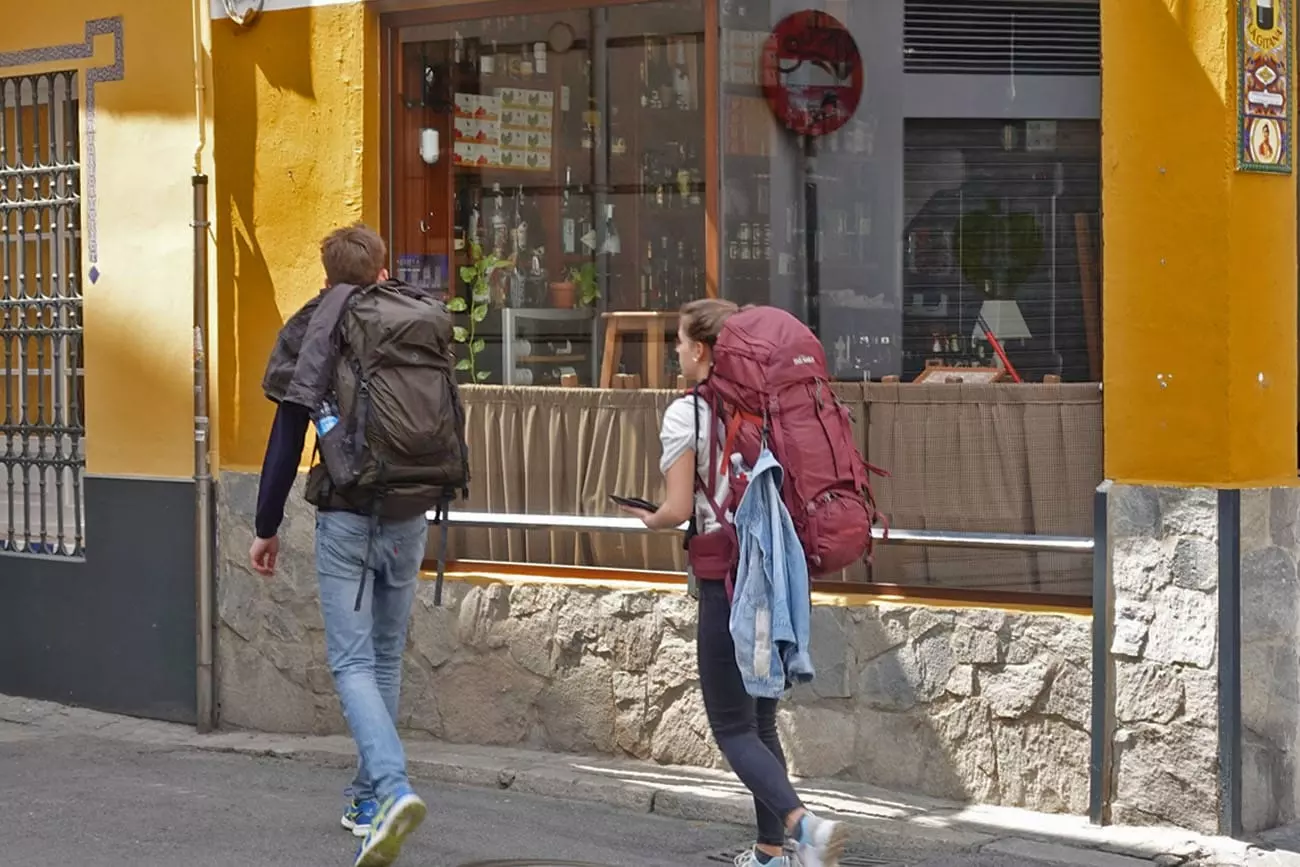
I wrote this backpacking Europe packing list because packing for travel can often be very difficult—especially for beginners. Many first-time travelers make the mistake of bringing too much gear so travel quickly becomes tiresome. Overpacking can also make you a bigger target for thieves because it’s harder to keep track of your belongings. This packing guide for Europe will help you know what type of clothes and gear you should bring and tips for packing light.
Hey Ladies! Check out our new Backpacking Europe Packing List for Women where I cover women-specific packing suggestions.
This Europe Packing List Includes:
- Quick Tips for Packing Light
- Travel Clothing For Europe
- Travel Accessories and Travel Backpacks For Europe
- Travel Toiletries For Europe
- Travel Electronics for Europe
- What Not to Bring To Europe
- Where to Buy Travel Gear
Quick Tips For Packing Light While Backpacking Europe
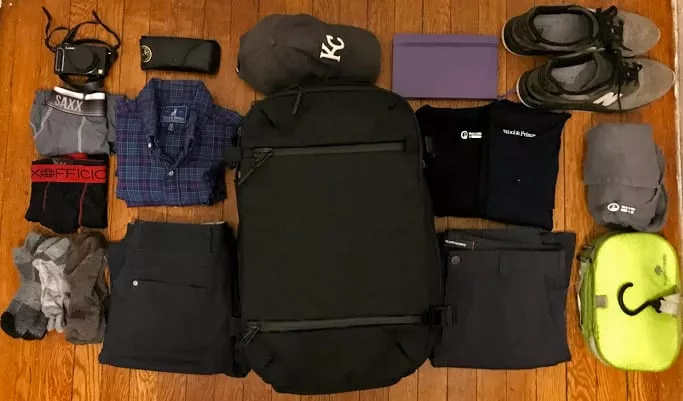
First, I suggest limiting yourself to 20-22 lbs worth of gear (including your backpack).
If you exceed 22 lbs (10kg), you run the risk of exceeding the carry-on weight limit for budget airlines. Even if weight limits aren’t an issue, I still suggest keeping your weight around 20 lbs for the sake of your back.
Quick Note About Looking Fashionable: I understand that packing light and being fashionable isn’t easy. I’ve written a guide on how to avoid looking like a tourist in Europe to help you dress well while traveling.
Cut The Clothing
Clothing is heavy and most inexperienced travelers bring way too much. There isn’t much difference between packing for two weeks or two months because you can simply do a load of laundry when needed.
- Ensure all your shirts and pants pair well with each other for maximum versatility. Choose dark and neutral colors because they hide dirt/stains better than light colors.
- I prefer dressing in layers if it’s cold. A big bulky coat isn’t practical unless you’re going somewhere extremely cold. A thermal base layer, long-sleeve t-shirt, sweater, and fleece jacket combo is more practical than a big coat. You can always add/subtract layers if needed. Click here for the Savvy Backpacker guide to keeping warm in the winter.
Cut the Toiletries
Liquids, gels, and creams weigh a lot so packing full-sized bottles of shampoo, body wash, and other personal care items can quickly add multiple pounds to your bag.
I suggest limiting yourself to the basics—you can always buy things as you go.
Cut The Shoes
Many travelers pack multiple pairs of footwear but I suggest limiting yourself to two pairs if packing light is your goal.
Clothing Packing List For Backpacking Europe
Let’s start with clothing since clothes make up a bulk of what’s in your bag.
Travel Socks (5-8 Pairs)
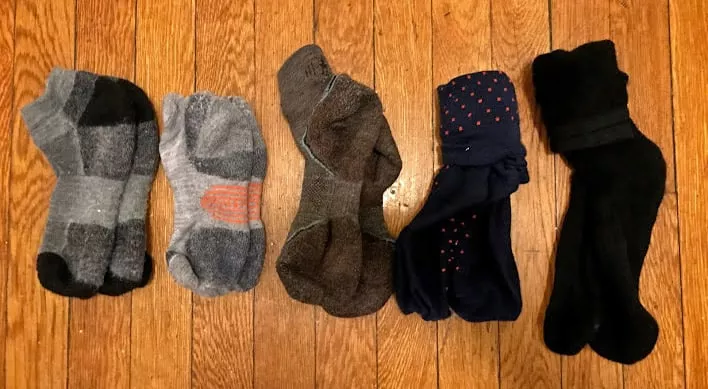
I never skimp on socks when I travel.
Ask any experienced traveler and they’ll tell you the same thing.
I highly suggest spending extra money on quality socks because they’ll help keep your feet dry, odor-free, and blister-free. Unfortunately, nice socks can be expensive but I think they’re 100% worth it—plus, they’ll last for years so you can wear them for a long time.
Experienced travelers recommend quality wool socks—you can get lightweight merino wool socks for the summer and they’ll actually keep your feet cool and dry (heavier-weight socks are better for winter travel).
I overpack when it comes to socks so I’ll bring 6-7 pairs because I like the feeling of wearing a fresh pair every day.
Characteristics Of Quality Socks:
- Moisture-Wicking: Feet sweat and feet sweat a ton when you spend hours walking. Merino wool naturally wicks that moisture away from your feet—which assists in eliminating odor and blisters.
- Fast-Drying: Quick-drying materials can be washed in your sink and they’ll dry in a few hours.
- Odor-Blocking: Quite a few socks have anti-bacterial properties and merino wool does this naturally—even in the summer.
- Cotton Is Bad: Cotton naturally absorbs moisture and holds it close to your skin—which leads to blisters and foul odors.
A quality pair of socks can be worn twice before they start to stink (although you’ll want to rotate the days you wear each pair).
TIP: Switch your socks halfway through the day to keep your feet extra happy.
Recommended Sock Brands:
- Bombas Socks : I’m a huge fan of my Bombas Merino wool socks—I wear them nearly every day (I think I own 10+ pairs). They have a great warranty and I find them well-made.
- SmartWool Socks : SmartWool socks were my first “nice” socks and I’m still a fan.
- Darn Tough Socks : Made in Vermont, this brand of really nice socks will last for years.
Looking for more? Check out our article about our favorite socks for travel .
Underwear (5-7 pairs)
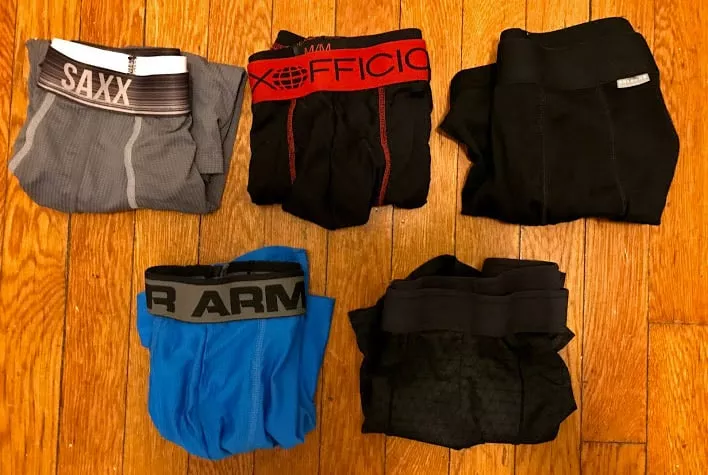
I typically pack around five to seven pairs of underwear but I might pack a few extras since they don’t add much bulk. I prefer underwear that is made from synthetic materials which are designed to be quick-drying, breathable, and odor-resistant.
Here are some favorites:
- ExOfficio (Synthetic): ExOfficio is the #1 brand of travel underwear—they essentially invented the category. They typically cost around $18 to $25/pair but prices fluctuate. Available on Amazon and REI .
- The normal price is $22/pair but they are regularly on sale for around $15. Available at REI .
- Prices vary based on cut/style but you can find them for around $20/pair. Available on Amazon .
- They are a bit pricy at $42/pair but they’re top quality. Available at Wool & Prince .
- They usually run about $25-$30/pair via Amazon
For a more in-depth article about travel underwear, check out our favorite travel underwear!
Shoes for Traveling Europe
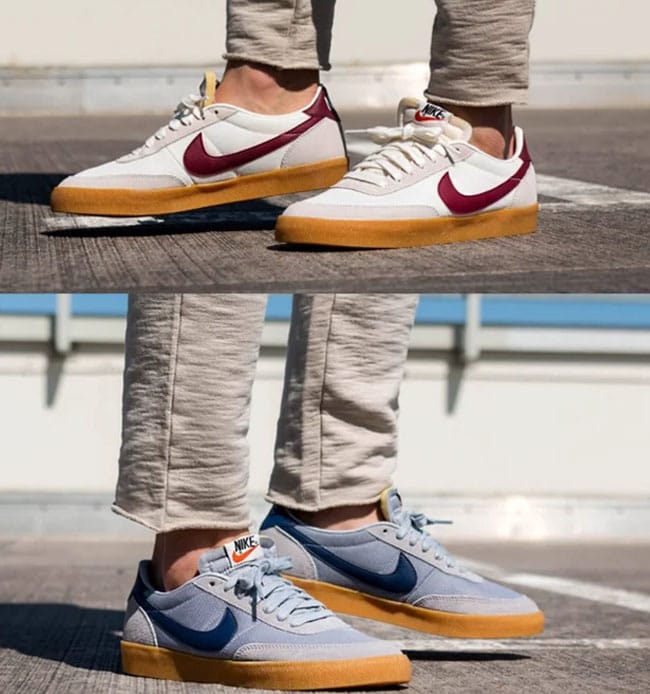
I normally recommend only packing one pair of shoes if you’re traveling light but it is understandable if you want to bring two pairs. Check out my favorite travel shoes for specific recommendations .
You’ll be on your feet for hours at a time while in Europe so you really want a sturdy pair of comfortable shoes for sightseeing. These days I opt for supportive and stylish New Balance sneakers (something from their 900-series). But I also like leather sneakers that are comfortable during the day and look nice enough for going out at night. Nike, New Balance, Adidas, and similar companies all make leather sneakers like this.
Some people opt for sturdier “hiking” shoes since they’re usually waterproof and have an all-terrain sole. They’re not super stylish but they are usually pretty comfortable. If you plan on traveling during a rainy time of year, I would suggest this option. On that note, I suggest leaving the hiking boots at home unless you plan on doing some hardcore winter hiking.
Don’t forget a cheap pair of rubber flip-flop sandals if you’re going to stay in a hostel. You’ll want them for the showers. Trust me.
I highly recommend that you leave your dress shoes at home. While sneakers would probably prevent you from entering any super swanky nightclubs, I doubt most budget backpackers can afford the cover charge + drink prices at those places. And a smart pair of sneakers will get you into most places.
For a more in-depth guide to finding the best shoes, check out our guide to fashionable and comfortable travel shoes .
Shirts and Tops

Button-up shirts (2-4)
I think long-sleeve button-up shirts are the best option when it comes to shirts (be sure to check out my guide to fashion in Europe for a more in-depth guide on being fashionable while traveling in Europe).
When looking for shirts keep the following things in mind:
- Versatile: Don’t bring fancy dress shirts but a nice casual button-up will work well all day and night. Basically, pick something that will look fine in a church/museum, in a café, and a bar.
- Non-wrinkle: It is hard to keep clothes unwrinkled while traveling so non-wrinkle fabrics are super nice.
- Easy to wash: Stay away from things that you can’t easily wash or that are high maintenance.
- Dark colors : Dark colors do a better job at hiding stains. Plus, most Europeans tend to wear darker colors, so you’ll blend in better with the locals.
Brands & Shirts I Like:
- Bluffworks has a few high-performance travel shirts but they’re a little pricey.
- Uniqlo has a number of cheap but decent-quality shirts.
- The Outlier NYCO Oxford ($120) fashionable and functional travel shirts.
- Wool & Prince makes some of my favorite Merino wool button-down shirts and polos in multiple colors—again these are fairly expensive.
- REI has a whole slew of clothes built for travel. Patagonia has a number of nice-looking and high-performance options.
Sweaters (1 or 2)
Lightweight sweaters are nice for dressing up or for cool nights. For maximum versatility, make sure your sweaters and button-up shirts all look good together so you can layer them.
If you’re traveling in the summer, it might be wise to save space by not bringing a sweater.
T-shirts (3 or 4)
While I prefer wearing mostly button-up shirts, I still like wearing T-shirts. They are good for around the hostel, sleeping, wearing under other shirts, and even wearing around town. I usually pack about four solid-color shirts since those are the most versatile.
I usually pack a couple of t-shirts made of lightweight merino wool since wool inhibits odor, resists wrinkles, and dries quickly so they can be worn a few times before needing to be washed. That said, wool T-shirts are expensive so normal cotton shirts are fine.
- Bluffworks has a nice quick-dry Threshold Performance T-Shirt for $45 that’s sweat-wicking and quick-drying. They also have a technical Piton Polo Shirt that’s $68.
- Uniqlo has a bunch of solid-color shirts for under $10. Their “U” line of t-shirts is usually around $15 but they’re made out of nice heavyweight cotton.
- Wool & Prince makes some excellent Merino wool t-shirts and polo shirts that I like. The short-sleeved shirts ($68) long long-sleeved shirts ($84) are expensive but I honestly love the fit and feel. Available at Wool & Prince .
- Unbound makes quality unbranded 100% merino wool t-shirts that come in black, grey, and navy. They cost $65 each — which is fairly affordable when it comes to merino wool. Available at Unbound .
Pants (2 pairs)
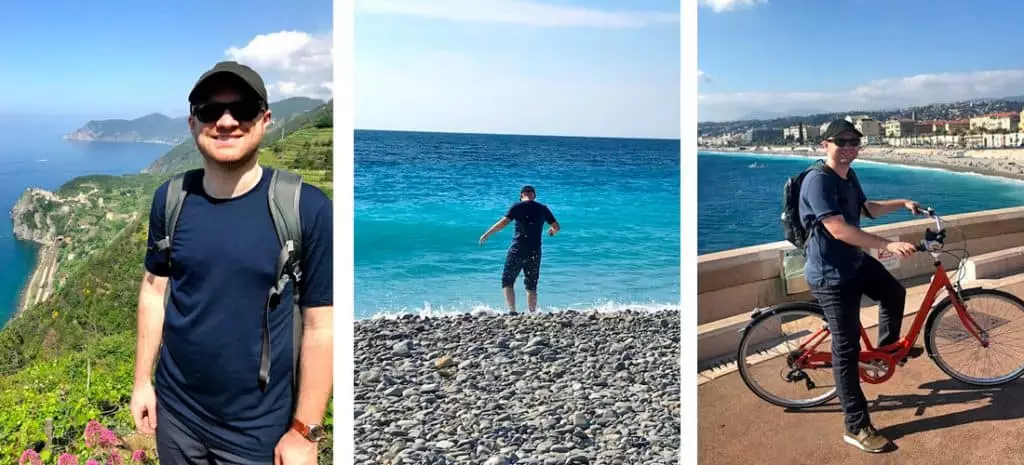
I normally only travel with two pairs of pants—usually a pair of dark jeans and a pair of neutral-color pants.
Dark jeans can be dressed up or completely casual—plus, they match everything. You can wear jeans for months without washing them and they still won’t stink. Plus, jeans are a staple in every European’s wardrobe. Some hardcore travelers don’t wear jeans because they are fairly heavy and take forever to dry. While they’re right, I still think jeans are perfectly fine for European travel.
Also, bring a pair of well-fitting neutral/dark color chinos (lightweight cotton). These look nice if you want to dress them up a bit.
Luckily, these days there are a handful of brands that make travel pants that look fashionable but are still durable. They were fairly expensive but they’re nice to have.
Here are a few recommended travel pants:
- Bluffworks makes solid travel clothing that is both functional and fashionable. They have two main styles of travel pants—the Original ($98) and the Ascender Chinos ($125). Both pants are super tough, breathable, moisture-wicking, wrinkle-resistant, lightweight, and they have hidden security pockets.
- Bluffworks also has a pair of super comfortable Departure Travel Jeans that look nice. They’re also lightweight, stretchy, and have a hidden zippered security pocket.
- Western Rise is another company that makes travel-friendly pants that are durable yet stretch stain-resistant. The AT Slim Rivet Pant is their most popular and they retail for $129.
- Uniqlo has cheap travel pants made from high-tech fabrics. The quality isn’t great but they’re cheap.
Shorts: Traditionally, European adults don’t wear shorts but it is becoming a little more common—especially in Southern Europe. I recommend avoiding khaki cargo shorts and athletic shorts because that’s the stereotypical American tourist outfit.
Swimwear: If you go to the beach, then you’ll need something to wear.
Jackets and Rainwear
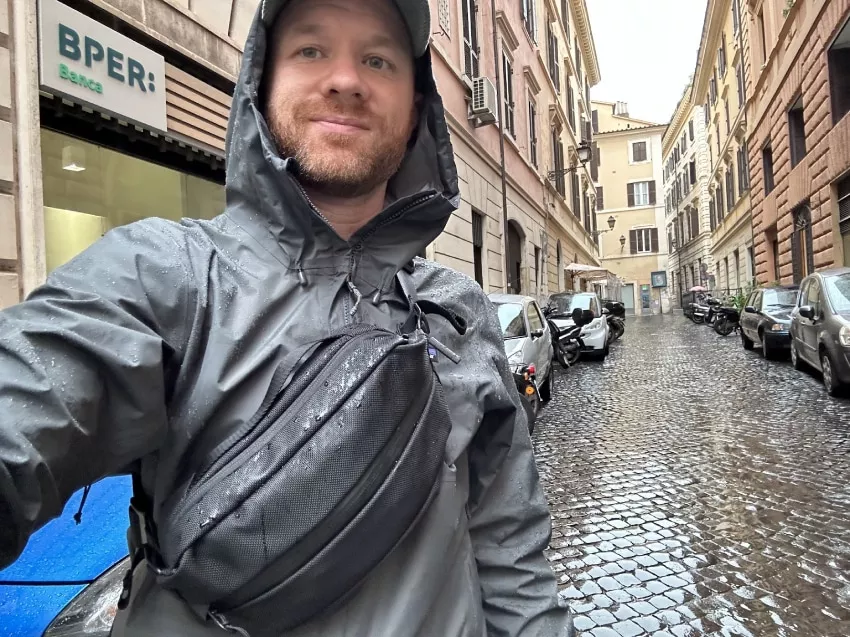
Obviously, whether you take a jacket or not will depend on when and where you travel.
- Fleece Jacket – A nice fleece jacket is great because has a great warmth-to-weight ratio. I suggest getting a black one because it will be the most versatile. Patagonia has a lot of amazing options.
- The Patagonia Houdini weighs in at a crazy light 3.6oz and can be found online for $99. Available via REI and Amazon
- Outdoor Research Helium II is another lightweight rain jacket that only weighs around 6oz. It can be packed down the size of a baseball so it’s a nice summer jacket. It is a little pricy at $140-$170. Available via REI and Amazon .
- Helium HD Rain Jacket is quite similar to the popular Helium II but it is just a tad heavier at 9oz (which is still insanely light). Unlike other jackets, it has a few extra features like front pockets & pit zips. It sells for around $200. Available via Amazon .
- The Marmot PreCip Jacket is not the lightest jacket on our list (it still only weighs a respectable 11oz) but a bit more durable than others. Price: $100. Available via REI and Amazon .
- The Patagonia Nano Puff (11.9 oz) provides a lot of warmth for a light jacket. It’s also more affordable at $199. Available via Amazon and REI .
- The Mountain Hardware “Ghost Whisper” jacket is only 7.2 oz. It is water-resistant, has pockets, and can often be found for under $180 — so it’s a bit more affordable than similar jackets. Available via Amazon and REI .
- Uniqlo sells synthetic down jackets for $60-$70. Don’t expect crazy features or ultra-lightweight, but it’s a good budget-friendly option.
Miscellaneous Items
- Sunglasses – Rayban sunglasses are a very classic choice.
- Scarf – Both men and women wear scarves in the summer and winter.
- Hat and Gloves
TRAVEL ACCESSORIES
Here are a few travel accessories you might want to bring along as you backpack through Europe.
Travel Backpack
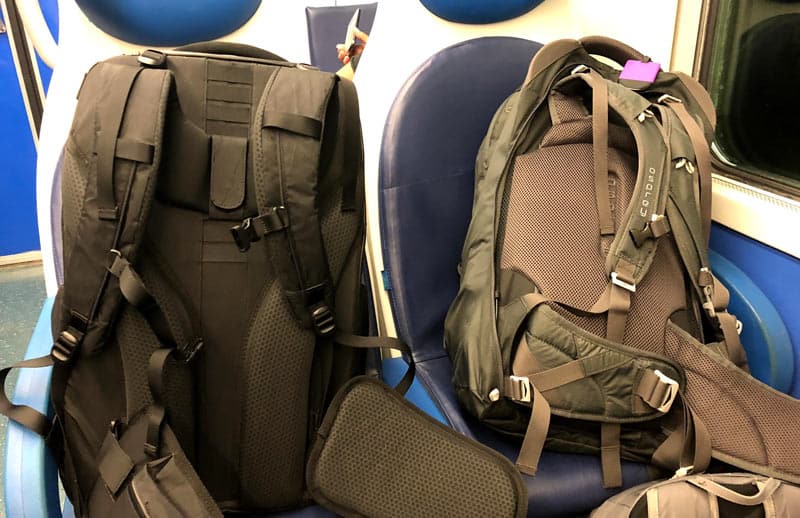
Every backpacker needs a quality backpack and I’ve written extensively about my favorite travel backpacks . Here are a few of my top picks:
- Aer Travel Pack 3 Review
- Osprey Farpoint 55 Review and Osprey Farpoint 40 Review
- Cotopaxi Allpa 42 Travel Backpack Review
Packing Cubes
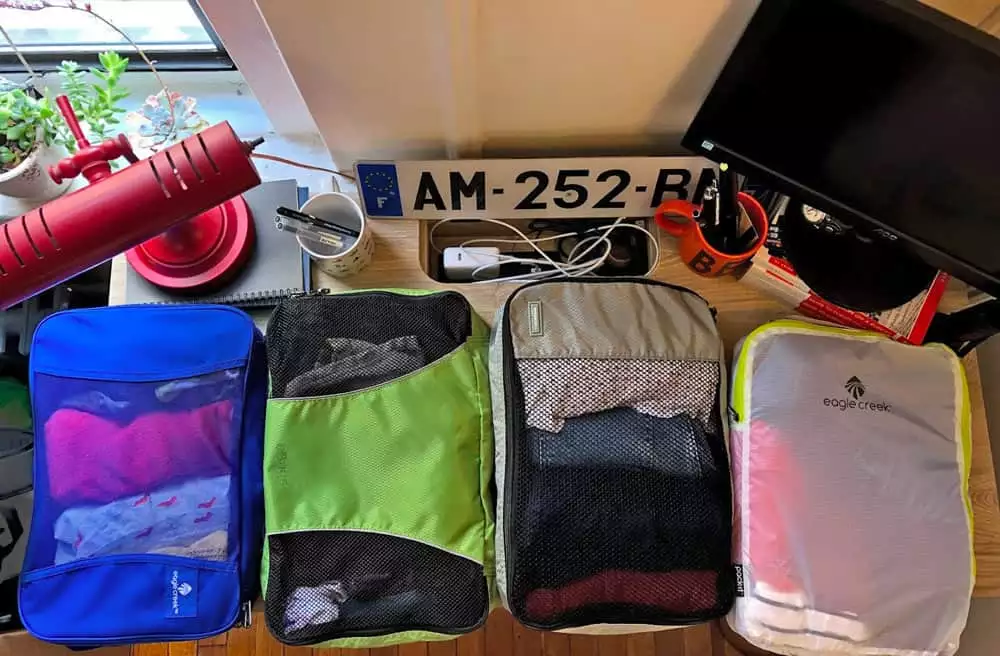
Get yourself some packing cubes because it makes backpack-living much easier. Packing cubes are small, lightweight bags used for packing your clothes into separate compartments. I separate items into different cubes — so I’ll put socks in one, underwear in another, shirts in another, etc.
These things make it easy to access all your clothes without having to rummage through everything. They also help reduce wrinkles and they help compress your clothing so you can fit more stuff into smaller luggage.
Here are a few Of my favorite packing cubes:
- Eagle Creek Pack-It Cubes
- Eagle Creek Spectre Tech Packing Cubes
- eBags Packing Cubes
- AmazonBasics Packing Cubes
Read a more in-depth review of our favorite packing cubes .
TRAVEL DAYPACK
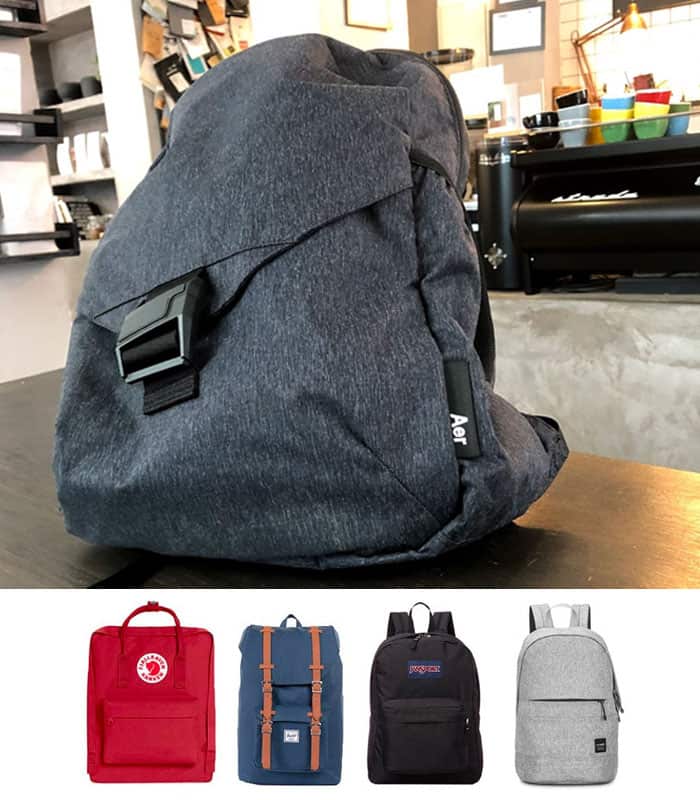
Bring a small backpack to haul around small items like your camera, rain jacket, etc. as you’re out for the day. Ideally, your daypack will easily pack into your main luggage during travel days. Here’s a list of my favorite daypacks to give yourself an idea of what to look for in a day pack.
eSIM or SIM CARD FOR FAST AND CHEAP MOBILE DATA
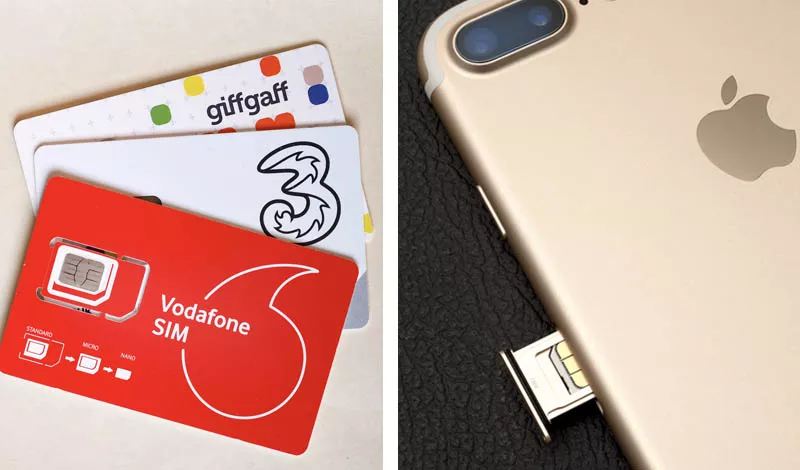
The cheapest way to get mobile data for your phone is by using a European eSIM or SIM card — this is much cheaper than using your home carrier’s International Mobile Data plan.
For example, an eSIM data plan will cost you about $3/day as opposed to $10-$15/day from your current carrier.
You can read about my guide to using smartphones and data plans in Europe but I recommend buying your eSIM/SIM card from SimOptions.com or an eSIM from Holafly .
TRAVEL TOWEL
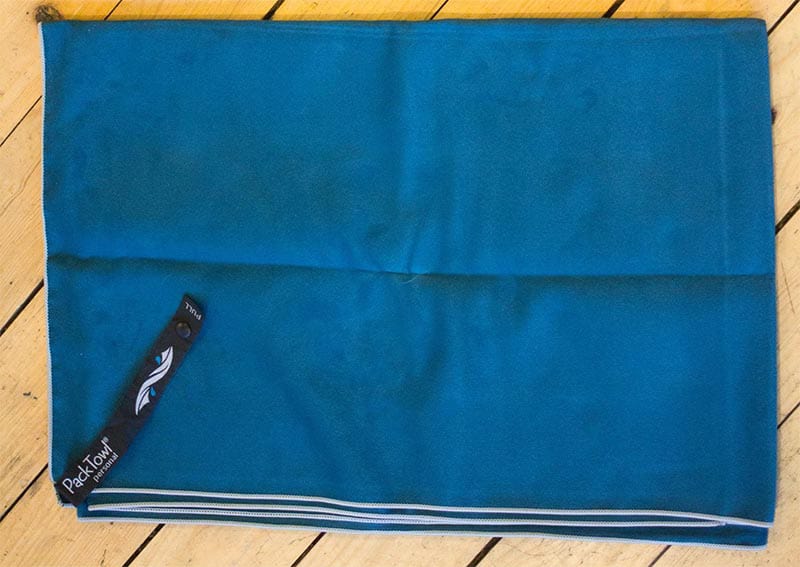
A quick-drying travel towel is a must because a normal towel takes hours to dry — which is no good when you’re always on the move (i.e. a wet towel shoved into a backpack will make everything smell musty). These travel towels soak up a lot of liquid but air dry in a few hours.
Here are two travel towels I like:
- PackTowl Personal Microfiber Towel
- Biospired Footprint Lightweight Microsuede Towel
SMALL FLASHLIGHT

A small keychain flashlight comes in handy in hostels so you don’t wake up everyone when you need to find something in the dark. They are also nice for navigating dark streets, illuminating your luggage, etc.
My top pick is the Streamlight 73001 Nano Light Miniature Keychain LED Flashlight —this thing is tiny while still giving off lots of light. Honestly, anything from Streamlight is going to be a solid product so check out their page on Amazon .

Jot down phone numbers, directions, addresses, restaurants, spending, etc. in a Moleskine Notebook , Field Notes , or Rhodia notebook. It also makes a nice souvenir after the trip is over.
PADLOCK & RETRACTABLE CABLE LOCK

Keep your stuff safe when you’re staying in hostels. I like the Master Lock Set-Your-Own-Combination Padlock because it allows you to set your own combo.
Retractable cable locks are handy for securing your bag to your bunk or a luggage rack.
TRAVEL SLEEP SHEET
Consider bringing a sleep sheet/sleep sack if you’re worried about the cleanliness of your hostel sheets. The cheapest option is a cotton Sleep Sheet. Silk Sleep Sacks are more expensive but they’re lighter, less bulky, and feel great to sleep in.
EARPLUGS & EYE MASK
Sleeping on trains/planes/buses/hostels isn’t always easy so consider packing an eye mask . Earplugs are nice too (especially if there is someone who snores in your room). These Mack’s Pillow Soft Silicone Earplugs are comfortable for sleeping.
WATER BOTTLE

A basic water bottle works but flexible water bottles like the Platypus Soft Bottle can be rolled up when empty.
TRAVEL UTENSILS

A set of Plastic Travel Utensils is super handy for picnics since most grocery stores don’t provide utensils. I thought this titanium spork was kind of funny.
TOOTHBRUSH COVER

Steripod Clip-on Toothbrush Sanitizer cover works well to keep your brush sanitized by using some voodoo science. Or you can just get a normal toothbrush cover if that’s how you roll.
DIGITAL LUGGAGE SCALE
A digital luggage scale is great for avoiding those costly overweight luggage fees.
PHOTOCOPIES OF IMPORTANT DOCUMENTS
Make copies (physical and electronic) of your passport and other important documents. I email them to myself or save them to Google Docs.
ZIPLOC BAGS (MULTIPLE SIZES)
Separate your dirty/wet clothes with Plastic bags. It’s a good idea to put our liquids in a sealable bag in case of a leak. The large 3-gallon bags are nice for keeping your dirty shoes away from your clothes.
One of the best ways to avoid becoming a pickpocketing victim is to wear a money belt ( learn more about avoiding pickpockets ). I don’t wear one but a lot of people do.
COLLAPSIBLE UMBRELLA
A travel umbrella is good in case of rain.
LAUNDRY STUFF

- Sink Stopper: Pack a simple Travel Sink Stopper if you plan on washing clothes in the sink.
- Travel Laundry Soap : Bring some Woolite Travel Laundry Soap or Travelon Laundry Soap Sheets if you plan on doing laundry while traveling.
- Flexible Travel Clothesline: A rubber braided clothesline is a nice way to air dry anything you need to wash. Additionally, the braided clotheslines are ideal because they don’t require any clothespins — just stick the clothes through the braids.
- Stain Remover: Tide To Go Stain Remover Pens and individually wrapped Shout Wipes work really well on stains and take up no space in your bag.
LINT ROLLER
Keep your clothes lint-free with a lint roller and stop looking like a slob.
Research the cities you’re going to visit so check out a few guidebooks . Our favorite publishers are:
- Lonely Planet
- Rick Steves
- Fodor’s
A small phrasebook is nice if you want to learn a bit of the local language.
ELECTRONICS PACKING LIST
Technology has changed how we travel so here are a few gadgets to help fuel your addiction to technology.
Quick Note: Europe and North America use different voltages so some American electronics won’t work in Europe. But don’t worry because high-end electronics like laptops, phones, cameras, etc. will all work fine with a plug adapter (see below). I suggest reading our guide to traveling with electronics for more in-depth advice about using electronic devices while traveling.
OUTLET PLUG ADAPTERS

Pack a few outlet plug adapters . Continental Europe uses the same plug except for the UK — technically, Italy and Switzerland use a slightly different plug but the two-prong plugs (like seen above) still work. If you want to be safe you can buy specific adapters for those countries.
This simple set of adapters from Ceptics will work fine but you might want a plug adapter with USB plugs since most electronics charge via USB these days.
TRAVEL POWER STRIP

I’ve stayed in plenty of hostels & hotels have limited outlets so a power strip is a worthwhile investment. The Belkin Travel Power Strip with USB ports is a popular option since it has USB ports but there are plenty of other travel power strips .
PORTABLE PHONE CHARGER
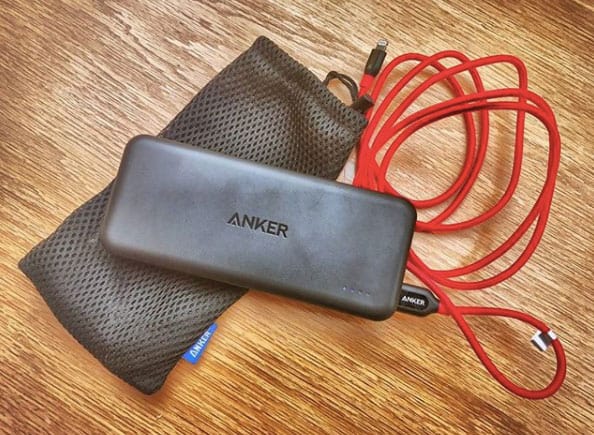
Google Maps and Instagram will kill your phone battery so pack a portable battery. I use Anker PowerCore 10000 because it’s tiny and affordable.
TABLET OR LAPTOP
I hate traveling with a laptop but I’m a big fan of traveling with my iPad.
Smartphones have changed travel forever — especially since there are many awesome apps. Here’s a guide to the best travel apps if you want to know what I use on the road.
Curious about data plans and using your phone abroad? Check out our guide to using Data Plans and Smartphone Phones Abroad
Having a book to read on those long flights and train rides is great but lugging a heavy book around is a pain. The Amazon Kindle is great for those of you who love to read. You can even download a lot of travel guidebooks .
A pair of noise-canceling headphones are nice for flights and train rides but they’re a little bulky. I really love traveling with my wireless Apple AirPods—check Amazon since they’re often cheaper on sale there.
I also travel with a simple pair of in-ear headphones for airplanes. We’ve written about our favorite travel headphones but anything will work.
TRAVEL TOILETRIES

Try minimizing the number of toiletries you bring because liquids add a ton of weight. Don’t forget that you can buy pretty much anything once you’re in Europe. Here is a general list of things you might want:
- Shampoo/Conditioner/Body Wash: I pour shampoo and body wash into these leak-proof GoToob travel-sized bottles . If I need more then I’ll buy it in Europe.
- Toothpaste & Toothbrush: Don’t waste your money on a travel toothbrush — just bring a normal toothbrush and a toothbrush cover .
- Shaving Stuff (Razors & Cream): You can find pretty much the exact same products abroad but razors do seem to be a lot more expensive in Europe.
- Deodorant: Deodorant that I buy in Europe never seems to work as well so bring your own.
- Chapstick w/Sunscreen
- Contact Lenses/Solution/Glasses: Contact solution is actually a pain to buy because it’s normally only sold in pharmacies. Plus it isn’t cheap. I’d recommend bringing your own if you can.
- Condoms: Some souvenirs are no fun… so it’s better safe than sorry. I’d buy them before you go. Amazon has got you covered.
- Travel Fabric Freshener: Your clothes will probably smell a bit funky after a while so travel-sized Febreze To Go is a good way to stay a little fresher.
- Travel Toilet Paper: Play it safe and pack some travel toilet paper in your daypack.
- Wet Wipes/Baby Wipes: These are a lifesaver when you actually need them. Cottonelle Fresh Flushable Wipes are individually wrapped.
- Hand Sanitizer: You’ll be touching so much dirty stuff all day, and you don’t want to get sick as you’re traveling.
- Body Powder: Stop chafing caused by all that walking — especially if it is really hot. Anti Monkey Butt is our favorite.
- Foot Cream: Pamper your feet with O’Keeffe’s Healthy Feet Cream .
- Pepto Tablets: Be sure to pack some Pepto-Bismol tablets for all that questionable street food.
- Band-Aids: Heal/prevent those blisters with Band-Aids for feet .
- Pain Medicine: Over-the-counter pain medicine (even basic stuff like Tylenol) is only from a pharmacy in Europe. This isn’t a big problem but it’s nice to have a few pills on hand.
- Prescription Drugs: Ensure you have the original bottle/box in case you’re asked to prove the medicine is yours. Make sure you have enough medicine to cover your entire trip since it might be hard to get any refills.
TRAVEL INSURANCE
Travel insurance can be a great investment if you run into any trouble on the road because it helps cover your travel gear, flights, accommodation, rail passes, medical emergencies, and more. I use World Nomads but here is a guide to buying travel insurance if you want to know what to look for when buying travel insurance.
Stuff You Don’t Need
There are a lot of things geared toward travelers that you probably won’t need if you’re traveling through Europe.
- Sleeping Bag : Sleeping bags aren’t needed unless you are camping or sleeping on someone’s floor.
- Sleeping Pad : Again, unless you’re camping or sleeping on the ground, you won’t need a sleeping pad.
- Water Filter : Europe has clean water so no need for a portable filter.
- Books : Books are bulky and heavy. Many hostels have a collection of books, and you’re normally free to swap. Travelers also swap books with each other.
- Beach Towel : Normal cotton towels take forever to dry and take up a lot of room. If you do bring one, make sure it is dry before you put it in your backpack because a damp towel will make everything in your bag smell really musty. I recommend a quick-drying travel towel .
- Hiking/Backpacking Food : There is no need for prepackaged travel meals. However, I throw in a couple of RX or Cliff bars just in case I get hungry while on the go.
WHERE TO BUY TRAVEL GEAR
There are so many places to buy all your travel gear so I wanted to put together a list of places to check out.
- Amazon seems to have just about everything and the prices tend to be pretty good.
- Zappos has much more than just shoes — they also sell a pretty good selection of travel gear like clothes, jackets, socks, and backpacks. Their prices are sometimes a bit higher than other stores but their free super-fast shipping and dead-simple returns are often worth the extra cost.
- REI is one of the largest outdoor retailers and they have a ton of travel gear. A lot of their stuff is more “outdoorsy” but they’re good for things like backpacks, socks, underwear, etc.
- Bluffworks sells travel clothing that actually looks like normal, fashionable clothes.
- Uniqlo is the king of cheap but fairly decent high-tech travel clothing.
More Packing Tips For Europe

Here are some more helpful packing articles that I’ve written:
- The Best Travel Shoes
- The Best Travel Backpacks
- The Best Travel Pants For Men
- Winter Packing List for Europe
- Best Waterproof Boots for Men
- Recent Posts
- The Best Travel Backpacks | In-Depth Buyer’s Guide & Backpack Reviews - April 28, 2024
- Best Prepaid UK eSIM | Data Plan Buyer’s Guide - April 21, 2024
- How to Avoid Pickpockets in Europe — Tips for Outsmarting the Thieves - April 19, 2024

No Funny Business
The Savvy Backpacker is reader-supported. That means when you buy products/services through links on the site, I may earn an affiliate commission—it doesn’t cost you anything extra and it helps support the site.
Thanks For Reading! — James
Questions? Learn more about our Strict Advertising Policy and How To Support Us .
Related Reads
The best travel backpacks | in-depth buyer’s guide & backpack reviews.
A list of my favorite travel backpacks for every travel style.
Helpful Travel Tips & Articles , Packing
Fashion Advice: How to Avoid Looking Like An American Tourist In Europe
Fashion advice to help you look like a local when visiting Europe.
Packing , Product Reviews
Best Travel Shoes — Fashionable & Comfortable Shoes for Traveling
The ultimate guide to the best travel shoes that are both stylish and comfortable.
The Best Hiking Socks For Travel and Backpacking Europe
The best socks for hiking and travel.
City Guides
Choosing travel insurance, travel packing lists, budget travel newsletter.
The best budget travel tips sent straight to your inbox.
Join My Journey
Europe travel tips, advertising & privacy policies.
TheSavvyBackpacker.com is a participant in the Amazon Services LLC Associates Program, an affiliate advertising program designed to provide a means for sites to earn advertising fees by advertising and linking to amazon.com.
© 2010 - 2024 The Savvy Backpacker
Website Design by FHOKE

The Ultimate Packing List for Europe: Summer Edition
Beautiful beaches, fashionable cities, epic national parks, blooming flowers: there’s a lot to love about summer in Europe, but when it comes to planning a packing list for Europe, summer weather can make things a little difficult!
The good news? No bulky coats required.
The bad news? Scorching weather, multiple countries with different standards of dress, and an itinerary that likely combines outdoor highlights (beaches, boat rides, chasing waterfalls) with city lights (cooling off in museums, eating gelato on the streets every afternoon) can mean that a summer packing list for Europe can be a bit tricky to put together.
After years spent traveling through Europe in all seasons, we’ve become quite accustomed to packing our belongings up over and over again.
We’ve pulled together years’ worth of travel knowledge to create this packing list for Europe: summer travel is bound to be even more relaxing with these tips!
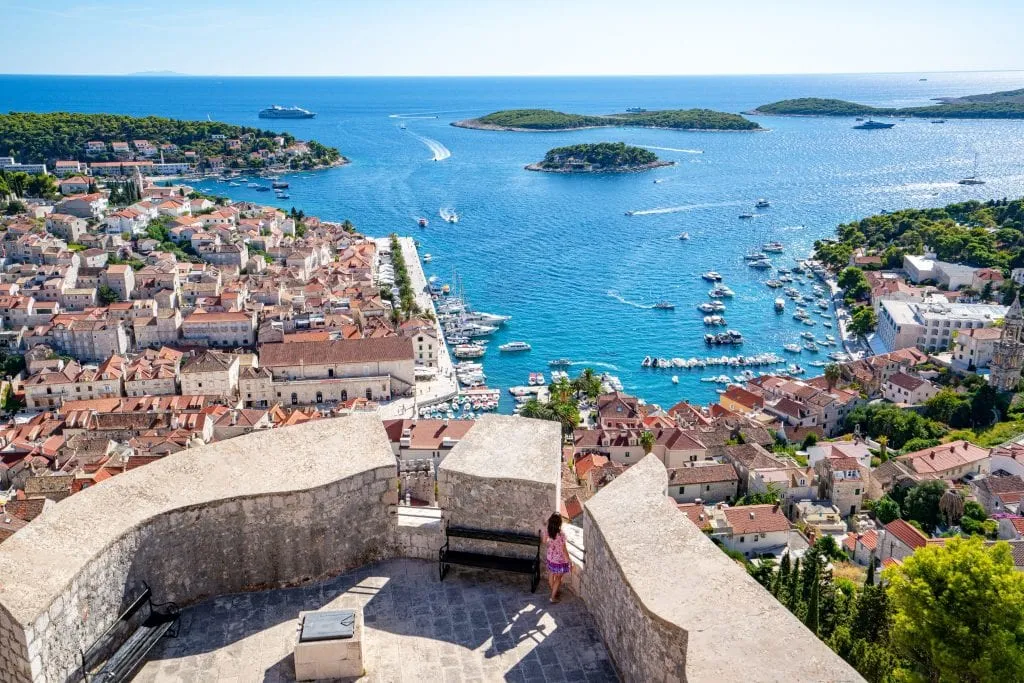
Some links in this post may be affiliate links. If you make a purchase through one of these links, we may earn a small commission at no extra cost to you. Please see our disclosure policy for more detail.
Table of Contents
The Absolute Essentials for Visiting Europe in Summer
Travel gear you should definitely pack for summer in europe, packing list for europe: summer wardrobe for women, packing list for europe: summer wardrobe for men, other travel gear for your packing list for europe in summer.
Passport — If you’re traveling internationally, your passport is an absolute must: there’s no point in packing for Europe in summer without it!
Travel Insurance — We don’t ever suggest traveling without travel insurance–anything can happen, and an epic summer trip to Europe is definitely a case of better safe than sorry. We use and recommend Safety Wing for trips to Europe.

Visa (If Needed) — Though 26 countries in Europe are part of the Schengen Zone that allows many nationalities (including US citizens, Canadians, and Australians) to enter and travel freely between their countries for 90 days for tourism, that still leaves around half of Europe’s countries that are not part of this agreement.
Regardless of where you are from, always double-check entrance requirements before showing up at the airport to fly to any European country (or any country at all that isn’t your own, for that matter).
Money — We recommend bringing two credit cards (one to use, and one to keep as a backup), and two debit cards. Ideally, bring cards with no foreign transaction fees. We’ve never felt it necessary to obtain currency before arriving (we just withdraw from an ATM when we get there), but you can purchase most currencies in your home country if it makes you feel more comfortable.
Keep in mind that not all countries in Europe are on the Euro, so be sure to double-check what currency you’ll need based on your itinerary!
International Driving Permit — If you are visiting Europe from outside the EU and plan to rent a car, you may need an International Driving Permit to do so! Italy in particular is well-known for enforcing this requirement. Be sure to check the rental requirements in any country that you plan to drive in before you arrive!

Camera — We recently upgraded to our Sony a7R III and absolutely adore it, but whatever camera you’re comfortable with works–just make sure you have something with you to preserve your memories!
Comfortable Day Bag — We currently use Pacsafe’s sleek anti-theft backpack and love it, but if you don’t want to shell out the cash for this trip, that’s totally understandable. Just aim for something comfortable to wear, not flashy, and medium-sized–we used a Northface Jester backpack for years and loved it as well.
Sunglasses — You’ll be glad you put these on your summer packing list for Europe–though of course, if you forget them (or lose them during your trip like I’ve definitely done more than once), it’s extremely easy to pick up a pair while traveling just about anywhere else in Europe.
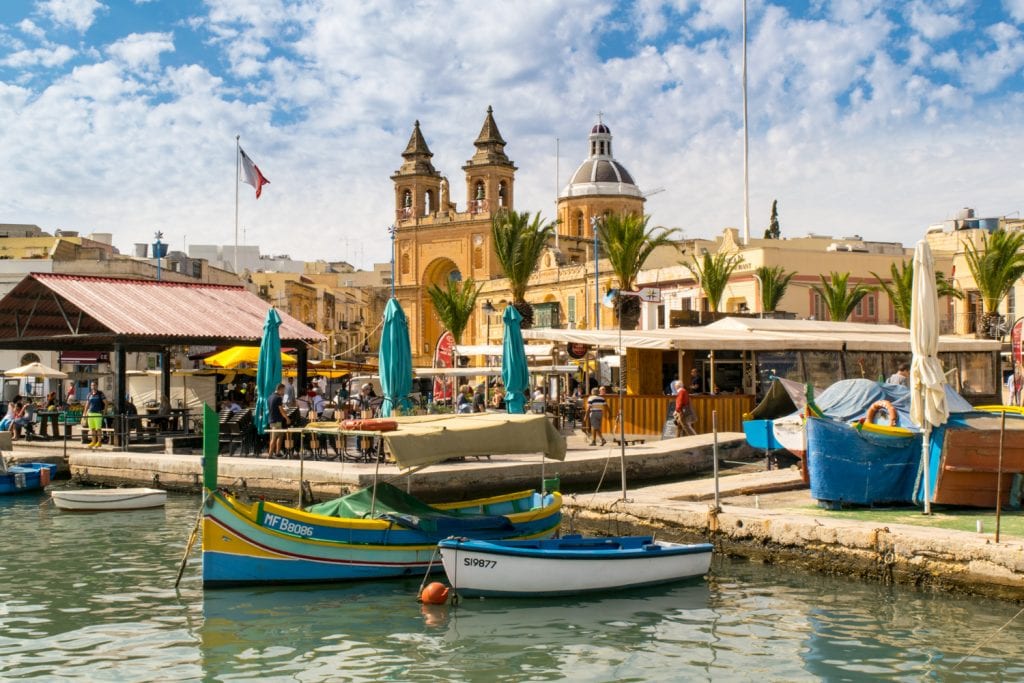
Student ID — If you’re a student, you’ll be entitled to lots of discounts on museums and attractions throughout Europe. Be sure to add it to your packing list for Europe.
Cell Phone — We spent more than a year traveling without working cell phones, just relying on wifi… and while that’s completely fine, we would never go back.
Consider purchasing an international plan for your cell phone (most carriers offer them), or, if you have an unlocked phone, you can just by a local SIM card once you land in Europe.
While you’ll likely want to structure your wardrobe for your packing list for Europe in summer slightly differently based on where exactly you’re going (for example, you’ll want to dress up a bit more on a city tour through Italy than on a sailing trip through Greece), if you’re looking for an all-purpose summer wardrobe that will sustain you through multiple European destinations, these suggestions are for you!
As full-time travelers for nearly 4 years, we are extremely well accustomed to living out of a backpack as we traipse around Europe, and these suggestions reflect my personal favorite things to wear in Europe during the summer.
I love wearing dresses in Europe in the summer! They’re easy to pack, easy to wear, look great just about anywhere you go, and manage to look pulled together while only requiring one piece of clothing.
Dresses like this and this are generally what you’ll find me in when traveling through Europe in the summer. Be sure to bring at least one or two maxi dresses ( I love this one , for example), which fulfill the double purpose of being extremely photogenic and also allowing you to visit religious sites like churches and mosques without issue.
Rompers like this can also be a fun option if you want an all-in-one outfit that isn’t quite a dress, and so can two-piece outfits (I personally love the lemon pattern on this one , it makes me think of the Amalfi Coast!).
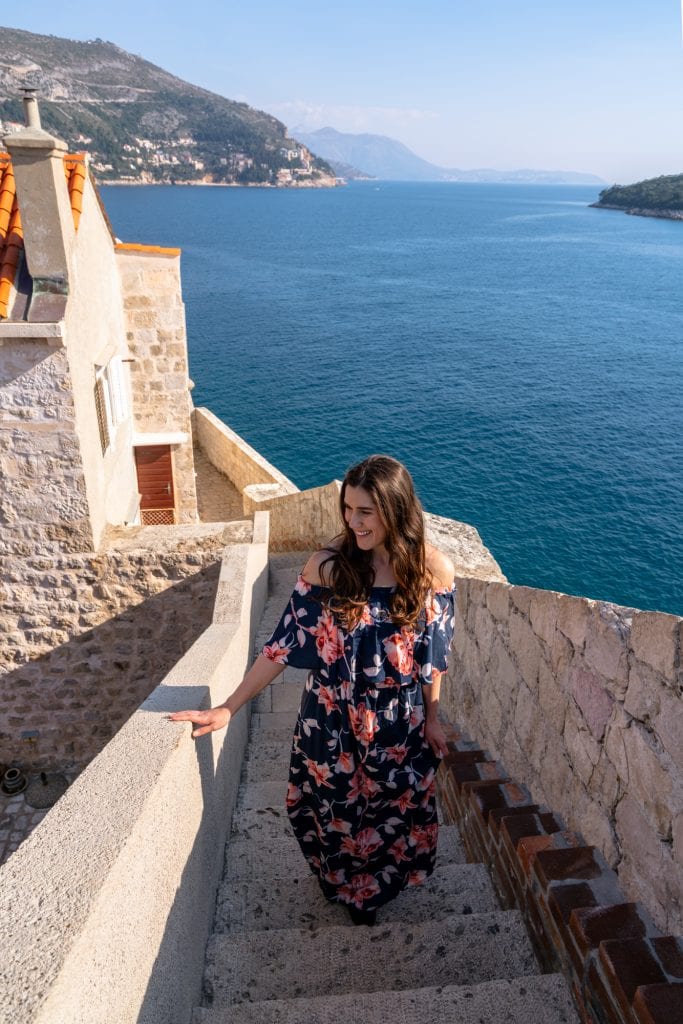
Bright, colorful tops are perfect for beach destinations in Europe–I love choices like this and this , and if crop tops are your style, options like this are a popular choice around the beach.
Ever heard that Europeans don’t wear shorts? In Milan or Paris, fair enough. But in Dubrovnik or Mykonos? Go for it! Beach destinations are the perfect place to break out jean shorts like these from my current favorite denim company.
In the city, skirts like this are a great idea, and light midi skirts also look beautiful.
Bathing Suits
Depending on how many beach destinations you’re planning to visit, I’d pack 2-3 bathing suits for visiting Europe in the summer. I love choices like this and this . If you’re planning on trying out any active water activities like snorkeling or scuba diving, consider packing at least one one-piece suit , too.
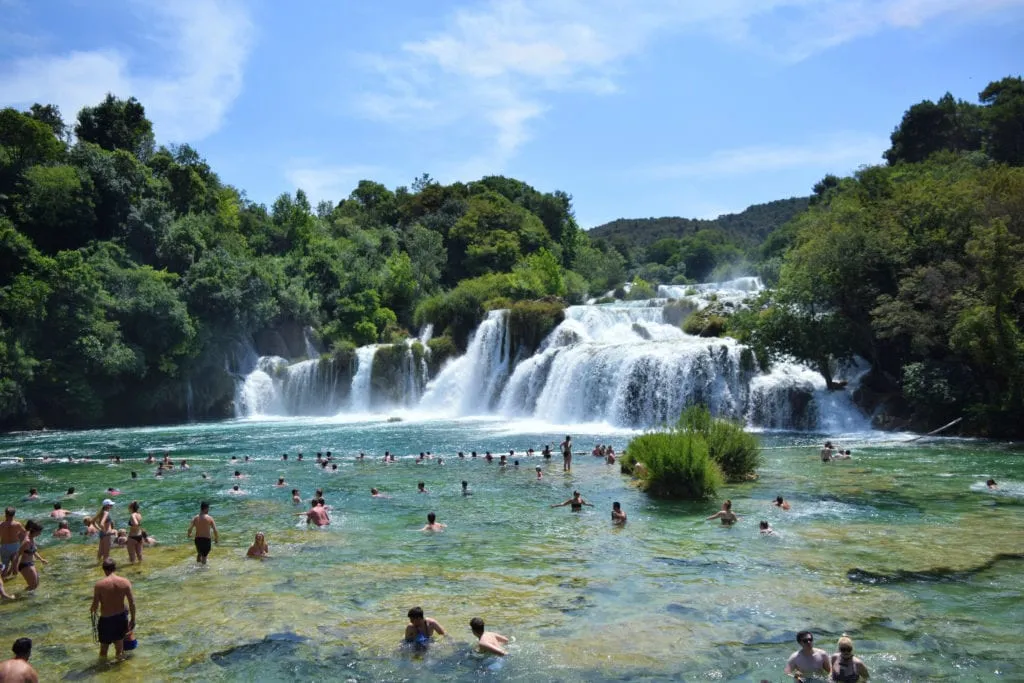
The absolute most important rule when determining what shoes to put on your packing list for Europe this summer is making sure that they’re comfortable to walk in! I’ve been wearing these shoes in Europe during the summer lately and love them. Boat shoes are also a great option, and Converse are popular with backpackers and travelers along the tourist trail.
Summer in Europe can be scorching–but the air conditioning blasting inside museums, hotels, trains, and buses, will make you quickly forget it! I recommend putting one light jacket on your summer packing list for Europe for those moments! I normally pack something like this and am very comfortable.
Accessories
Sunglasses and a sunhat are musts for traveling in Europe during the summer! You can either purchase ahead of time or plan on picking them up as souvenirs–both are sold on just about every corner in Europe during the summer travel season!

T-shirts are a staple of the men’s traveling wardrobe in Europe, but opt for brightly colored new ones if you can! Shirts like this that have a bit more detail work as well. If they’re your style, light, casual button-up shirts are also an option.
During the scorching summer, you’ll find men wearing shorts similar to these just about everywhere in Europe–especially the tourists. Forgo them in favor of chinos when visiting religious sites that have a strict dress code and in more formal cities like Paris if you can stand it, but on the coast, your shorts certainly won’t stand out.
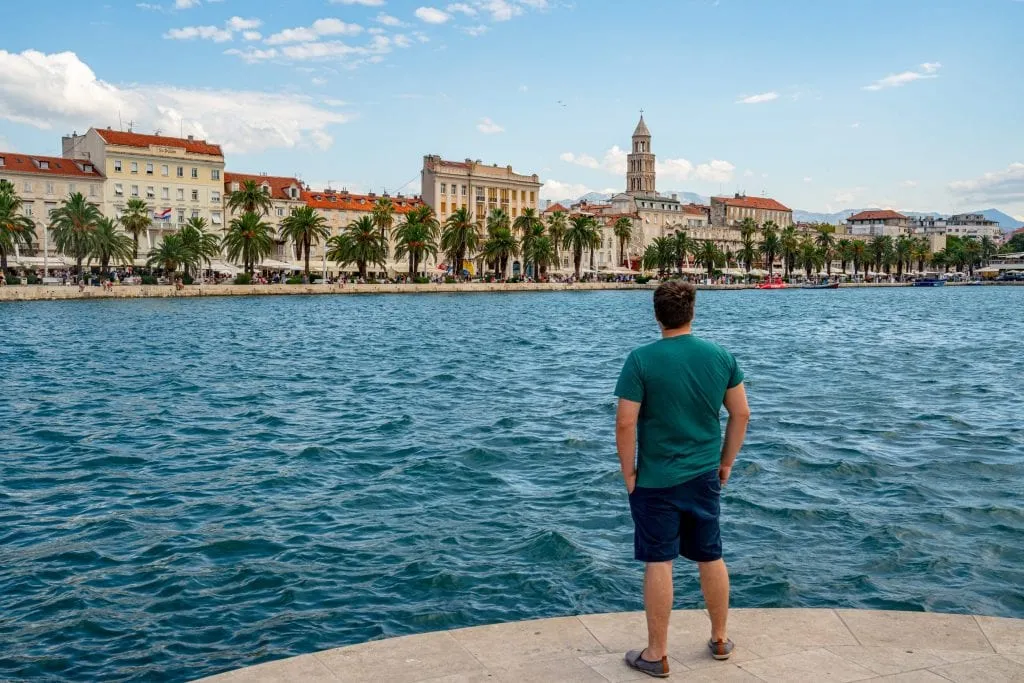
Jeremy tends to opt for light, casual shoes like these during summer in Europe–whatever you pack, just make sure that they’re well broken in and easy to walk in for hours before adding them onto your summer packing list for Europe!
Bathing Suit
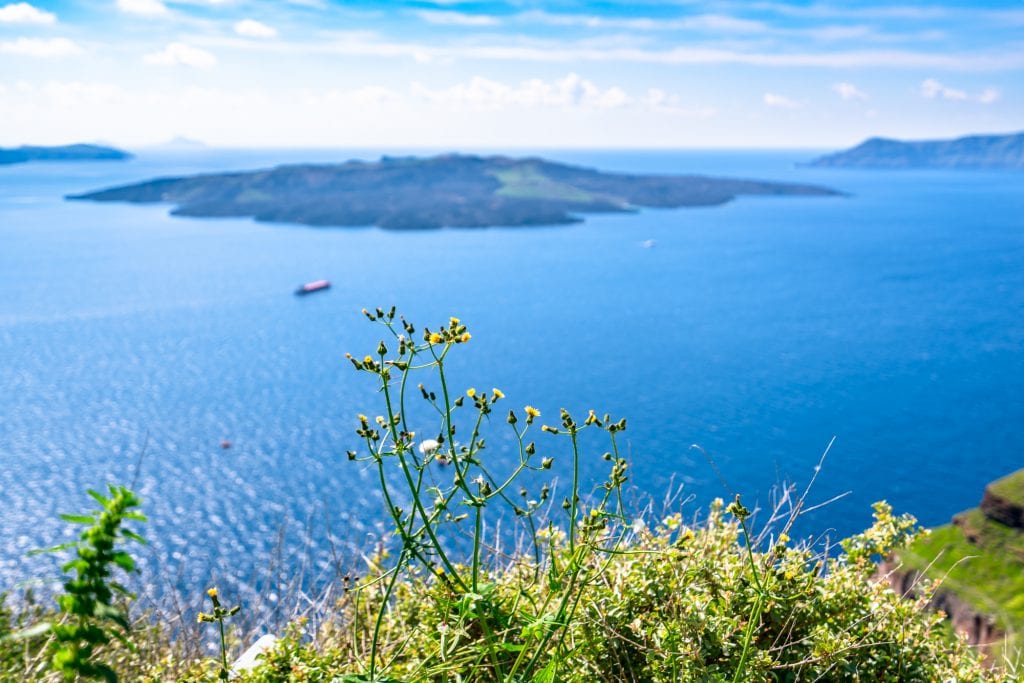
If you’re planning on hitting the beach in Europe this summer, make sure to bring one or two bathing suits along with you. Suits like this work perfectly.
Summer in Europe can be scorching–but the air conditioning blasting inside museums, hotels, trains, and buses, will make you quickly forget it! I recommend putting one light jacket on your summer packing list for Europe for those moments! Jeremy tends to pack this jacket for Europe in the summer (and most other seasons as well) and loves it.
Sunglasses and a hat are musts for traveling in Europe during the summer! You can either purchase ahead of time or plan on picking them up as souvenirs–both are sold on just about every corner in Europe during the summer travel season!
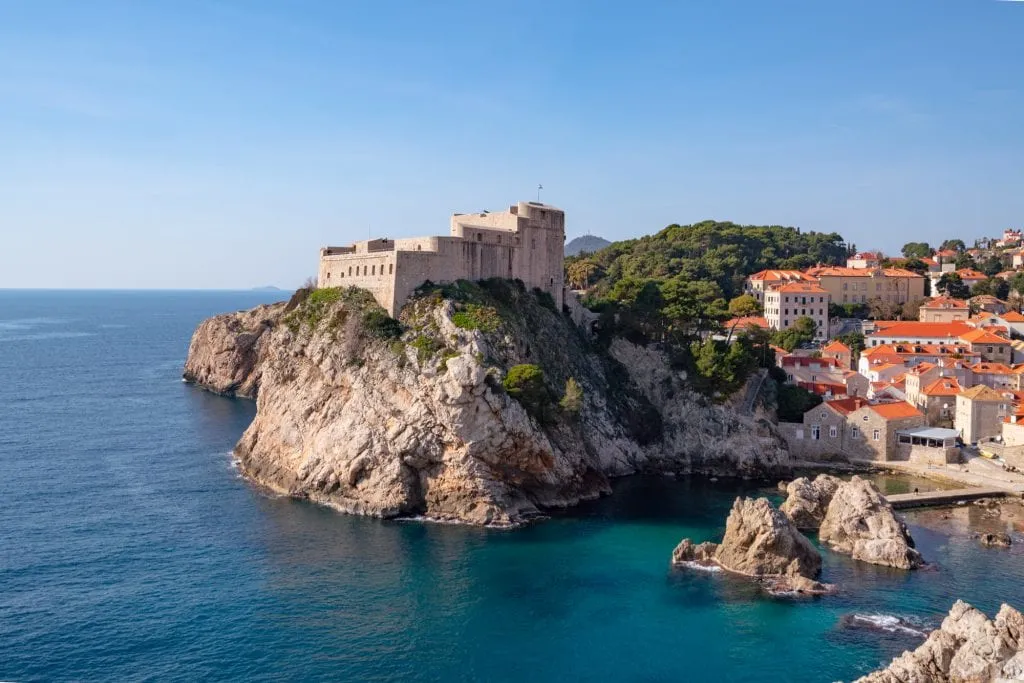
I use them on all boats and the occasional bus, and if things get really bad, take some Non-Drowsy Dramamine as well.
Trust me–you don’t want to miss out on the joys of boating around the Mediterranean due to seasickness!
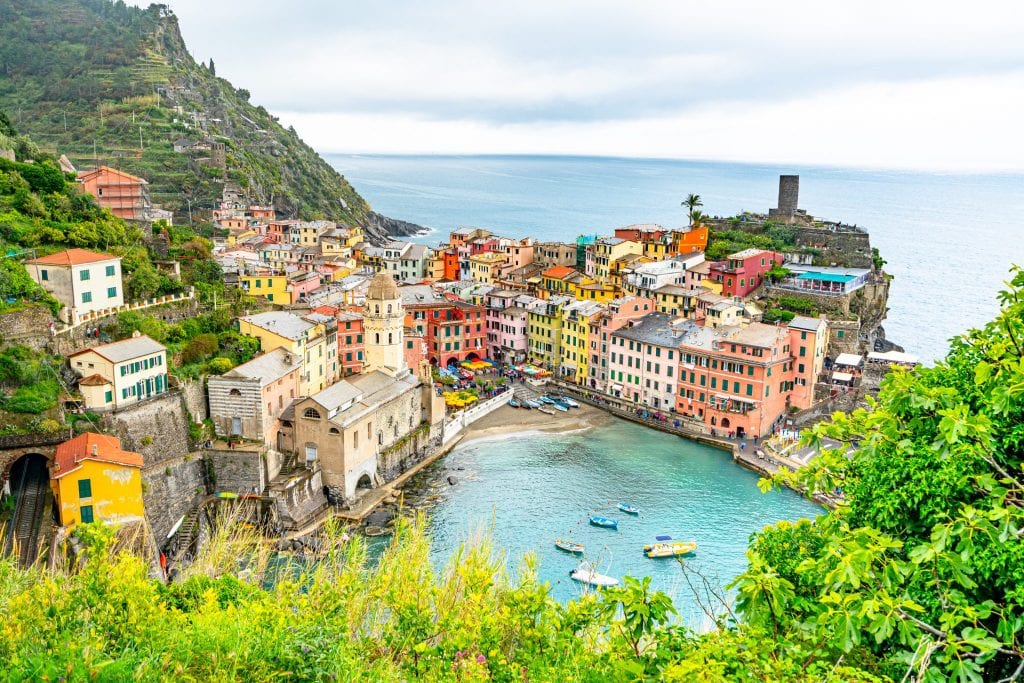
Basic Medication — Some people prefer to buy medication for basic headaches, fevers, and stomach aches as needed, but who wants to deal with language barriers when they’re sick? We’ve never regretted packing our own basic meds.
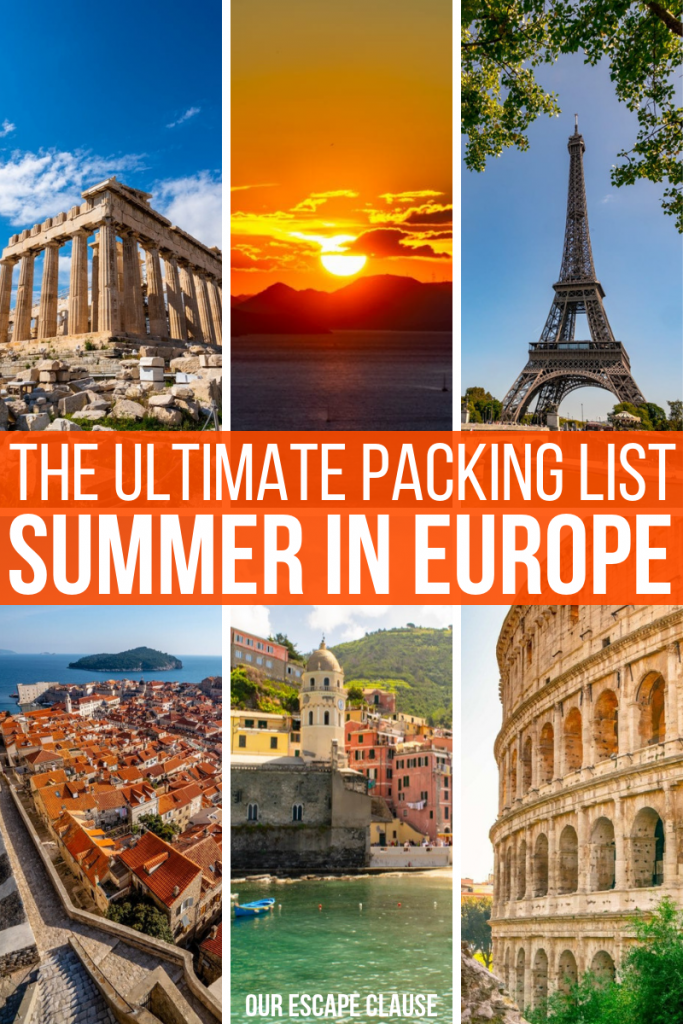
About Kate Storm

In May 2016, I left my suburban life in the USA and became a full-time traveler. Since then, I have visited 50+ countries on 5 continents and lived in Portugal, developing a special love of traveling in Europe (especially Italy) along the way. Today, along with my husband Jeremy and dog Ranger, I’m working toward my eventual goal of splitting my life between Europe and the USA.
2 thoughts on “The Ultimate Packing List for Europe: Summer Edition”
I enjoyed reading your recommendations for traveling to Europe. I’m planning a family trip to Europe for about 7-10 days and I’d like to ask, since you have extensive travel experience across Europe, which would be the best countries/cities to visit as a first time tourists. I would appreciate your help and input. Happy and safe travels.
That’s a very hard question–a bit like “how long is a piece of string?”. Where to go in Europe depends so much on your interests, timeline, budget, where you’re traveling from, etc.
We go over several popular first-time-in-Europe itinerary ideas in this post that might give you an idea what to expect: https://www.ourescapeclause.com/2-week-europe-itinerary-trip/
Leave a Comment Cancel reply

The ULTIMATE Winter Packing List Europe [2024 UPDATE]
With so much excitement erupting for your cozy getaway, having a solid winter packing list Europe is essential for a successful trip!
We’ve all heard how harsh European winters can be… but they’re also some of the most magical! Think snowy alpine villages in Switzerland, glittering holiday markets in Germany, and romantic carriage rides in Paris. We’ve even gone in depth on the 73 Best Places to Visit in Europe in January 2023 !
Winter is one of the best times of the year to explore Europe since there are typically far fewer tourists, travel costs go down, and you’ll be forced to snuggle up in front of a roaring fire at some point along the way.
I have included separate packing lists for both the guys and the girls, some practical tips, a full weather guide to the most popular European destinations, as well as some answers to your most popular questions.
This ultimate guide is guaranteed to keep you warm and cozy on your next European winter vacation!
Happy Travels!
The Ultimate Winter Packing List Europe 2024

This packing list for 2 weeks in Europe in winter has been created assuming you won’t have access to a washing machine and dryer, but if you do, I suggest cutting down the numbers to the one week packing list above.
This way, you won’t have to carry as many items and you’ll probably only have to do laundry one time, so it shouldn’t cut into your exploring time too much.
Also, I know it might be tempting to bring along a few different winter coats to mix up your photos a little, but don’t. It’s hard enough to travel with one large, poofy jacket, so trying to fit an extra one in your suitcase is just a recipe for disaster.
It can also lead to additional luggage fees at the airport, so just pick your favorite. You’re only going to be wearing it when you’re outdoors anyway!
Winter Packing List Europe: The Essentials

Outside of creating your winter packing list Europe, you’ll need a standard packing list for all of the essentials including toiletries, electronics, basic clothing, and your personal items.
➡️Toiletries

➡️Electronics

➡️Winter Travel Clothes for Europe (for 1 week of traveling)

For a 7 day winter vacation, you should be packing the above quantities for each item. Wondering why I have told you to pack 9 pairs of underwear and 9 pairs of socks when you’re only traveling for one week?
The two extra sets are for your travel days to and from your destination!
Once you land and get to your first accommodation, most people, at least I do, like to shower and change clothes after sitting on an airplane and multiple trains or buses. This way you’ll feel clean and freshened up before beginning your adventures.
Likewise, on the way home, you’re bound to be sitting uncomfortably for several hours in one way or another, so don’t make it worse by wearing dirty clothes and have a clean set ready to go.
If you aren’t familiar with long underwear, it will legitimately save your skin in Europe in the winter. It’s a tight-fitting layer that helps to hold in body heat, keeping you warm and cozy without looking like a giant marshmallow!
Check out one of my favorite pairs here ! You can buy long sleeves and long pants for both men and women, as well.
If your winter coat is not waterproof , I highly suggest either buying one that is or getting a rain layer (i.e. a poncho of some sort) to put over your coat in case it rains.
Since temperatures usually average in the 30s to 40s, any precipitation tends to be rain, and once you’re wet, it’s hard to get warm and want to continue exploring!
Don’t skip the warm accessories! Winter hats, gloves, and scarves are absolutely essential for staying warm in Europe in the middle of winter. Opt for a matching set to feel warm and stylish while traveling!
For my ultimate list of items that I never leave home without when traveling to Europe, be sure to check out my Europe travel essentials list !
➡️Personal Items – don’t forget these items on your winter packing list for Europe

✔️ Before leaving your home country, it’s always a good idea to get some of the local currency of your destination. This way, you won’t be forced into paying inflated exchange rates.
Simply head to your local bank and order some money in your destination’s currency, then pick it up once it arrives at your bank.
✔️ Government-issued photo identification will be required to get through airport security, so be sure your documents are on your person and unexpired!
Any expired documents will not be accepted, and any passports expiring within 3-6 months of travel (depends on your destination) or that don’t have any clean, unstamped pages will not be accepted.
✔️ Unfortunately, pickpocketing and illegal scanning of credit cards is a real issue in Europe. To help protect your personal information from others, purchase an RFID blocking wallet that holds both your passport and your debit and credit cards.
I personally use one and it helps relieve some worry while traveling in Europe.
✔️ Day backpacks make it super convenient and easy to carry a few extra layers and provide a place to store your layers if you get hot, as well.
I personally use Osprey , as they have a lifetime warranty where if they can’t fix your product, they’ll replace it free of charge! Keep your hands free while also carrying water, snacks, your spare battery pack, and more!
✔️ If you need to carry any prescription medications with you on your winter trip, be sure to ask your doctor if you will need a doctor’s note to bring it through security.
Some prescriptions require a note from the prescriber in order to fly on an airline, and if you don’t have one, your prescriptions can be confiscated.
Winter Packing List Europe: Women

Outside of the essentials, there are a few items I like to include when I travel to Europe in the winter. Even when it’s cold, I still want to look and feel stylish… there’s nothing wrong with that, right?!
Whether I’m exploring a new destination for the first time or I’m returning to a familiar favorite, I love to be outside as much as possible.
In the winter, this can certainly be a challenge during inclement weather, so I’ve created this ultimate list for us ladies that allows us to be warm and cozy, but also not feel like a snowman covered in a thousand layers.
✔️ Leg Warmers
My favorite way to feel trendy and chic while traveling in the winter is with my fun leg warmers ! Paired with some black or brown knee-high boots, these babies keep you toasty and stylish.
They look best when worn with either leggings or jeans, but to stay warm, I wear long underwear (linked above!) with jeans so I feel both warm and cute! Don’t worry, the long underwear is actually rather thin and tight-fitting, so you’ll still be able to get your jeans on.
✔️ Infinity Scarves
Infinity scarves are another great way to keep you feeling both warm and chic! When paired with a long coat and tall boots, you’ll feel taller and less, well, marshmallowy…
They’re perfect for keeping the wind off your neck and back while also adding a sense of fashion. I personally love my C.C. infinity scarf ! It’s super warm, is a nice length for double looping, and comes in a variety of fun colors. C.C. is also very affordable but still provides good quality products.
✔️ Winter Boots
For winter boots, not any pair will do. Finding the right balance of heat, water resistance, weight, and height all come into play. Ever since trying them, I’ll never go back to anything other than my L.L. Bean Boots .
They’re entirely waterproof, offer warmth to temperatures down into the negatives (Fahrenheit), and go with practically any outfit. They have styles for both men and women as well as several styles with varying warmth ratings, widths, and heights!
✔️ Winter Hat
Looking for a hat that keeps your head and ears warm but doesn’t mess up your hair too much? I totally get it! Bomber hats are great for keeping you warm, while also remaining slightly loose as to not mat down your hair.
If bomber hats aren’t your style, I also love my C.C. ponytail hat that allows me to keep my hair outside of my hat while keeping my head and ears warm!
✔️ Crampons
If you’re a hiker like me, I would recommend checking a bag and packing a pair of crampons in your luggage. This will save you a considerable amount of money and will allow you the necessary time to pick out a pair you like and get comfortable with the feel of them before ascending a steep climb.
Unless you plan on traveling for a few weeks around Europe, don’t pack your snowshoes. They will become a pain to lug around and will take up a lot of room in your suitcase.
Do some serious research and get out into the stores to try on crampons before buying them. With, no exaggeration, hundreds of different styles, it’s important to find a pair that fits your shoes correctly and has the right amount of traction for the hikes you have in mind!
Winter Packing List Europe: Men

Creating this men’s winter packing list for Europe was no easy feat but with a little help from my trusty travel buddy, Sean, you guys are in good hands!
Similar to the ladies, guys don’t want to look like they are made of marshmallows when they get dressed to go skiing either.
It’s equally important for guys to stay warm and be comfortable taking part in winter activities without the hassle of trying to move their arms through several layers of clothing. So, with this packing list, you’ll be able to do just that!
First, buy yourself a pair of long underwear especially if you plan on hiking, skiing, snowboarding, ice fishing, etc. If you aren’t planning to (only) jump from bar to bar, then these will be a lifesaver!
✔️ Long John’s
Stanfield’s Waffle Knit Long Johns are fantastic for keeping your legs warm while still being able to fit pants over them making them the ultimate base layer. If you plan on doing a lot of winter activities on your trip to Europe, be sure to order a pair!
✔️ Wool Socks
To keep your feet and calves warm, opt for some wool socks. Ideally, they won’t be made of 100% wool, otherwise, they can be itchy depending on the type of wool.
We are big hikers and have heard great things about RealTree Heavyweight Merino Wool Socks for keeping your feet warm and dry in cold weather from fellow hikers.
If this particular pair is a bit pricy, look for a good balance of wool, nylon, and spandex for a comfortable fitting sock that also keeps your feet warm.
✔️ Thermal Long Sleeve Shirt
For an upper warming layer, a thermal shirt is key. They layer perfectly under pullovers, fleeces, and jackets and are breathable for hiking and winter sports.
These Thermajohns are ultra-soft, stretchy, and very warm making them perfect for both winter activities and wandering through cities on a cold winter day!
Pair these items with waterproof boots, a winter jacket, and a good hat and gloves set, and you’ll be exploring in no time!
✔️ Pro Tip : While many of the women’s items won’t be very helpful for men, many of the men’s items will be equally as helpful for the women 🙂
Winter Weather in Europe by Country
In this section, I’m going to tell you all about the average weather for the most popular European countries in the winter months.
Use this section to help choose your destination(s), plan which month you want to travel, and how much winter gear you’ll need!

Due to Austria’s extremely mountainous landscape, the country has a cooler year-round climate with cold winters.
You can expect temperatures to continue to drop as you go higher in elevation, beginning with Vienna , going into the other major cities, then ending with the coldest weather in the alpine regions of the mountains. But, even in the cities, you can expect many cold, dark days in the winter.
In December , temperatures sit in the low to mid-30s (around 1 degree Celsius) with about 1.5 inches of snow and only 1.5 hours of daylight each day.
In January , temperatures remain about the same with slightly less precipitation at 1.2 inches, and you gain one hour of sunlight for a whopping 2.5 hours each day.
In February, temperatures start to crawl into the high 30s to low 40s (around 2 degrees Celsius), with the same amount of precipitation as January and 3.5 hours of sunlight each day.

Starting on the western coast of Belgium where the land borders the Atlantic Ocean, you can expect milder temperatures with frequent rain. Temperatures continue to drop as you continue east, with rain making an abundant appearance throughout the winter.
In December , temperatures average in the high 30s with over 3 inches of rainfall and almost half the days of the month being rainy. Similar to Austria, the days will be cold and dark with only 1.5 hours of sunshine each day.
In January , you may get lucky with one or two days in the low 40s (around 3 degrees Celsius), but you’ll still need your umbrella to take on 3 inches of rainfall. You’ll gain a whole 30 minutes of sunshine, resulting in a total of 2 hours per day.
In February , you can expect similar temperatures to that of January, with higher temperatures creeping in towards the end of the month. Rainfall drops down to 2.4 inches for the month and you’ll gain another 30 minutes of sunshine for a total of 2.5 hours each day.

Depending on where you are headed, you can experience either mild or extreme winters in Croatia. If you plan on skiing in the Dinaric Alps, be ready for some very cold temperatures.
However, if you are planning to holiday on the beaches of Dubrovnik, you can expect mild temperatures in the low 50s (around 11 degrees Celsius). Since the majority of tourists are visiting to escape their icy homes, the below forecasts are for the popular tourist destination of Dubrovnik.
In December , you may not be hitting the beach as temperatures are still in the low 50s and rainfall is at a very high 5 inches for the month. But, you will get slightly more sunshine with an average of four hours per day.
If you plan on visiting Croatia, be sure to include rain gear on your ultimate packing list winter in Europe!
In January , temperatures are still cooling slightly, so temperatures drop into the high 40s. Rainfall drops down to about 3.7 inches for the month but still has, on average, 11 rainy days. Sunshine is the same with about four hours per day.
In February , temperatures average the same as January, rainfall drops down slightly to 3.5 inches per month, and sunshine hours increase to five per day.
Czech Republic

If you are planning your holiday visit to Prague for the beautiful Christmas markets, be sure to bring a heavy-duty winter jacket! Winters in Czechia are cold, with temperatures typically remaining below freezing for the entire winter.
Also, due to the country’s close proximity to Russia, it isn’t unheard of to experience extreme cold waves where temperatures drop into the teen negatives!
In December , be prepared for temperatures in the high 20s to low 30s (about 2 degrees Celsius), an occasional dusting of snow accumulating to about one inch per month, and only about 1.5 hours of sunshine per day.
In January , the average temperature hits about 29 degrees Fahrenheit, snow still only accumulates to about one inch per month, and the number of hours of sunlight is the same as in December.
In February , temperatures remain very cold around 30 degrees Fahrenheit, snowfall remains the same as the previous two months, and sunshine makes its way up to 2.5 hours per day.

If you are looking for a winter getaway to somewhere that is almost always dark, often times overcast, windy, and rainy, then Denmark is just for you.
Unfortunately, the popular tourist destination of Copenhagen is better saved for the spring through the fall when temperatures are comfortable and the sunshine returns. Below is the forecast for Copenhagen , specifically.
In December , temperatures sit just above freezing around 36 degrees (around 2.5 degrees Celsius), rainfall makes up about one-third of the month’s days with 2 inches on average, and sunshine hours have been known to drop to as little as 45 minutes per day!
In January , it cools off a little more and the average temperature drops to around 34 degrees Fahrenheit, rainfall drops to about 1.4 inches per month, and sunshine makes a small jump up to 1.5 hours per day.
In February , temperatures remain the same as January with a further drop in precipitation down to about 1 inch, on average, per month. Sunshine hours are starting to move up with about 2.5 hours per day.
If you plan on visiting Denmark in the winter, heavy-duty winter gear is essential and should be included on your winter packing list for Europe.

Since London is located in the southern parts of the UK , the temperatures are a bit milder than in the rest of Britain. While the below forecasts are set mainly for London and the closely surrounding area, keep in mind you’ll experience more severe temperatures and precipitation the further north you go towards Manchester.
Also, London is rainy year-round, but especially in the winter. Be sure to include extra layers and a good quality rain jacket in your winter packing list Europe!
In December , expect temperatures in the low 40s (around 5.5 degrees Celsius), about 2.2 inches of rainfall divided among about 10 days, and a mere 1.5 hours of sunshine each day.
In January , both temperatures and rainfall remain the same as in December, with 2 hours of sunlight each day.
In February , temperatures remain the same as in December and January, with a drop in rainfall to about 1.6 inches per month, and up to 3 hours of sunlight each day.

France has multiple different climate zones due to its ocean border, its mountainous landscape in the Pyrenees and the Alps, and its miles of rolling hills and open landscapes.
France is beautiful year-round, especially when it’s covered in a blanket of snow, but be sure to use my winter packing list for Europe to help you pack… otherwise, you may get pretty cold!
In December , Paris has an average temperature of about 42 degrees (5.5 degrees Celsius), 2.4 inches of rainfall, and only 1.5 hours of sunlight each day.
In January , the average temperature stays about the same, around 41 degrees, rainfall drops to about 2 inches per month, and sunshine hours increase to 2 per day.
In February , temperatures are still the same as December and January, rainfall continues to drop with an average of 1.6 inches per month, and sunshine hours increase to 3 per day.

Be sure to include your snow boots and jacket on your winter packing list for Europe when heading to Germany ! Snowfall occurs frequently, typically in small amounts, and sunshine hours are on the lower end.
Precipitation, temperatures, and sunshine hours vary a good amount between German regions, so we chose to focus on the popular Bavarian city of Munich.
In December , the average temperature is around 34 degrees Fahrenheit and you can expect about 2.4 inches of rainfall during the month. With slightly more sunshine than its neighboring cities, Munich gets about 2 hours of daylight per day.
In January , temperatures drop down to freezing, rainfall numbers hit about 2 inches per month, and sunshine hours remain around 2 per day.
In February , temperatures and rainfall are about the same, but sunshine hours jump up slightly to about 3.5 hours per day.

Greece is a great winter destination for those seeking very few tourists, mild temperatures, and slightly more sunshine during the day. Don’t get me wrong, you still won’t have the same experiences as you would in the summer, but at least you won’t have to fight for a spot on the beach!
In Athens in December , temperatures range in the low to mid-50s, rainfall is at an all-time high for the year averaging around 3.2 inches during the month, and there are about 4 hours of sunlight per day.
In January , temperatures and sunlight hours are neck and neck with December, but rainfall makes a good drop down to about 1.9 inches for the month.
In February , temperatures and rainfall remain the same as the previous two months but sunshine hours rise to 5 per day.

Due to Ireland being surrounded by the ocean on all sides, the weather is often wet, cool, and foggy. So, while the below forecasts are centered around Dublin , you can expect mild to very cold temperatures no matter where you are on the island!
In December , temperatures vary in the low 40s, rainfall is frequent with up to 3 inches of rain per month, and sunshine hours average around just 1.5 per day.
In January , temperatures are the same as in December, rainfall drops slightly to about 2.6 inches during the month, and you’ll have about 2 hours of daylight.
In February , temperatures are similar to December and January, rainfall averages decrease to about 2 inches for the month, and sunshine hours increase slightly to 2.5 hours per day.

Italy has a wide range of climates due to its location on the Mediterranean and northern mountain landscapes. In the South near Naples and Sicily, you’ll experience milder temperatures and frequent precipitation.
In the North near Milan and Venice, you’ll likely see snowfall and temperatures just above freezing. We’ve gone with the middle grounds of Rome for the forecasts below.
In December , temperatures are mild in the high 40s (around 9 degrees Celsius) with about 4 inches of rainfall, and 3.5 hours of sunlight per day.
In January , temperatures drop slightly to the mid-40s and rainfall also drops to about 2.8 inches during the month. Sunshine hours go up slightly to 4 hours each day.
In February , temperatures start making their way back into the high 40s, rainfall remains at 2.8 inches, and the number of hours of sunlight increases to 4.5 per day.

Winters in Luxembourg City are typically cold, dark, raw, and dull. Temperatures tend to range in the mid to low 30s, winds occasionally pick up due to the Atlantic Coast being within close proximity, and the country does receive snow from time to time.
In December , temperatures are in the mid-30s and rainfall occurs frequently; about 13 days out of the month. Sunshine hours are extremely low with only about one per day.
In January , temperatures drop to the low 30s and rainfall decreases slightly to 3 inches for the month. Sunshine hours increase to two per day.
In February , temperatures rise again to the mid-30s and rainfall continues to decrease down to 2.6 inches, or 10 days over the course of the month. Sunshine hours remain at two each day.
The Netherlands

With its location near both the North Sea and the Atlantic Ocean, the capital of the Netherlands , Amsterdam , has cold, dreary winters with frequent wind and rain. Snow does occur on occasion, so be sure to include all of the noted winter gear above from my packing list for winter in Europe.
In December , temperatures average in the high 30s and rainfall is common with about 14 days of rain out of the month. Sunlight is slim with only 2 hours each day.
In January , temperatures still average in the high 30s, rainfall decreases slightly but is still common, and you’ll experience about 2.5 hours of sunlight per day.
In February , temperatures start creeping into the low 40s, rainfall drops down to 10 rainy days during the month, and sunlight hours increase to 3.5.

Owing to its location perched on the Mediterranean, Lisbon , the capital of Portugal , is known for its mild, rainy winters . However, Lisbon is still a fun winter destination due to its 5 hours of sunlight each day throughout the winter and temperatures averaging in the low to mid-50s.
In December , with temperatures in the mid-50s and rainfall at nearly 4.7 inches during the month, you’ll need to include some rain boots on your winter packing list for Europe with this destination.
In January , temperatures drop ever so slightly to the low 50s and rainfall takes a good fall down to 3.7 inches for the month.
In February , temperatures rise to the mid to high 50s, and rainfall sticks around 3.5 inches, or 10 days over the course of the month.

Similar to Lisbon , Barcelona has a Mediterranean climate with mild and slightly rainy winters. While still beautiful in winter, many tourists enjoy visiting in the summers for the dozens of beaches along the country’s sweeping coastlines.
Although, you’ll have unlimited access to the popular museums, bars, restaurants, and shopping districts with little to no wait. Just be sure to check local business hours before booking!
In December , temperatures range in the low to mid-50s, rainfall is rather low with only 5 rainy days during the month, and sunshine averages around 4.5 hours per day.
In January , temperatures drop to the high 40s on average, rainfall drops down to only 1.6 inches, or 4 days out of the month, and sunshine hours reach 5 per day.
In February , temperatures and rainfall are the same as in January and sunshine hours increase slightly to 6 hours per day.
Switzerland

As one of the most popular winter sport destinations in the world, there’s no wondering if Switzerland is cold or not. With mountainside temperatures dropping well below freezing, and popular cities perched on the side of lakes, be sure to pay close attention to our winter packing list Europe.
The below forecasts have been created from the capital of Bern, but know that if you plan to do any skiing, you’ll experience much colder temperatures and more precipitation, likely in the form of snow.
In December , Bern has temperatures averaging just above freezing (about 1 degree Celsius), an average of 3 inches of precipitation during the month, and only 1.5 hours of daylight.
In January , temperatures drop slightly below freezing and precipitation drops around 2.4 inches per month. Sunshine is still very low will only 2 hours per day.
In February , temperatures are about the same as in January, snow becomes less frequent with about 2 inches per month, and there are about 3 hours of sunlight each day.
FAQ: Winter Packing List Europe
In this next section, we’re going to dive into answering some important questions that will greatly help you while planning your winter trip to Europe!
What Should I Pack for a 3 Week Trip to Europe in Winter?

For a 3 week trip in Europe during winter, you’re going to need a slightly bigger suitcase (or a willingness to wash more frequently!). You can stick to the list mentioned previously with a few additions.
- More layers!: Pack 4-5 long sleeves, 3 sweaters and an extra pair of pants. Layers are your best friends in cold weather, allowing you to adjust your outfit according to the temperature.
- Extra socks and underwear: Pack about 7 pairs of each if you plan on doing laundry ( or sink laundry… nobody’s judging! ) or enough to cover your entire trip if you won’t have access to any form of laundry services.
- A heavier outer layer: Alongside the down puffy jacket, bring a heavy woolen or thermal coat that will keep you warm during the coldest days.
- Snow boots: If you’re planning to visit snowy places, a pair of waterproof snow boots will be a game changer.
Remember, the goal isn’t to pack your entire closet. It’s about packing smart, not packing everything . So pick items that you can mix and match to create different outfits. And most importantly, leave some room in your suitcase for some European souvenirs!
What Should I Include on My Winter Packing List Europe?

I’m so glad you asked! There is a pretty long…. okay, somewhat seemingly endless list of things you should include on your winter packing list for Europe, but that’s alright.
Everything from the basics like hygiene essentials to the winter specifics are included on the lists below. You can also find a downloadable version of my backpacking Europe winter packing list at the bottom of this post!
The most important thing to remember when packing for Europe in winter is finding the balance between packing the right amount of layers and not overpacking. It’s difficult and can seem almost impossible at times, but you’ll have a really good idea of what to bring at the end of this post!
Try to limit anything you can’t actually wear outside… meaning, you likely won’t be wearing your favorite t-shirt outside when it’s 30 degrees Fahrenheit out with nothing over it.
So, limit your t-shirts, your pajamas (1-2 sets is plenty), and avoid packing things like jean shorts or anything you would wear in the spring or summer.
It’s easy to get caught up in thinking “I might need this, I’ll bring it just in case”, but you’re going to regret it once you feel the weight of your suitcase! If you’re anything like me, you’ll end up wearing the same 2-4 outfits no matter how many clothes you bring anyway.
Why Visit Europe in Winter?

Personally, I live for cozy fireplaces, wandering through snow-covered cities, horse-drawn carriage rides with mulled wine and blankets, and romantic holiday markets!
There’s nothing like experiencing the magic of a city than in the middle of the winter when you have a chance to chat more with the locals and visit the attractions without the chaos of the peak season.
You’ll also have opportunities to capture some of the most incredible photographs of snow-dusted cityscapes, empty streets and attractions, snow-capped mountains, and cold, rugged coastlines.
This is one of the biggest perks of visiting Europe in winter! Just wait until you can show off all of your amazing pictures once you get back home.
Even if you are someone who doesn’t like to be cold for long periods of time, there are plenty of winter activities in Europe for you to enjoy.
That’s why I have created this winter in Europe packing list so that you can experience all of the exciting activities available without having to run back to your hotel every time you get cold!
If you’re considering the idea of visiting Europe in winter, be sure to check out our latest article on the 30+ Best Places to Visit in Europe in December !
How Cold Does Europe Get in the Winter?

In short, Europe gets very cold in the winter. In most places, you won’t see temperatures as low as that of Russia, but you will experience many dreary, raw, and rainy days throughout the winter season.
In the previous sections, we’ve broken down the winter weather in the most popular European countries for your reference.
Keep in mind, that they are simply averages, and that it is always best to look at current weather trends and predictions prior to your trip.
How do People Dress in Europe in Winter?

Depending on where you visit, some regions may be experiencing more fall or spring-like temperatures while other regions are in the depths of freezing winter.
For the most part, you’ll find many people dressed in long pants, warm boots (not always waterproof if the region doesn’t receive much snow), long sleeves, sweaters, and down puffy jackets. Hats, gloves, and scarves are extremely common, as well.
Now, if you like to look stylish when you travel, I totally get it. You’re probably thinking “how can I still look stylish if I’m wearing the same coat in ALL of my pictures?”
Totally valid point. And my answer to that is… scarves and hats! Bring 2-3 different scarves and 2-3 different hats (you’ll need to wear a combination of them on the plane so you don’t overcram your luggage) so you can mix and match your outfits and make it seem like you’re wearing entirely different outfits while traveling!
This trick works every time and prevents you from traveling with more than one bulky winter coat for Europe. Trust me, you do NOT want to travel with more than one winter coat!
Things to Know Before Visiting Europe in Winter

✔️ Depending on the month, you can either save or spend a lot of money
If you’re wondering what to wear in Europe in November and December, then keep reading.
These months are notorious for spiked flight and accommodation prices since travel picks up again for the holiday season. If you’re traveling to Europe for the holidays, book everything as far in advance as possible.
If your dates are flexible, you can save some serious cash by heading to Europe from mid-January through March!
However, your packing list will be very similar to the full winter packing list for Europe since rogue below freezing days aren’t unheard of in November and December. You may not need the snow pants quite yet, but everything else can stay!
✔️ Not everything will be open
Just like in the U.S., a lot of local shops and businesses in Europe close for the off-season due to the significant decrease in tourism. If there’s a specific place you simply have to visit, be sure to check their seasonal hours before booking.
✔️ It can get very, very cold
Europe is home to both sky-high mountain ranges as well as endless miles of coastlines which contributes to the continent’s varying climates. Typically, you’ll experience milder winters in central and western Europe, with harsher temperatures the further you go north.
Expect temperatures in the low 30s to 40s Fahrenheit (0 degrees Celsius), but come prepared with layers if you plan to do winter sports or want to walk around outside for long stretches of time.
✔️ It gets dark early
Unlike the summer months where the days seem to link together due to the mere few hours of darkness each night, the winter months can feel slightly dreary.
The sun typically sets around 5:00pm and it will stay dark into the later hours of the morning. You’ll usually get between 3-5 hours of daylight each day, so be sure to get up and out of your accommodation while everything is well lit!
✔️ You’ll need to pack more, not less
In the winter, you can experience rain, hail, snow, wind, and bone-chilling temperatures in Europe.
So, you’ll need to come prepared with everything from winter boots and jackets, rain layers, and accessories (don’t worry, I outline all of this for you down below!)
Packing for Europe in a Carry-On

If you’re like me and hate the idea of waiting for your bag at a carousel (only to realize that it’s been lost), lugging a giant suitcase from hotel to hotel, and being responsible for a lot of belongings while traveling, then sticking with just a carry-on is for you!
Below is what I always pack in my carry-on whenever I travel to Europe:
1. Passport & ID
2. Wallet and credit/debit cards and some local currency
3. Travel documents (flight & accommodation confirmations, emergency contact information, passport copies, etc.)
4. Phone charger and adaptors for different countries
5. Hygiene bag (shampoo, conditioner, toothbrush, toothpaste, hairbrush, chapstick, light makeup, etc.)
6. Portable battery pack or power bank
7. Sunglasses and sunscreen
8. Scarf/gloves/hat to keep warm in the winter
9. Any medicationsyou may need during the trip
10. A light raincoat (just in case!)
11. A compressible down puffy jacket
12. 2-3 pairs of underwear
13. 2-3 pairs of socks
14. 2 pairs of pants
15. 1 pair sleep shorts
16. 2 t-shirts
17. 2 long sleeves
18. 1 sweater
19. 1 pair of comfortable, water-resistant boots
20. 1 TSA-approved carry-on sized backpack to put it all in
Keep in mind that this list will require you to do laundry more often (hotel sinks are great for filling up with hot soapy water to handwash your underwear and socks if you can’t find a laundromat), but if you are a minimalist at heart, this won’t bother you much.
How do You Pack a Carry On for 2 Weeks in Europe Winter?

If you’re looking for a winter carry on packing list for 2 weeks , don’t simply double everything on the list above! Your back and wallet will thank you.
Instead, plan to book an accommodation about halfway or so through your trip that includes laundry services or has a washer and dryer in the unit! That’ll save you from carrying around a lot of extra weight and luggage, plus you likely won’t need to check a bag this way. Win-Win!
Shoes to Wear in Europe Winter

Traveling in the cold winter months of Europe can be daunting, but you don’t have to sacrifice style for comfort when choosing shoes! When searching for the perfect pair of shoes for a European vacation, look no further than a comfortable, water-resistant boot.
This type of shoe will keep your feet warm and dry all day long as you roam around various cities. An added bonus is that if it begins to rain during your trip, these boots will also help protect against wet conditions.
Plus, they come in many stylish designs so you can still make a fashion statement while keeping your toes cozy. Whether you’re looking for something casual or dressy for nights out on the town, there are plenty of options out there that meet both requirements and make traveling more enjoyable throughout Europe’s chilly winter weather!
🥾 I personally LOVE my Xtratufs!
Practical Tips for Visiting Europe in Winter

✔️ If you truly hate the cold, pick another destination
Yes, Europe does get very cold. Don’t expect warm beaches and sunny, mild weather throughout your winter trip. If that’s what you are looking for, the Caribbean is probably a better fit for you.
✔️ Pack light with lots of layers
Traveling with a lot of heavy items in the summer is a pain, but in the winter it’s a real nightmare.
If you don’t want to be dragging your 30-pound suitcase through the slush, then I suggest packing sensibly and maybe even trying to find an accommodation with laundry services so you can pack even lighter.
You will need to pack lots of layers if you plan on visiting Europe in the winter, especially if you plan on taking part in winter sports, but be mindful of how many clothes you take overall.
Warm layers are the most important part of your winter packing list for Europe, so leave out unnecessary t-shirts, shorts, extra pairs of shoes, and so forth.
✔️ Carry some cash on you
In the summer when most businesses are open, credit and debit cards are happily accepted since the exchange rates usually work in their favor.
But, in the winter, when mostly only local hotspots remain open, most of them expect cash and don’t always accept credit cards. While it is rare, keep some currency on you to avoid any hiccups.
✔️ Avoid street ATMs
While you should practice this any time of the year in Europe, just be mindful of where you are getting your currency from. Street ATMs are one of the most popular places tourists get scammed out of their money!
Instead, find an ATM inside of a local bank with cameras that requires your debit card to get you in.
✔️ Plan an extra day in your destination
Especially if you are flying, chances are your flight may be delayed or even canceled in the middle of winter. So, avoid the stress of missing out on your plans, and plan an extra first day just for getting there.
This way, if you are delayed, you aren’t missing out on the schedule you spent a lot of time putting together! If you aren’t delayed, you’ll be pleasantly surprised with more time for sightseeing.
Travel Tips for Backpacking Europe in Winter

If you’ve decided to take on the challenge of backpacking Europe during the winter, you’re sure in for a treat! With far fewer tourists, no heat or humidity, and open access to attractions and restaurants, you’re about to have an incredible time… as long as you pack correctly, that is!
✔️ Wear your jacket and boots on the plane
If you’re flying to Europe to start your backpacking journey, don’t get stuck paying overweight fees due to your backpack being over the weight limit. Instead, wear your heaviest items even if it means you look a little goofy going through TSA.
✔️ Use packing cubes
If you’re going to be living out of a backpack for the next few days, weeks, or months, you’ll need to stay organized. These packing cubes with mesh tops and thick lining are sturdy and allow you to see which clothes are in each bag to help you avoid dumping out your entire backpack to find one pair of pants.
They also come with a laundry bag and a dedicated shoe bag. You can also find these on my travel essentials list (linked above) since I never go anywhere without them!
✔️ Book accommodations in advance, if possible
We get it, the whole point of backpacking is to be schedule-free (mostly) and to move from place to place without set locations.
But, in winter, many accommodations close for the season and you may have a difficult time finding places that will host you for the night… and the last place you want to be is on the street in the middle of the night when it’s 30 degrees Fahrenheit out!
✔️ Book your train tickets in advance
If you plan on using the Eurail to get around, be sure to book your tickets ahead of time. In the winter, while there are fewer tourists competing for seats, there are also fewer travel times between destinations.
Always book directly with Eurail and avoid other scam websites claiming to sell Eurail tickets!
✔️ Pack warm, but not too heavy
Your boots, jacket, and winter accessories are all going to weigh you down more than if you were packing for a summer backpacking trip. Keep this in mind when creating your winter Europe packing list when you have 10 pairs of warm wool socks in your bag and you’re only going for one week!
✔️ Go with a good quality backpack
Don’t skimp and use a school backpack for your trip! You’ll end up with broken zippers, ripped pouches, and an unorganized mess… trust me, I’m speaking from experience. Before jetting off on your adventure, invest in a high-quality multi-day pack.
I personally use Osprey, as they have a lifetime warranty and phenomenal reviews from hikers and backpackers from all over the world. I have the 65-liter and love it!
✔️ Pack warm layers
There’s always a chance when backpacking that you’ll be walking for long distances, sitting on cold trains and buses, or even be sleeping in less than preferred quarters. Having layers is a good way to keep warm and comfortable during your trip.
✔️ Make sure your winter boots aren’t too heavy and have good support
As a backpacker, you’re bound to walk rather long distances at times. If your boots are too heavy and uncomfortable, you’re likely to get tired faster and end up covered in blisters.
Best Coat for Winter Travel in Europe

A good winter jacket is absolutely essential on any winter Europe packing list, but which one should you choose? With dozens of options all varying in temperature ranges, down materials, real and fake animal hair, and others, it can be hard to know which jacket is best for you.
That’s why I’ve put together a list of some of the most popular winter jackets on the market to help you choose the one that’s right for you!
Keep in mind, this is a very basic list, so you may want to do some more research based on your budget and how cold you want the jacket to be rated for.
These lists are not all-inclusive, and you can also find great deals in the spring at your local outdoor stores. In the U.S., I often shop at L.L. Bean and REI in March and April when all of the leftover winter coats go on sale! This is a great way to score a high-quality winter coat at nearly half the cost of when it is in season.
You can also find great deals on winter coats for traveling to Europe on Amazon like the ones above.
✔️ Pro Tip : Once you find a coat you really like, type it into Amazon. You can sometimes find the same coat at a massive discount just because of limitations in available colors or sizes!
To get your free downloadable European one-week winter packing list, sign up below and we’ll send it directly to your email for convenient and fast packing tips!
The Legendary Winter Packing List for Europe
We respect your privacy. Unsubscribe at anytime.
Other Helpful Resources for Europe
✔️ How to Plan a Trip to Europe: The ULTIMATE Guide for 2023 ✔️ The Ultimate Europe Bucket List: 101 Experiences to Have in Europe ✔️ Minimalist Packing List for Females Traveling to Europe ✔️ 5 Things You Must Include on Your Travel Essentials List ✔️ Backpacking Europe Routes for 2 Weeks: Routes & Tips ✔️ 25 Best Places in Europe for New Years Celebrations ✔️ 30+ BEST Places to Visit in Europe in March 2023 ✔️ 30+ BEST Places to Visit in Europe in April 2023 ✔️ Is Azerbaijan in Europe? The Facts for 2023 ✔️ Is Norway in Europe? Norway & the EEA EFTA States
Heading to Europe for the first time? Be sure to check out our 103 Greatest Tips for Traveling to Europe for the First Time !
Exploring Europe in the winter is one of the most romantic and magical experiences travelers can hope to one day get their hands on. Months of planning lead to weeks of booking accommodations, flights, trains, activities, tickets, and more!
With these insider tips and ideas, you are guaranteed to have a wonderful European vacation!
So, it’s essential to come prepared with the ultimate winter packing list for Europe in order to have the best trip possible.
Hey there! I'm Emily Concannon, a seasoned globetrotter who has backpacked her way across over a dozen European countries, immersing myself in the diverse cultures, languages, and cuisines of the region.
My passion for travel transcends personal experiences; I've spent years learning how to transform my globetrotting knowledge into personalized itineraries for fellow travelers worldwide.
With a tally of 26 countries (and counting!) under my belt, my day job involves extensive research on different countries which often leads me to booking a new adventure every chance I get!

11 Best Travel Accessories for Europe
Wondering what to bring to Europe? Adding a these Europe travel essentials to your luggage will help make your trip a lot easier. Travel in Europe can be a little bit frustrating at times but my list of the best travel accessories for Europe will help keep you calm, comfortable and safe.
We spent 5 weeks traveling around Europe in 2015 and four months traveling around Europe in 2018 as a family and, while it wasn’t always easy, it was a lot of fun. My list of things to to take to Europe is partly made up of items we packed ourselves. It also included a couple of European travel essentials that I wished we had along the way but didn’t, like a portable Wifi device or a physical guidebook, and because we didn’t have them we got into frustrating or expensive situations. Hopefully my list of things you need when traveling to Europe will prevent you from making the same mistakes we did!
What You'll Find in This Post
My picks for the top travel essentials for Europe to make your trip easier, safer and less frustrating. All of these items are pretty reasonably priced and are definitely worth it.

Add this to the top of your list of things to pack for Europe! For some reason, hotels and Airbnb apartments in Europe don’t have great curtains and blinds. An eye mask will really help you sleep well especially if you’re headed to Northern Europe in the summer. It’ll also help you sleep on the plane and get over jet lag faster after a long flight.
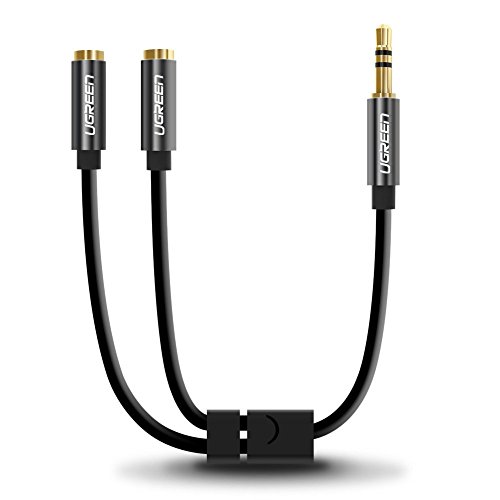
Headphone Splitter
One of my essentials for traveling to Europe is a headphone splitter. Why? If you’re travelling by train or budget airlines then you a can share a device and watch a movie on the ipad or laptop together . It’s such a simple, cheap item to throw in your your laptop bag or backpack and makes such huge difference.

Using Headphone Splitters to Watch a Movie on the Train in Switzerland
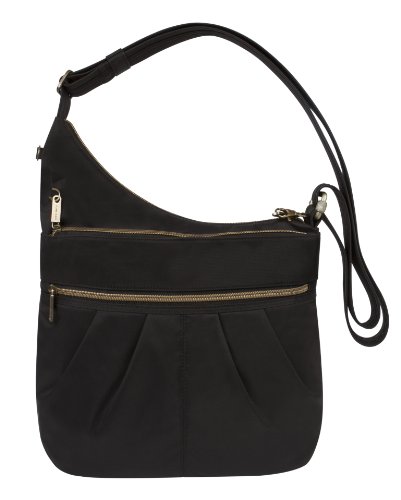
Slash Proof Bag
A slash proof bag is definitely one of my top picks for travel necessities for Europe. If you’re concerned about the safety of your belongs then a slash proof bag or backpack will put your mind at ease when you’re out and about sightseeing at busy tourist attractions. I have this cross body purse by Travelon which works great. It’s large enough to carry a water bottle, guidebook, camera, wallet etc but not heavy or bulky. The actual bag is reinforced with a slash proof mesh and the shoulder strap has an internal wire that also prevents slashing. It has an RFID pocket too to keep your credit card details safe and secure. You can read my complete guide to the best crossbody bags for travel .
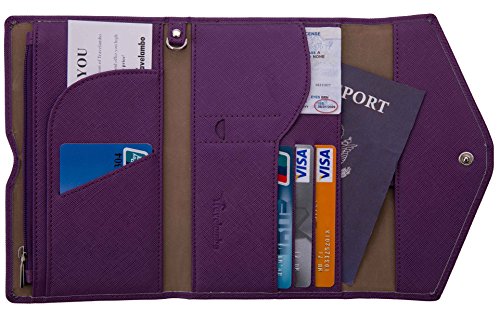
RFID Blocking Travel Wallet
Europe has problems with credit card fraud. Our card was skimmed right at the start of our five week trip and our bank cancelled it right away which was a huge pain! I would definitely recommend using a wallet with RFID blocking technology to prevent credit card fraud and identity theft. It’s a travel necessities Europe travelers should choose if they want to keep their personal information safe and secure. The purse I mentioned above has an RFID blocking compartment but if you don’t buy that then definitely pick up a cheap RFID blocking wallet like this for your trip.
You can purchase this RFID Blocking Travel Wallet here. It comes in 8 cool colors.
Plug Adaptor
A plug adaptor is one of the most important Europe travel necessities! You’ll need it to charge your laptop, camera, phone and any other electronic devices you bring along on your trip to Europe. Definitely bring it with you! We accidentally forgot to pick up an adaptor on our trip to Europe and spent the first two days in Paris without one . We looked everywhere! And just couldn’t find an adapter to convert our New Zealand plugs to European ones. We had to wait until we went back to the airport for your flight to Barcelona before we could find one. We were able to charge our iphone by plugging the USB cord into the back of the TV and modem in our Airbnb luckily. But no computer for 48 hours was tough considering we work online .
Anyway! Pick a good plug adapter like this that you can use for any country and also has slots for USB charging . That way you don’t need to bring the wall adapter for your iphone, just plug the USB cord straight into this adapter.
Click here to buy the Ispira Plug Adaptor .
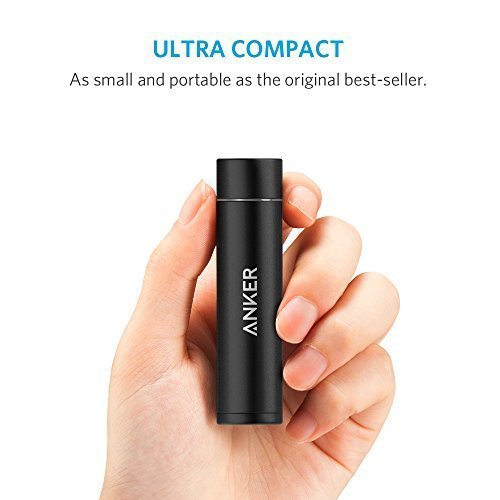
Power Bank or Portable Charger
When you’re out and about taking photos all the time you can quickly run the battery on your phone or camera into the ground. Don’t miss out on capturing precious memories because of a flat battery! Bring along a portable charger / powerbank to save your butt when your battery dies. It’s simple to throw in your day bag and have at the ready. Just remember to charge it again at the end of the day if you’ve used it. Power banks likes these can hold a full charge for an iphone and weigh less than an egg and is the size of a lipstick.
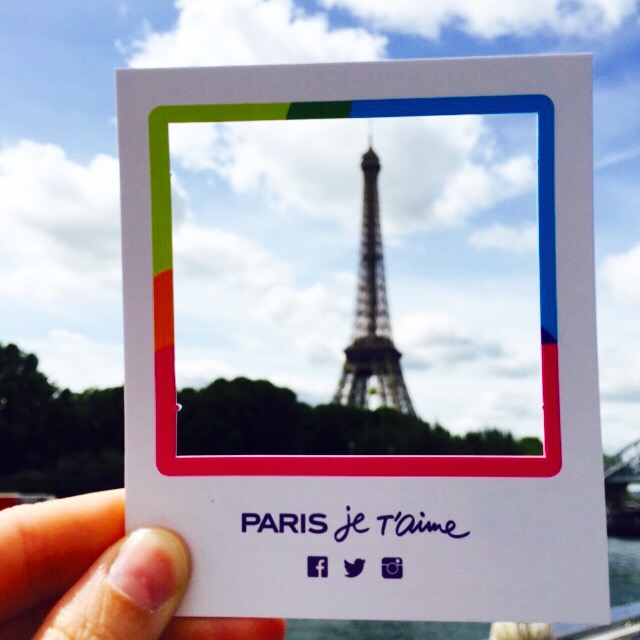
Instagram Paris on the Go!
European SIM card or Portable Wifi Device
Free wifi is hard to find in Europe and data roaming can be very expensive. We got a data only SIM card from MTX Connect that allowed us to use maps, social media, check hotel bookings, send emails etc from our phone while we traveled across Europe. You can get 2GB for a month which is plenty so long as you’re not streaming videos. You do have to order it in advance as they post it to you from Europe so allow enough time to get one before your trip.
If you don’t want to take your sim card from home out of your phone, then get a portable wifi device to bring along instead. This one from TEP Wireless is very popular with several travelers we know although I haven’t tried it out myself yet. It costs $9.95 per day for unlimited internet in Europe. This is often cheaper than paying for hotel wifi so not a bad deal at all. You can get the TEP Wireless device here.

Don’t under estimate having a physical Lonely Planet guidebook . They’re useful for planning but they’re also very handy things to bring to Europe for your day to day sightseeing, understanding the sights you’re visiting and offline maps if you can’t get wifi (see above!). If you’re flitting around to a lot of different cities, get a general Europe or country guidebook. If you’re spending longer in just a few cities, then the pocket guidebooks to individual cities are great and usually include a pull out map.
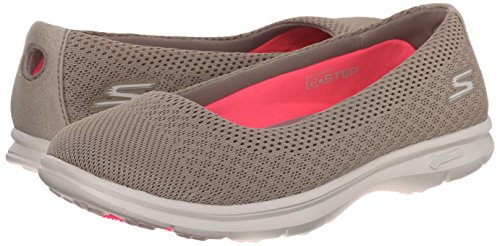
Comfortable Pair of Shoes
>>> You can read my list of the best travel shoes for Europe in every season in this post.<<<
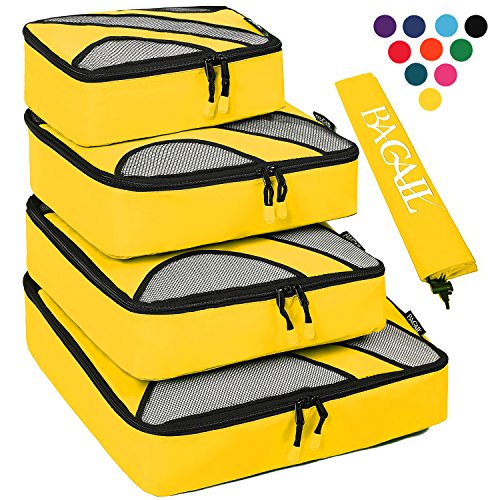
Packing Cubes
Using packing cubes is my #1 tips for how to pack for Europe. Packing cubes compartmentalize your luggage , help you pack light and keep your belongs organized. A set like these ones are great. They’re super versatile and will allow you to pack your tops, bottoms and underwear separately making it easy to find what you need when you need it.
>>>You can read my full guide to picking the best packing cubes here .<<<
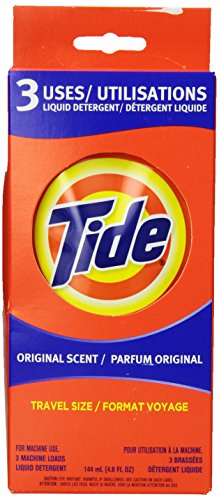
Laundry Detergent Sachets
A pack of travel laundry detergent sachets or these little laundry detergent sheets make it quick and easy to wash your items in a hotel sink in the evening and leave them to dry overnight. Hotel laundry is expensive and there are rarely self-service laundries in hotels in Europe. A travel sink stopper is also a good idea. It’s cheap and easy to throw in your luggage without taking up much space or weight.

Reuben Chasing Pigeons in Milan, Italy
Questions or Comments on My Europe Travel Essentials
Got a question about something on my list of essentials for European travel? Leave me a comment below and I’d be glad to answer your questions.
More Useful Posts About Packing for Europe
- If you’re travelling in Europe soon then check out my pick for the best backpack for Europe! (Coming soon!)
- Need a complete list of what to bring when traveling to Europe? Here’s my complete European packing list. (Coming soon!)
- Going on a European cruise? Read my packing list for cruising in Europe here. (Coming soon!)
- 10 Tech Tips for Travelling in Europe
- Stylish Walking Shoes for Europe – Pick the Best Travel Shoes for Europe!
- Best Travel Purse for Europe
- Best Travel Tote for Europe
- Best Anti Theft Backpacks 2019 – For Every Type of Trip!
- Best Carry On Backpack 2019: The Best 40L Backpack for Travel

Flashpacker Family in front of Sagrada Familia, Spain
Visiting Europe with Kids
Visiting Europe with kids? Here are some posts that will help you out:
- 40 Tips for Traveling to Europe with Kids
- 10 Tough Things About Travelling in Europe with Kids (And How to Make It Easier)
- Nice & The French Riviera with Kids
Pin this post for later!
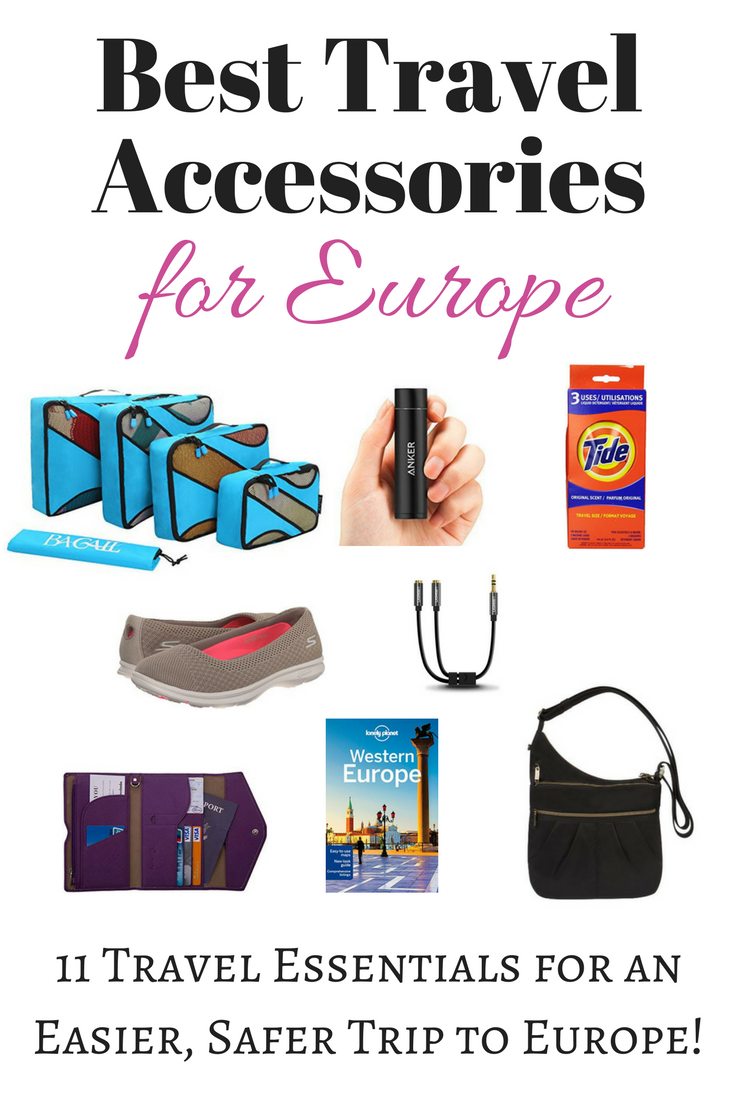
- Pinterest 567
- Send to a Friend 7

You do know they’ve got laundry detergent IN EUROPE? You can even get Tide. 😉
Yes but who wants to buy a whole pack for a short trip? These are small sachets that are measured out so you can use them to wash in a sink and dry items quickly overnight without having to do a full wash. So maybe read the post before you leave a smart ass comment next time!
We’re in Europe now, traveling for a year. We’ve been getting local SIM cards for the month we stay in each place and they are suprisingly affordable. Italy was 23Euro for 5GB for the month. Croatia was ~$15 for the month and 3GB of data. The people in the shop got everything set up for us and it’s been incredibly handy to have both phone and data as we stumble about trying to find apartments and routes and poke-stops. 🙂 Thanks for all these suggestions.
You mentioned a super light stroller in traveling with kids. Can you tell me which stroller that is?
Here is one that only weighs 7lbs – http://amzn.to/2p8SVCg
This is such a cool list. I like how you’ve mentioned a headphone splitter because I have been using one for many years now and never understood why they haven’t really caught on. The RFID Blocking wallet has unfortunately become a necessity, especially in Europe. I like the portable charger you have mentioned, because right now I carry a pretty heavy one. Thanks for the list.
We’re heading to Italy in March and I’m eagerly anticipating you’re checklist for Europe. Any ETA? BTW, your cruise checklist was an absolute life saver!!!
Thank you for your advice, I am going to Europe next month and these are very helpful tips.
Leave a Comment Cancel reply
Save my name, email, and website in this browser for the next time I comment.
This site uses Akismet to reduce spam. Learn how your comment data is processed .
Flashpacker Family is a participant in the Amazon Services LLC Associates Program, an affiliate advertising program designed to provide a means for sites to earn advertising fees by advertising and linking to amazon.com and its partners.
Affiliate advertising is used throughout this site. These affiliate ads allow me to earn a small commission on any bookings you may make but they do not incur any extra cost to you.
You can read our privacy policy here.

Start typing and press Enter to search

18 Must-Have Backpacking Europe Essentials
Last Updated on December 1, 2023
by Michael Rozenblit
Disclaimer: This article contains affiliate links. That means if you click a link and make a purchase, we may make a small commission. As an Amazon Associate we earn from qualifying purchases. For more information, see our privacy policy.

So it’s only a few weeks until you get on a plane and fly off to Europe. You’ve spent months planning your perfect backpacking Europe route. You’ve saved for your trip and know your daily budget back to front. Yet as your trip gets closer and closer, have you wondered what you may have forgotten to pack? Don’t fear! We’ve compiled our list of backpacking Europe essentials that we never fail to bring on any trip.
These items are often left at home by travellers who get caught up in the excitement of their trip and can be difficult to pick up on the road, particularly in Eastern Europe and the Balkan countries.
Table of Contents
1. Packing Cubes
I honestly don’t know how I used to travel without these before. My backpack was always a mess and I would have to take everything out to find the one item I was searching for. These days, even if I’m only going on a short weekend getaway, I always take my Eagle Creek compression packing cubes (also available direct from Eagle Creek here ).
They are incredibly lightweight, come in a range of sizes, compress my items and make finding things a breeze. They will score you great karma points if you are staying in a hostel as you won’t be that one traveller that seems to always be rustling plastic bags in the early hours of the morning!
While there are many packing cubes to choose from, I recommend these Eagle Creek Compression Packing Cubes as they have the additional benefit of compression which a lot of packing cubes don’t have.

2. Universal Plug Adapter
Many hostels are notorious for having a lack of electric outlets in their rooms. I’ve often stayed in dorms where, despite there being eight or ten beds, there are only one or two outlets in the room!
Rather than fighting with other backpackers over those outlets, I now travel with a Universal plug adapter that has additional USB slots .
This means that you can charge multiple items overnight and also be covered if visiting a country with a different plug socket. You’ll also likely become the hero of your dorm with this Universal Plug Adapter as several backpackers will be able to share one outlet!

3. Power Bank
Speaking of lack of electric outlets, another great gadget to have if travelling with multiple electronic items is a power bank.
These lightweight nifty devices allow you to charge items when on the move. This is super handy if you’ve had one too many beers the night before and forgot to plug in your phone before going to bed! They’re also great if you’re planning on camping throughout your trip.
I highly recommend the Anker Powercore Power Bank as one of my essentials for backpacking Europe as it’s one of the most lightweight power banks on the market.

4. Travel Insurance
Travel insurance is something to consider when backpacking Europe.
For many backpacking trips, we have used World Nomads . They offer flexible and simple travel insurance policies with coverage for more than 150 activities that you can buy or extend while on the road.
Another option if you’re travelling on a tight budget or long term is SafetyWing which offers travel medical insurance at extremely affordable rates.
Don’t know what to pack for your trip? Check out our complete backpacking Europe packing list!
5. Kindle E-Reader
For a long time, I resisted the development of technology and stuck with paper books. However, a few years ago, I finally bought a Kindle E-reader to save space in my backpack and I haven’t looked back since.
Not only are e-readers significantly lighter than paper books but I’m now able to load several books onto my device before beginning a trip. This means I’m no longer in danger of being stuck with the one torn paperback left in the hostel book exchange before a ten-hour bus ride.
I recommend the Kindle Paperwhite as it has a backlight which is useful as many hostels don’t have bedside lamps!

6. Smartphone
As somebody that travelled before the age of smartphones, it pains me to say that this is a backpacking Europe essential. However, travelling with a smartphone makes your trip so much easier!
Whether it’s having access to maps to navigate to your hostel, a translate app to communicate in more off the beaten path areas or know the correct exchange rate, having a smartphone will save you time and money.
To prevent dealing with some of the negative consequences of having a smartphone, consider limiting your time on social media and remember to enjoy your surroundings rather than staring at your phone!

7. International SIM Card
While you can get by with having a lot of offline apps, it certainly makes sense to have a SIM card when backpacking Europe.
Whether it’s finding your way to your hostel, letting your mum know that you’re alive or meeting up with friends you meet on the road, having data on your phone is incredibly helpful.
I recommend this Three Prepaid SIM with 12GB data or the Orange Prepaid SIM with 30GB Data as the best international SIM cards for Europe. Just remember, to not let having access to the internet take away from the experience of backpacking Europe!

8. Noise Cancelling Headphones
One of the most relaxing aspects of travelling can be getting onto a long train or bus ride, playing your favourite music or podcast and tune out while looking out the windows.
Unfortunately, there are plenty of distractions that can get in the way of this such as a noisy passenger or the bus driver deciding to blast his favourite album! That’s why an essential for backpacking Europe is a good pair of noise-cancelling headphones that drowns out the noise around you!

9. Microfibre towel
While some hostels are beginning to provide towels for guests, this isn’t always the case which is why I always travel with a microfibre towel when backpacking Europe.
These towels dry super quickly meaning you can shower without worrying about carrying a damp towel in your backpack all day. They also pack down very well in your backpack.
This microfibre towel has the added advantage of an antibacterial treatment to prevent odours from building up!

10. Rain Jacket
While this list of backpacking Europe essentials doesn’t include every piece of clothing you should take with you (check out our backpacking Europe packing list for that!), one item that I often see travellers forgetting about is a quality waterproof rain jacket.
When on a longer trip through Europe, you will undoubtedly go through a range of climates and whether you are going for a hike or just want to keep exploring a city, having a rain jacket in Europe will ensure that you can continue your plans without everything you’re wearing getting soaked.
I recommend the North Face Resolve Jacket ( women’s click here ) and have used it on countless trips around Europe.

11. Water bottle
The tap water in almost everywhere in Europe is perfectly drinkable so avoid contributing to unnecessary waste and take a reusable water bottle with you rather than buying plastic bottles everywhere you go.
Reusable water bottles also have the additional advantages of not developing bacteria anywhere near as easily as plastic bottles and do a good job at insulating your drink so you can carry around hot or cold drinks!

12. Travel Locks
Backpacking throughout Europe is, for the most part, incredibly safe. However, it’s worth taking some precautions to make sure your items are safe. I travel with both regular TSA compliant locks and also a travel cable lock .
The regular locks can be used for locking the zippers on your backpack and for hostel lockers – I prefer combination locks so you don’t need to worry about losing the key!
The cable locks are handy for locking your backpack to a stationary object – I often do this if leaving my backpack in a common storage area or on an overnight train.

13. Flip flops
While hostels in Europe are undoubtedly getting cleaner then they were a decade or two ago, when washing in shared showers it’s always good to be extra cautious!
Flip-flops are a backpacking Europe essential if you want to make sure you avoid picking up some nasty athlete’s foot during your travels. Luckily, a good pair of flip flops can serve multiple purposes as you will surely end up at a beach or two during your travels.
I always travel with my trusty pair of Havaianas and they have served me well! Just make sure not to wear them when carrying your backpack (as I see many travellers doing!) and instead pack a good pair of walking shoes as this is terrible for both your back and your feet!

14. Eye mask & ear plugs
When staying in hostels, you will undoubtedly encounter some inconsiderate backpackers who decide to switch on the main light at 2 am and decide to unpack their entire backpack .
That’s why I consider an eye mask and earplugs absolute essentials when backpacking Europe and staying in dormitories.
I prefer cotton eye masks as they’re significantly more comfortable than the cheap eye masks you tend to get on economy flights. Similarly, I like to travel with a large box of earplugs as they wear out quickly and there’s nothing worse than realising they don’t work in the middle of the night!
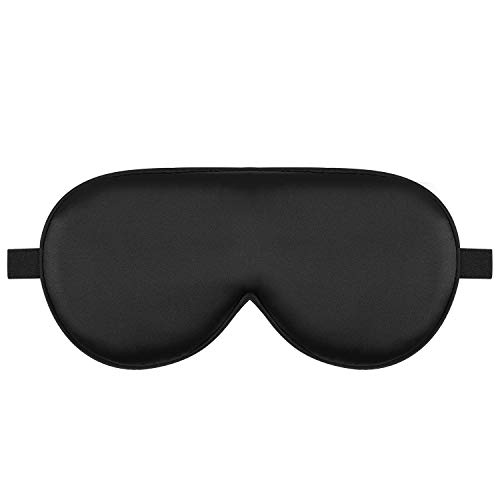
15. Notepad & Pen
While many millennials might scoff at the idea that a notepad and pen are essential items for backpacking Europe, I can’t imagine going on a trip without them!
Not only they are great for keeping a diary of your trip but I also find it incredibly useful for writing down directions in case your phone battery dies. Plus, your trusty notepad won’t let you down if you want to get the e-mail address of that person you just met in the hostel common room!
I start every trip with a fresh Moleskine journal and don’t think that will ever change!

16. First Aid Kit
One of the important must have items that I recommend travellers take with them is a small first aid kit.
Chances are that at some point during your travels, you will injure yourself or get sick so rather than having to rush to the pharmacy when that happens, it’s best to be prepared with a few essential items in your backpack.
Combine this first aid kit with some basic medicines like paracetamol, ibuprofen and anti-diarrhoea tablets will ensure that you’re well prepared!
And if you’re fortunate enough to stay perfectly helping during your travels then I’m sure there’ll come a time when one of your fellow backpackers will find your kit handy!

17. Pocket Knife
Either when you’re on a train, in a poorly equipped hostel kitchen or just out and about for the day, a quality pocket knife will undoubtedly come in handy while backpacking Europe!
A Leatherman pocket knife will last you for countless trips and will not only allow you to eat and drink on the road easier, but it will also help you repair bits and pieces easily while travelling.
It comes with a 25-year warranty so you can have confidence it’s worth the investment!

18. Lightweight Shopping Bag
As a backpacker, you’ll surely be purchasing at least some of your food in local supermarkets, so to help and environment and avoid paying for supermarket bags, consider packing a lightweight shopping bag.
Apart from being able to carry groceries, you can also use it as additional storage if you pick up any items while abroad and is definitely necessary for many local markets where they don’t even offer the opportunity to buy a bag!

Setting out on a backpacking Europe trip is a rite of passage for many young travellers. Hopefully, this list of essentials has reminded you of some items that you might have forgotten about in the excitement of planning your trip!
What items do you consider to be must-have items for travel? Let us know in the comments below!

Related Posts:

25 Best Travel Accessories for Europe

LEVEL8 Luggage Review: Textured Carry-On 20″ Suitcase

The Best Travel Pants for Europe (Winter or Summer!)

About Michael Rozenblit
Michael is a co-founder and writer for The World Was Here First. Both solo and with his partner, Maggie, he has travelled to over 50 countries across the globe and has a particular affinity for the Balkans and Eastern Europe. He’s lived in numerous countries worldwide but currently resides in his hometown of Melbourne, Australia. Read more about Michael
Thank you for sharing your essentials. Wouldn’t a pocket-knife be confiscated at the airport when one doesn’t check in luggage (traveling light)?
Yes – it’s only good to bring if you’re checking a bag!
Leave a Comment Cancel reply
18 Spring Travel Essentials I'm Scooping Up for My European Vacation
Sunglasses, sneakers, and sundresses.
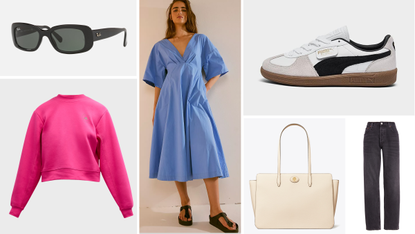
Welcome to this week's roundup of the best sale finds from across the web. As a shopping editor, a large chunk of my day is spent scrolling my favorite retailers—and every Friday, I'm sharing what I've uncovered so you can scoop up the best of this week's sales.
In less than two weeks, I'm heading off to multiple European cities on a family vacation, so this is my last chance to score travel essentials . In an effort not to overpack, I found versatile, staple spring pieces, from button-down shirts and trendy sneakers to jeans and light spring jackets . I'm deeming the picks below my spring travel capsule wardrobe, plus they'll be great additions to my warm-weather wardrobe when I return.
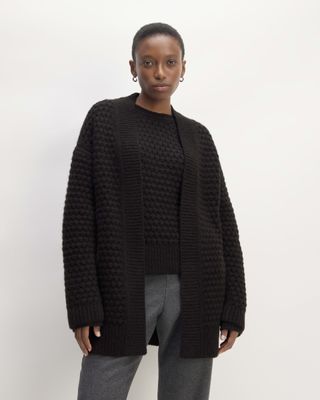
You'll never catch me traveling without a big cardigan in my carry-on. Not only is it a versatile layering piece, but it also works as an impromptu blanket or pillow on chilly airplanes. Save even more with one of our Everlane promo codes .

A pair of medium-wash straight-leg jeans like these are my saving grace on long vacations. They pair with everything else in my suitcase seamlessly, not to mention they're so much more elevated than leggings when out and about. Save even more with one of our J.Crew promo codes .

I've made the mistake of wearing heels on vacation far too many times, so I prioritize comfy walking shoes over anything else. I'm obsessed with the neutral shades on this pair since I won't have to worry about the rest of my outfit matching. Save even more with one of our Finish Line promo codes .
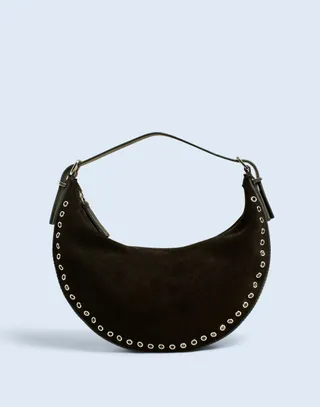
A tip I've learned from a travel expert is that the best purse for traveling is always one with two strap options. This one from Madewell can be carried by the top handle for fancier occasions or used as a crossbody for any time you need to go hands-free. Save even more with one of our Madewell promo codes .
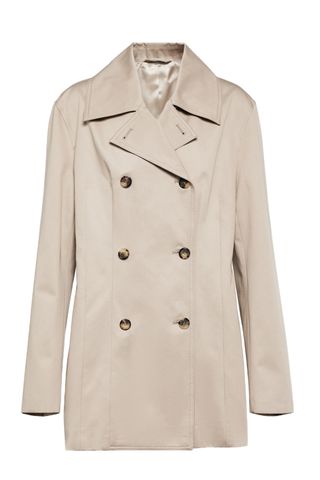
Unless you're heading to the tropics (which I'm not this time around), you never really know how the weather will play out. This spring jacket is just what I'm looking for—it's lightweight, easy to style, and something I can keep in my closet for years to come. Save even more with one of our Mytheresa promo codes .

I'm blaming Zendaya and her Challengers press tour looks for my newfound love for Tenniscore. While I won't be donning a pair of tennis-ball heels anytime soon, I can get behind this fun tee, which would work so well with the J.Crew jeans and Puma sneakers above. Save even more with one of our Lacoste promo codes .
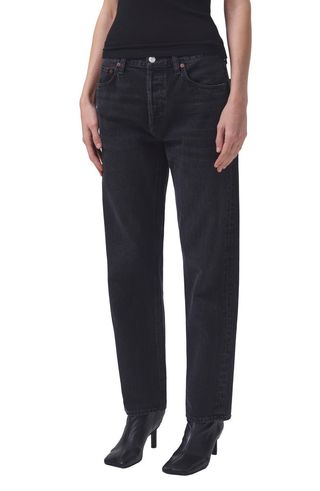
Black jeans are a piece I'll always make room for in my suitcase. I can wear them with sneakers and a T-shirt during the day, then pair them with a nice top and sandals for dressier occasions at night. Save even more with one of our Nordstrom promo codes .
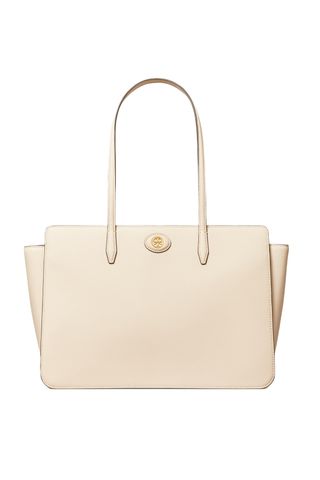
While this would make for a great personal item, it would make for an even better work bag . It's got so many pockets on the inside to keep your things organized and the sleek, minimalist design pairs perfectly with your go-to spring work outfits . Save even more with one of our Tory Buch promo codes.
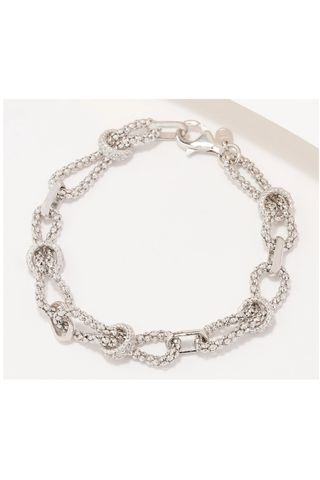
When I pack jewelry for trips, the pieces I choose have to be wearable with every outfit. This textured bracelet is the only one I would need for some added sparkle to all of my looks. Save even more with one of our QVC promo codes .

I refuse to wear anything other than a great loungewear set to the airport and this sweatshirt (complete with the matching joggers ) fits the bill. This Barbie pink shade is eye-catching and loads more fun than the average grey sweatshirt. Save even more with one of our Neiman Marcus promo codes .
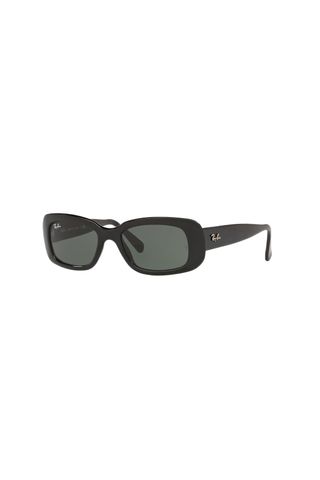
With my tendency to lose my sunglasses, I only bring one pair while traveling so they have to be versatile. These classic black frames work with anything I have on, plus the rectangular shape complements my round face the best. Save even more with one of our Ray-Ban promo codes .

I'll never stop talking about my love for button-down shirts. It's the one piece I can wear multiple times a week with a fresh way to style it every time. I'm looking at this striped shirt to work with my more casual outfits during my trip. Save even more with one of our Anthropologie promo codes .

On the off chance I get lucky and encounter hot weather, I'm packing this dress. It's breezy and plenty comfortable for days spent walking for hours on end. It also works as a dress for nice dinners with sandals and minimal jewelry. Save even more with one of our Free People promo codes .

I've been in desperate need of a camel blazer for my office wardrobe anyway, but this purchase would kill two birds with one stone. Not only can I wear it to work, but it would also make me look just as polished as Europeans while on my trip. Save even more with one of our Banana Republic promo codes .
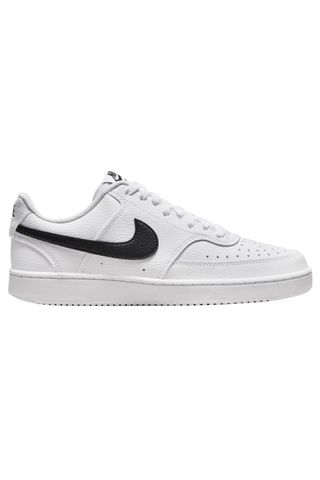
Another pair of sneakers I'm considering scooping up are these Nikes. These white sneakers may be simple, but that's what I like about them. And because they're made of all leather, they clean up easily. Save even more with one of our Champs promo codes .

For those days I need to switch it up from jeans (I'll be traveling for over two weeks, after all), I'll be wearing this denim skirt. It's just as easy to style as my jeans with sneakers and T-shirts, but it feels more forward and fun. Save even more with one of our Bergdorf Goodman promo codes .
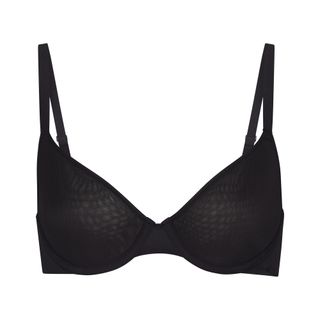
Weeks of travel calls for comfortable bras and SKIMS is most well-known for their comfort. This demi bra has breathable, lightweight cups, making it the ideal pick for long days spent walking. Save even more with one of our SKIMS promo codes .

This jumpsuit would take zero thought to style, which is why it's most likely ending up in my suitcase. I'd throw on a pair of sneakers and a crossbody bag and call it a day. Save even more with one of our Mango promo codes .
Stay In The Know
Marie Claire email subscribers get intel on fashion and beauty trends, hot-off-the-press celebrity news, and more. Sign up here.
Brooke Knappenberger is the Associate Commerce Editor at Marie Claire, where she writes across the board from fashion and beauty to books and celebrities. As a pop culture junkie, Brooke obsessively consumes and writes about the latest movie releases, streaming TV shows, and celebrity scandals. She has over three years of experience writing on fashion, beauty, and entertainment and her work has appeared on Looper, NickiSwift, The Sun US, and Vox Magazine of Columbia, Missouri. Brooke obtained her Bachelor's Degree in Journalism from the University of Missouri’s School of Journalism with an emphasis on Magazine Editing and has a minor in Textile and Apparel Management.

A woman has alleged that she's the inspiration behind the character Martha in the hit Netflix series.
By Quinci LeGardye Published 30 April 24

Elle Fanning is just the latest to spend spring in one of its easygoing pieces.
By Halie LeSavage Published 30 April 24

The shirt, worn by Zendaya and Josh O'Connor in the film, has become a pop culture phenomenon.
By Sadie Bell Published 30 April 24

With the weather heating up, your closet should too.
By Brooke Knappenberger Published 12 April 24

Spring sales are in full bloom.
By Brooke Knappenberger Published 5 April 24
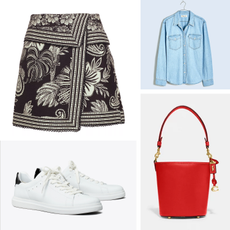
It's time to build up your warm-weather office wardrobe.
By Brooke Knappenberger Published 29 March 24
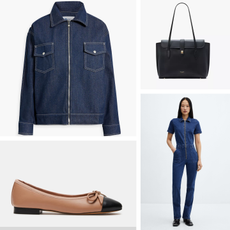
Warm-weather sales are officially in full swing.
By Brooke Knappenberger Published 22 March 24
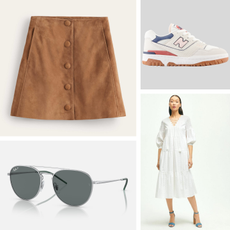
Plus summer dresses, vacation-ready pieces, and designer sandals.
By Brooke Knappenberger Published 14 March 24
- Contact Future's experts
- Advertise Online
- Terms and conditions
- Privacy policy
- Cookies policy
Marie Claire is part of Future plc, an international media group and leading digital publisher. Visit our corporate site . © Future US, Inc. Full 7th Floor, 130 West 42nd Street, New York, NY 10036.

COMMENTS
What to Pack for Europe - 28 Essentials. 1. Neck Wallet. Europe is notorious for its pickpockets, especially in cities like Paris, Rome, London, Barcelona, Amsterdam, and Dublin. An RFID-blocking neck wallet allows you to easily conceal your cash, credit cards, phone, eyeglasses, and hotel keys while not screaming, "I'm a tourist!".
️ Pro Tip: If you are planning to travel during the COVID-19 pandemic, be sure to include all of these items on your Europe travel essentials list. Other Helpful Resources for Europe. ️ How to Plan a Trip to Europe: The ULTIMATE Guide for 2024 ️ The Ultimate Europe Bucket List: 101 Experiences to Have in Europe
Europe Travel Packing: How to Pack for Europe. One of the essentials when traveling in Europe is to pack light. If you're like most people, you probably have at least a couple of European cities or areas on your travel itinerary. Dragging and lifting big, heavy suitcases from airports to hotels onto trains and along sidewalks is a stressful ...
We recommend Europ Assistance and vti.travel. Europe Travel Packing List. As a summary, here is our ultimate travel packing list for Europe: Suitcase/travel backpack. 3-4 t-shirts. 2-3 blouses or shirts. 1 dress/elegant shirt. 1 cardigan/sweater. 1 lightweight jacket. 1 pair of dark wash jeans. 1 pair of trousers/capris. 1 pair of shorts. 1-2 ...
Hi, I'm James and I've been teaching people how to travel Europe on a budget since 2010. I created The Savvy Backpacker to be the most comprehensive resource for planning your trip to Europe. Join me to learn more about the best travel backpacks, train travel in Europe, curated packing lists, European city travel guides, cheap data plans ...
What to Wear in Europe - Western Rise Men's Travel Clothing. Passport — This is obvious, but you won't make it far without a passport. Credit Cards — We use several travel credit cards offering purchase protection, rewards, and no foreign transaction fees. Visa — If required, Make sure you have a visa.
We also travel with carry-on baggage, therefore, all of our toiletries must be 100ml or less. If you plan on staying in hotels (and even some cool hostels) around Europe, small toiletries will usually be provided. Hanging Toiletry Bag. Compression Packing Cubes. Small containers (100ml) for refills.
The Basic Stuff To Pack For Europe. On top of the essential items listed above, here is an additional suggested checklist of what to pack for a trip to Europe: 1-2 pairs of comfortable pants/jeans. 1-2 pairs of shorts (summer/late spring) A few pairs of socks. (Sexy) underwear x 2/3.
Bring a hat, sunglasses and plenty of high SPF sunscreen. Discover Europe in 14 days on European Whirl. 5. Rain protection. You also need to consider the rain when planning a trip to Europe. Come prepared in any season with a raincoat, small travel umbrella or rain poncho. 6.
Make sure you have most, if not all, of our travel-tested Europe Travel Essentials for your next (or first!) European adventure. You'll thank us. We promise. Welcome to the ultimate Europe packing list for 2024! Whether you're embarking on a romantic getaway, a backpacking adventure, or a family vacation, this comprehensive guide will ...
This hydrating hand sanitizer from Touchland comes in a travel-friendly size packed with 500 sprays per bottle, and it comes in 13 fresh scents. The formula used for this sanitizer makes it smooth ...
1-2 Tank Tops/Base Layers. If your trip is during winter, having a tank top or light base layer will keep you warm without having to result in a bulky coat or jacket. 1 Sweater. Depending on the season or region, a cosy wool sweater or a light cardigan is a great idea when packing for 2 weeks in Europe.
This list of 15 Europe travel essentials will ease your mind and set you up for success on your upcoming travels! Use this as a checklist to make sure you have all of your Europe travel essentials. 1. Universal adapter. A universal travel adapter is an absolute essential when traveling to Europe.
Pro Europe travel tips are bringing cash and your credit card too. Bring cash that's at least a day's worth of meals and transportation in case the ATMs or your credit card won't work. Then upon arrival, withdraw in local currency using the ATM. Use your credit card to pay for larger expenses like hotels and restaurants.
Bring a mix of short-sleeved and long-sleeved shirts or blouses. Shirts with long sleeves that roll up easily can double as short-sleeved. Look for a wrinkle-camouflaging pattern or fabric. Synthetic-blend fabrics (such as Coolmax or microfiber) usually dry overnight. Lightweight, light-colored clothes are more comfortable in very hot weather.
Top Europe Travel Essentials. These are the top travel items that should be on everyone's Europe packing checklist. Don't leave home without them. Have these travel necessities before you arrive at your destination to ensure a seamless start to your trip. Otherwise, you'll be frantically searching for these items in Europe instead of ...
Europe Travel Necessities. There are a few specific things you'll need to bring if you're traveling in Europe, especially if you'll be staying in hostels or places with shared amenities. By the way, don't be scared of hostels: the hostels in Europe tend to feel more like boutique hotels. They literally have "luxury hostels," which ...
Quick Tips For Packing Light While Backpacking Europe. First, I suggest limiting yourself to 20-22 lbs worth of gear (including your backpack). If you exceed 22 lbs (10kg), you run the risk of exceeding the carry-on weight limit for budget airlines. Even if weight limits aren't an issue, I still suggest keeping your weight around 20 lbs for ...
Visa (If Needed) — Though 26 countries in Europe are part of the Schengen Zone that allows many nationalities (including US citizens, Canadians, and Australians) to enter and travel freely between their countries for 90 days for tourism, that still leaves around half of Europe's countries that are not part of this agreement. Regardless of where you are from, always double-check entrance ...
In December, with temperatures in the mid-50s and rainfall at nearly 4.7 inches during the month, you'll need to include some rain boots on your winter packing list for Europe with this destination. In January, temperatures drop ever so slightly to the low 50s and rainfall takes a good fall down to 3.7 inches for the month.
Laundry Detergent Sachets. A pack of travel laundry detergent sachets or these little laundry detergent sheets make it quick and easy to wash your items in a hotel sink in the evening and leave them to dry overnight. Hotel laundry is expensive and there are rarely self-service laundries in hotels in Europe. A travel sink stopper is also a good ...
Headphone Splitter. If you're travelling as a couple and you both want to watch the same show or movie (or listen to the same music!) while on a plane, bus, or train, then a headphone splitter is one of the best travel items for Europe for you. Instead of sharing a pair of in-ear headphones to be able to watch the same movie, a headphone ...
They're also great if you're planning on camping throughout your trip. I highly recommend the Anker Powercore Power Bank as one of my essentials for backpacking Europe as it's one of the most lightweight power banks on the market. 4. Travel Insurance. Travel insurance is something to consider when backpacking Europe.
The best on-sale travel finds our shopping editor found this week, including a Tory Burch tote bag, AGOLDE jeans, a TOTEME jacket, and more. ... 18 Spring Travel Essentials I'm Scooping Up for My ...